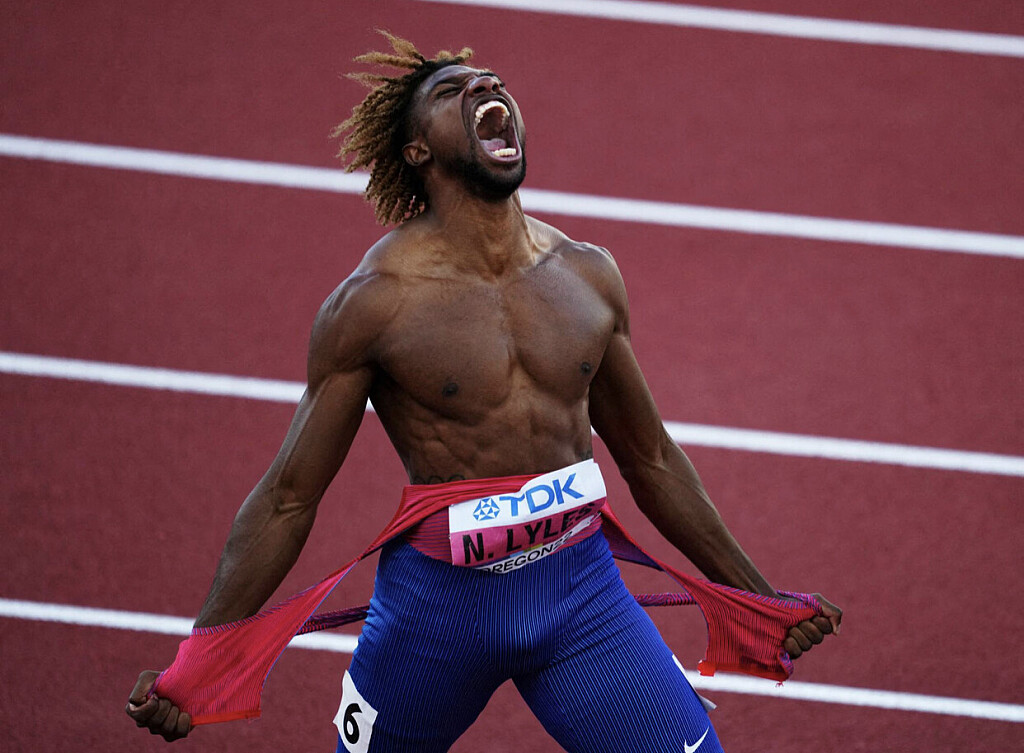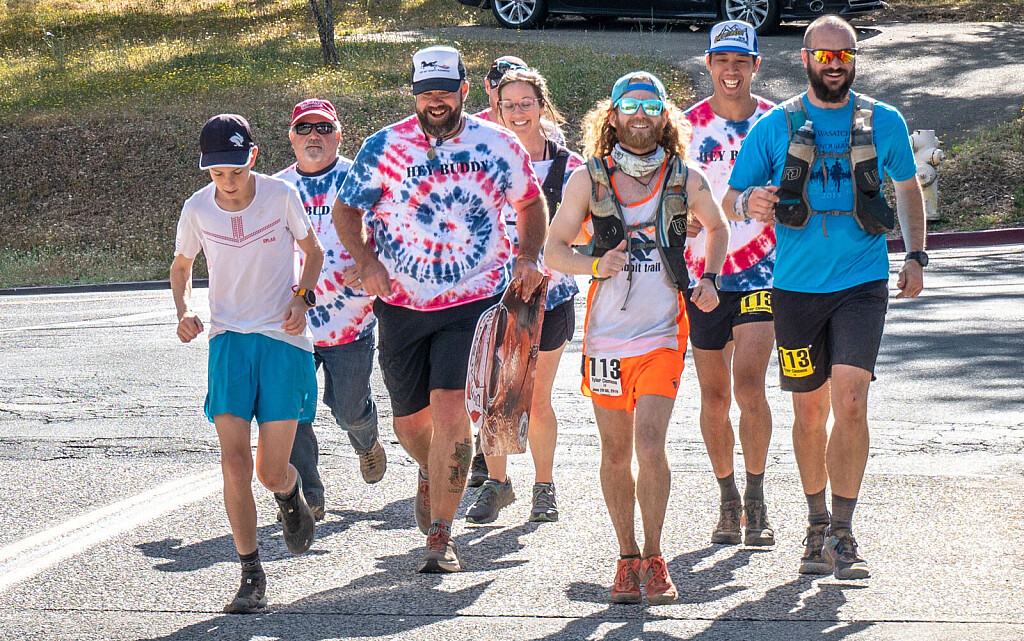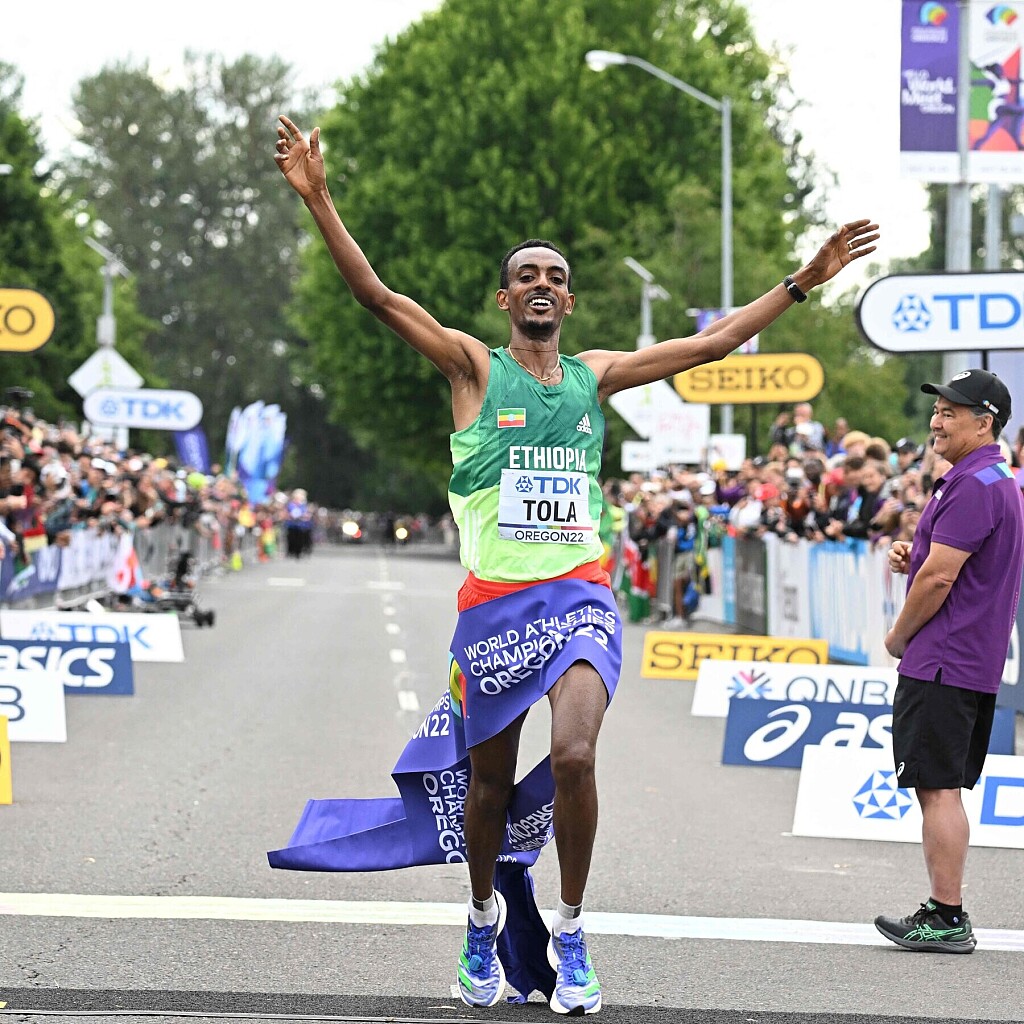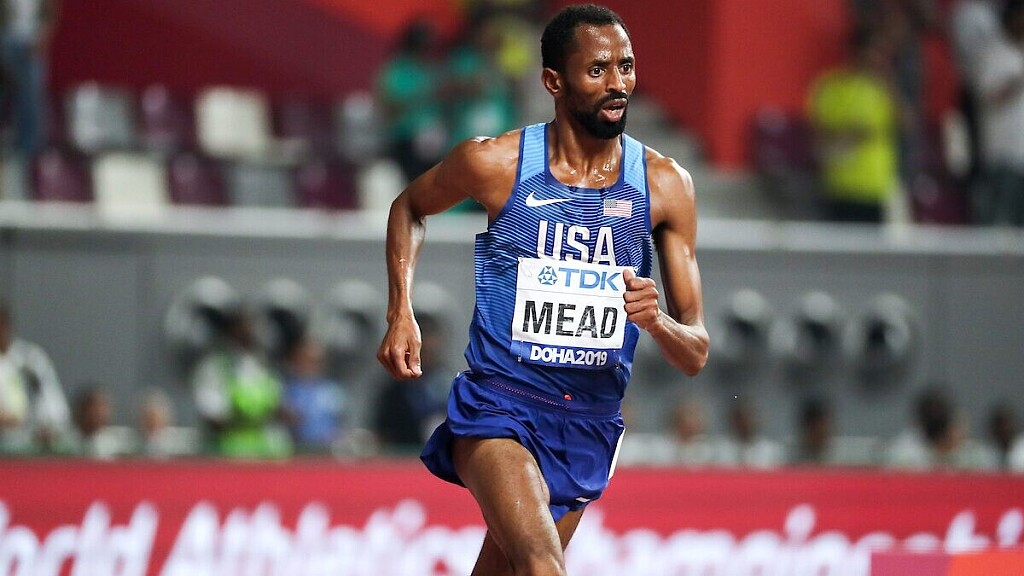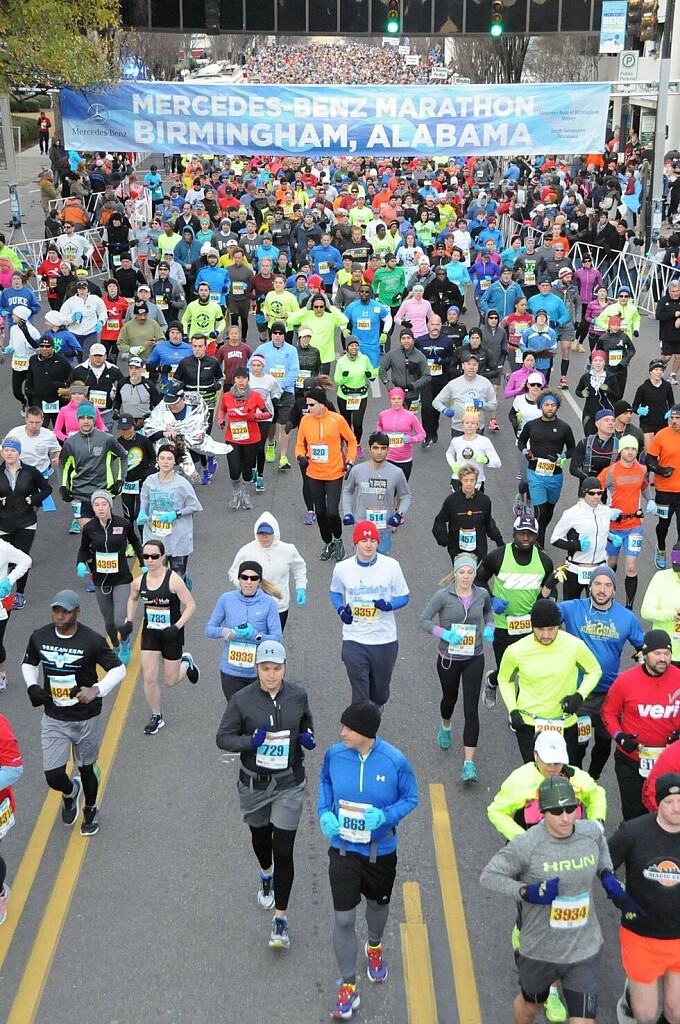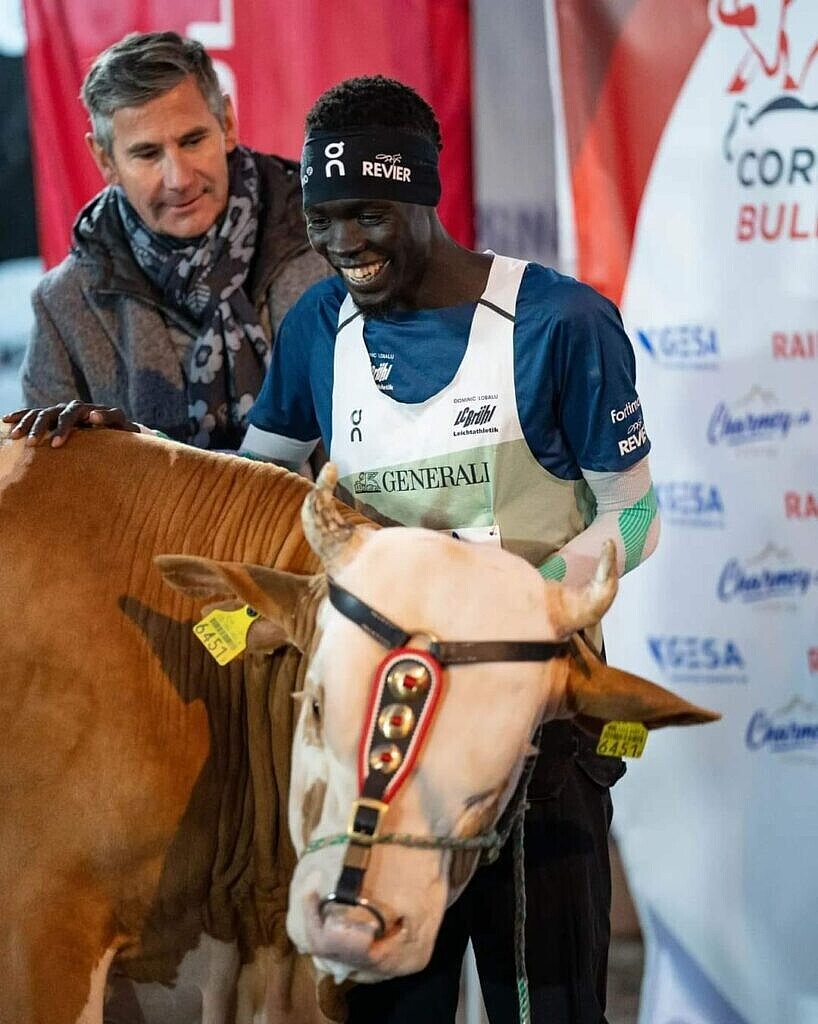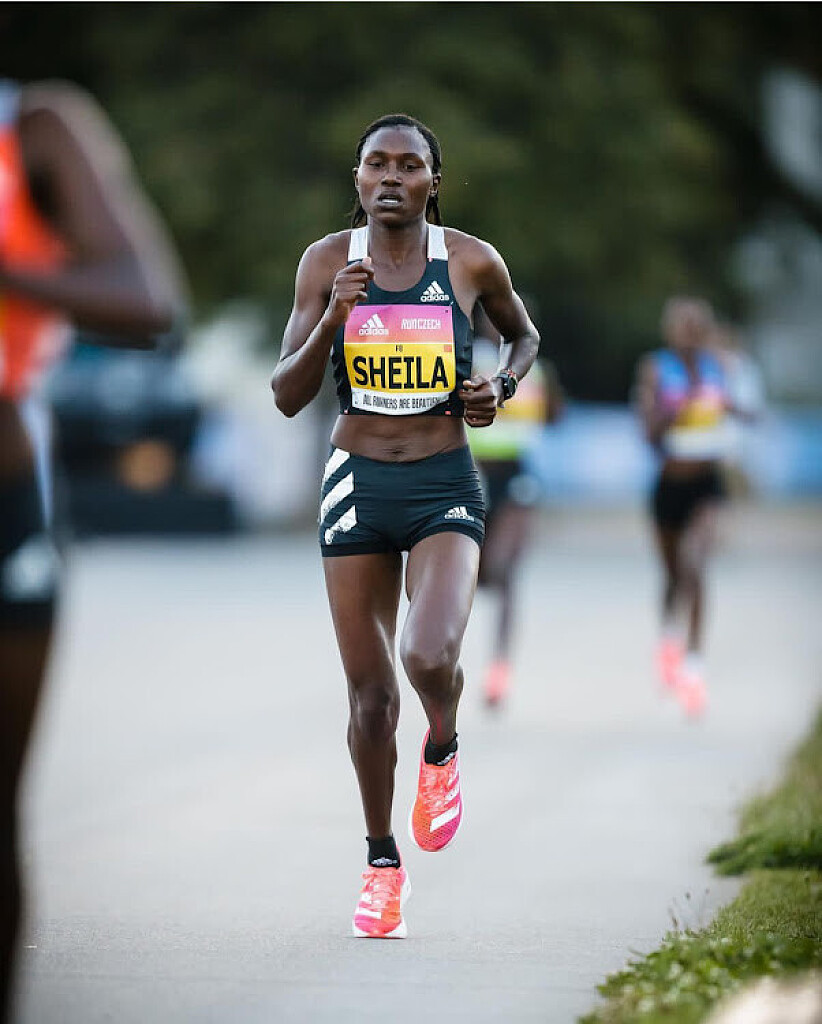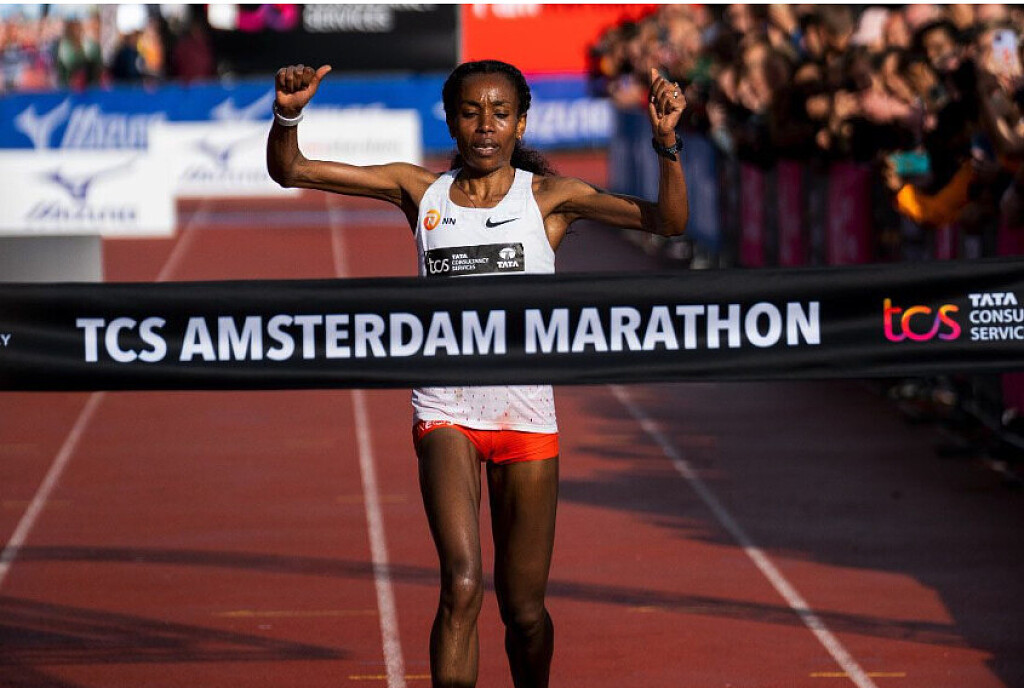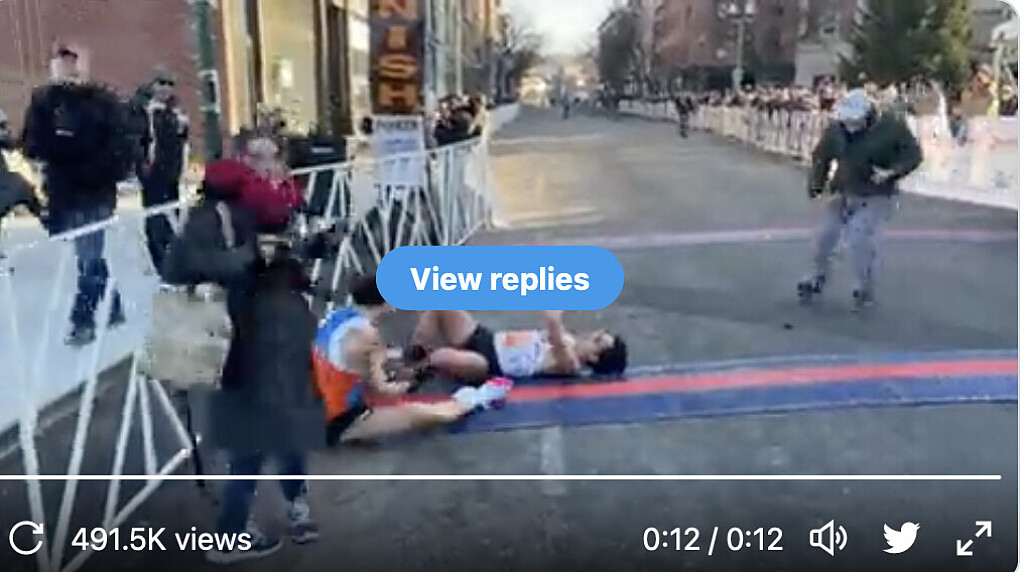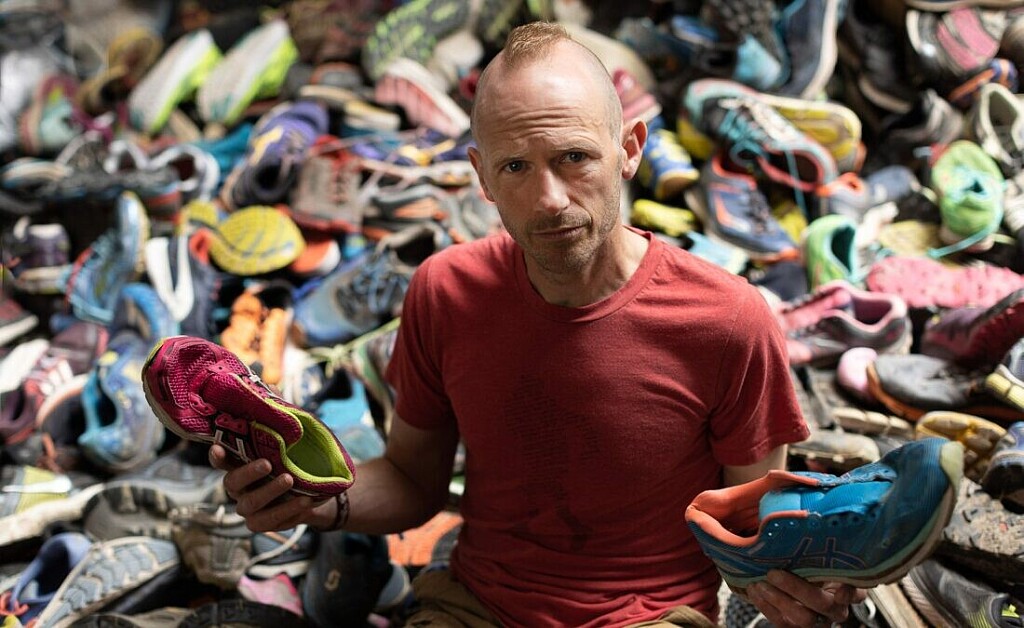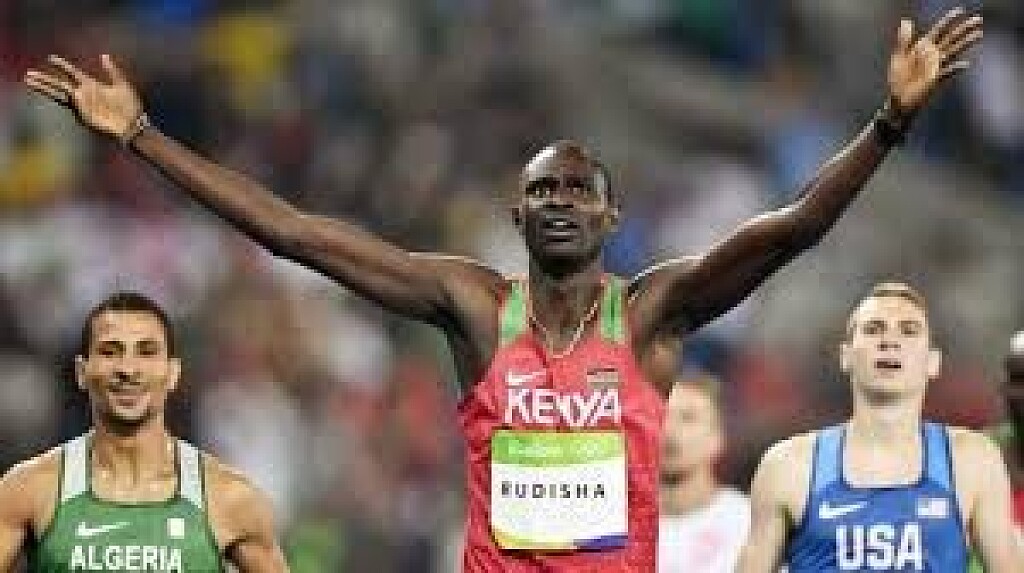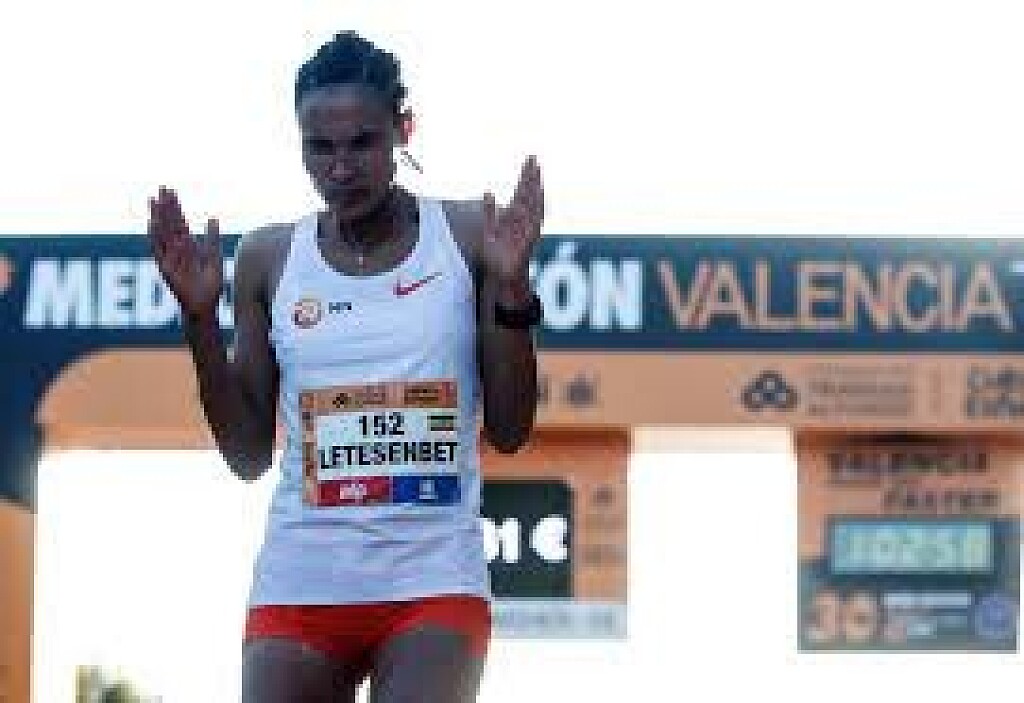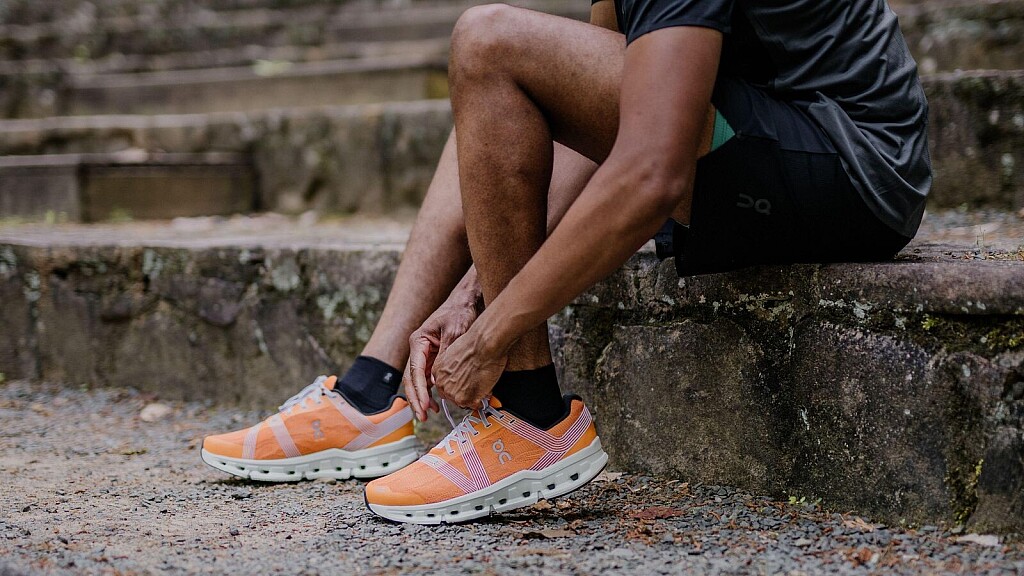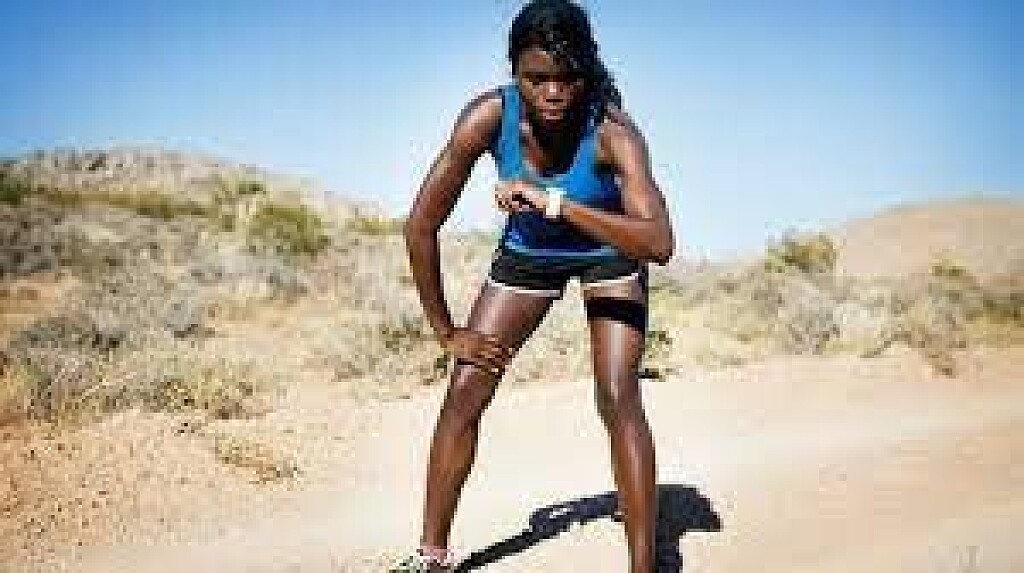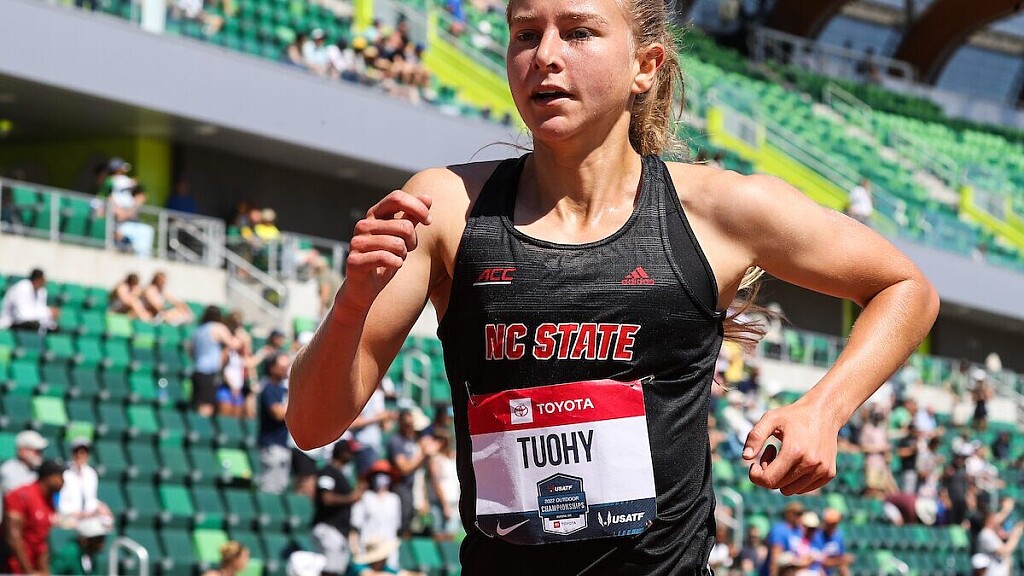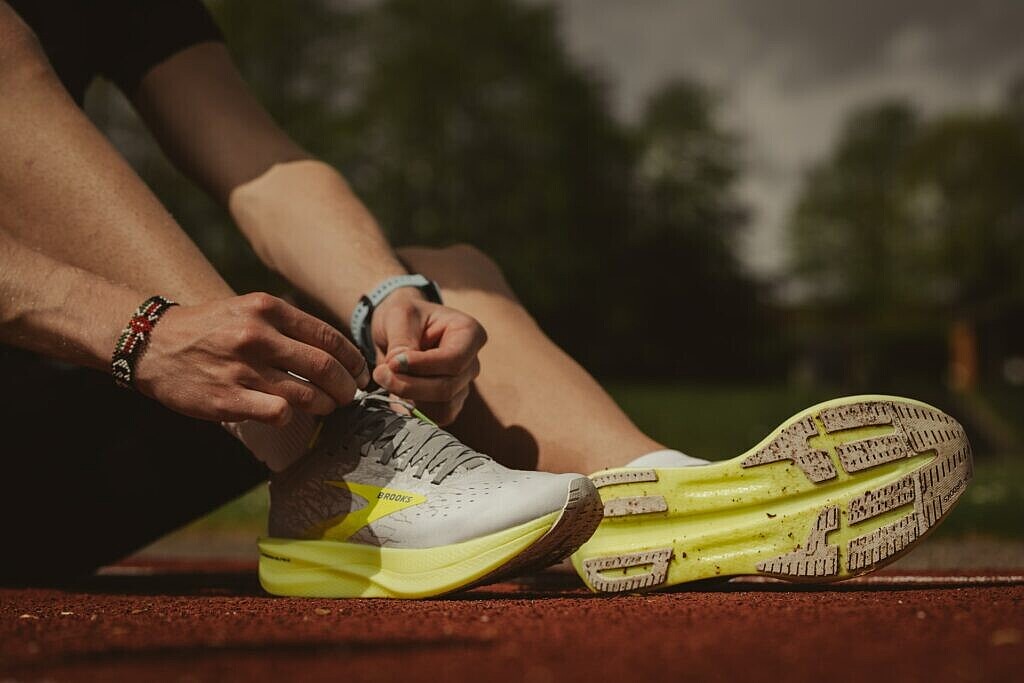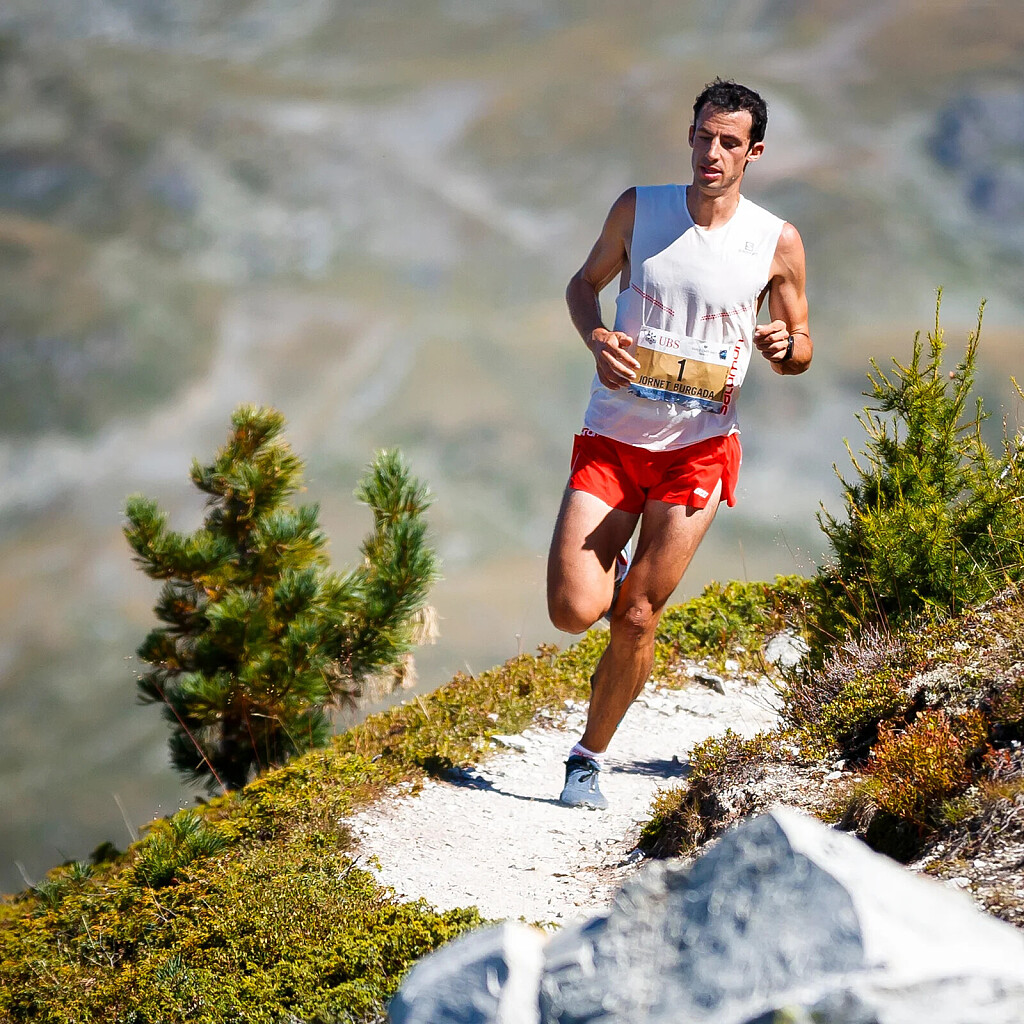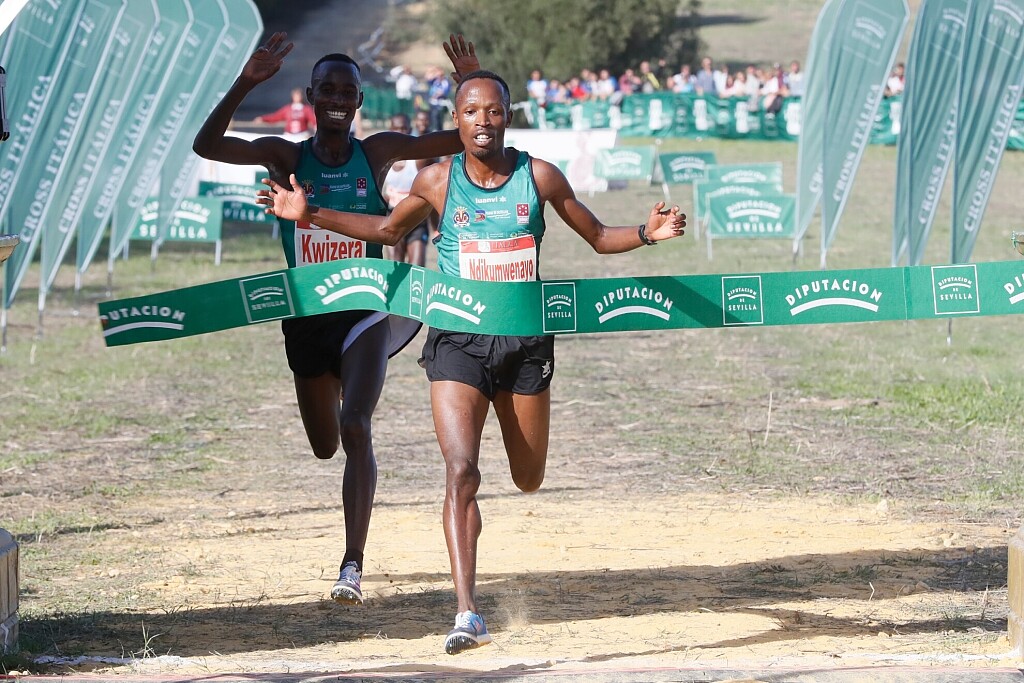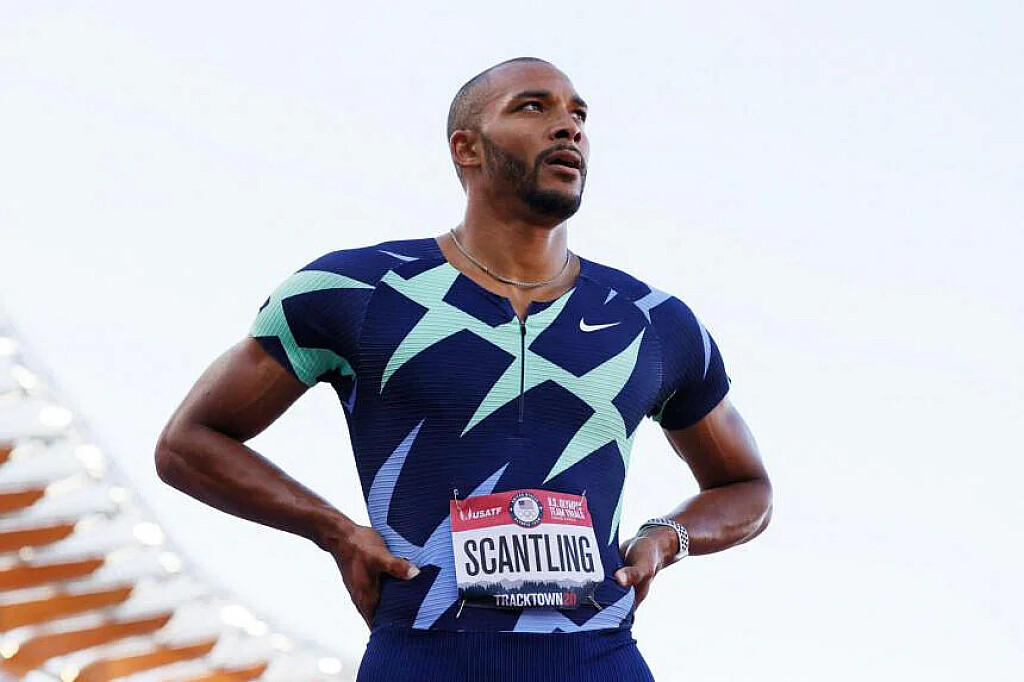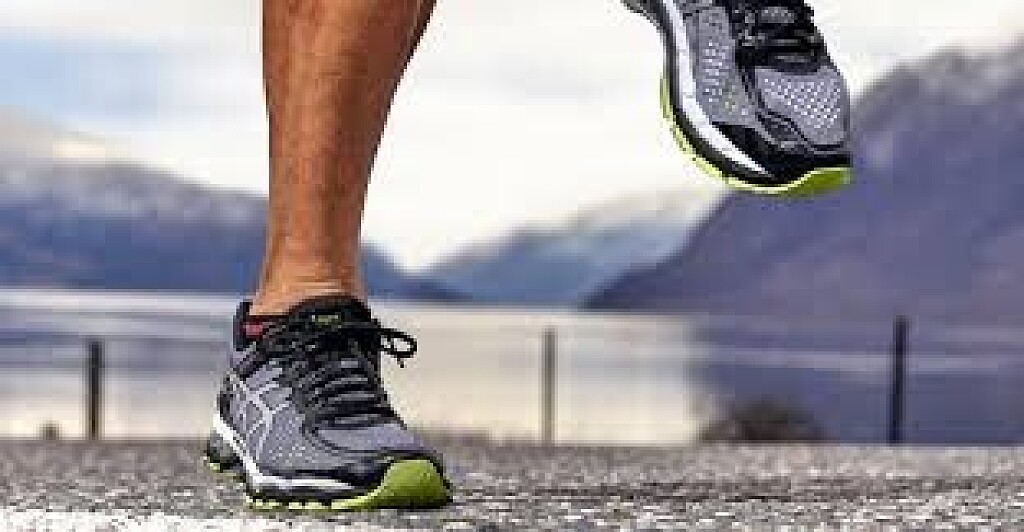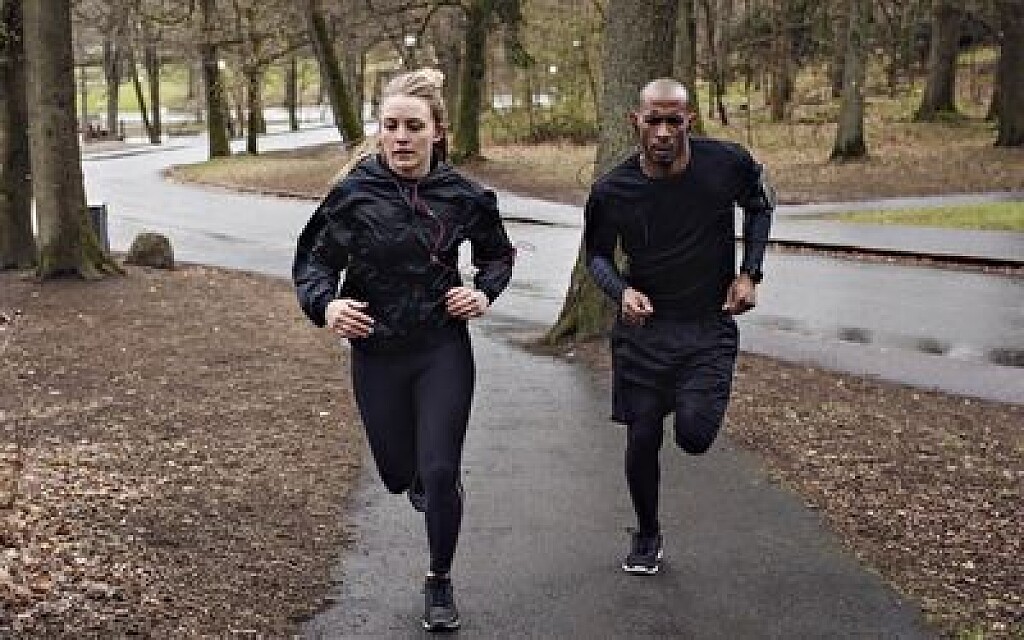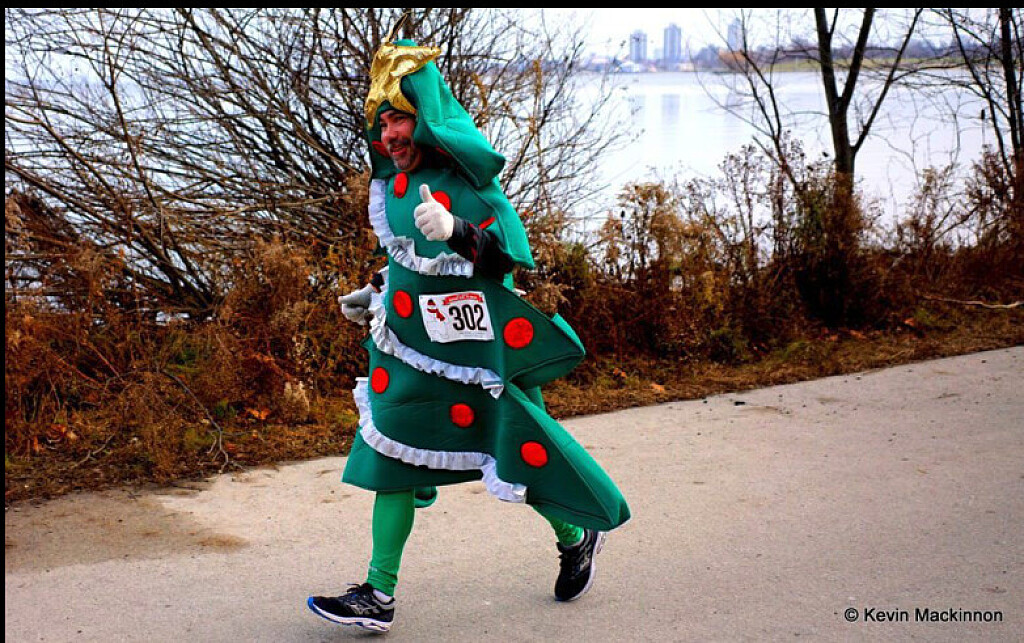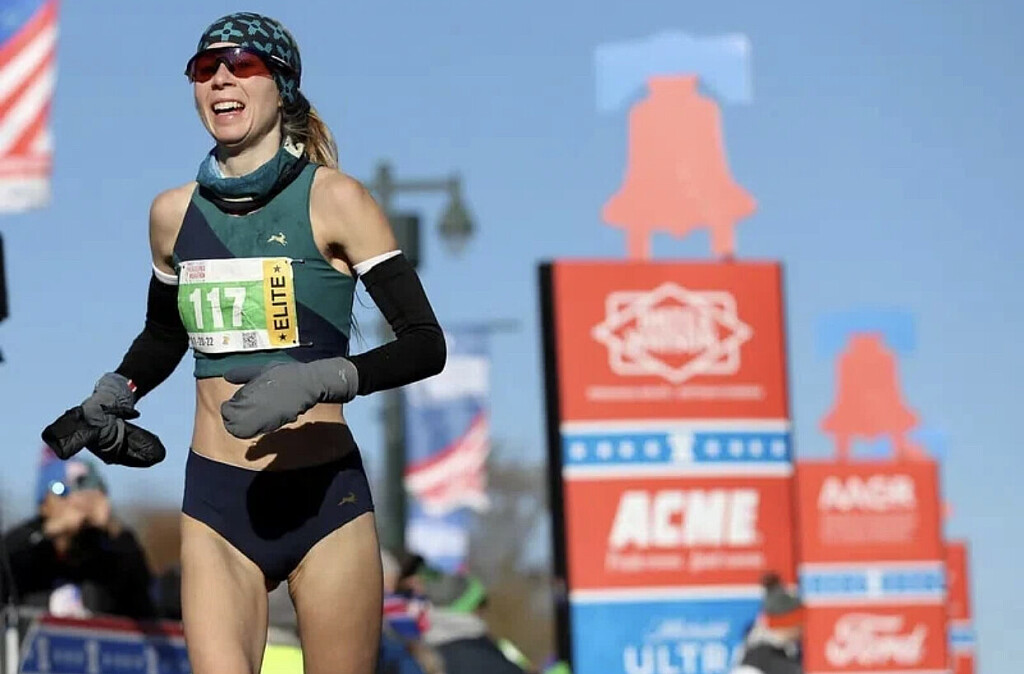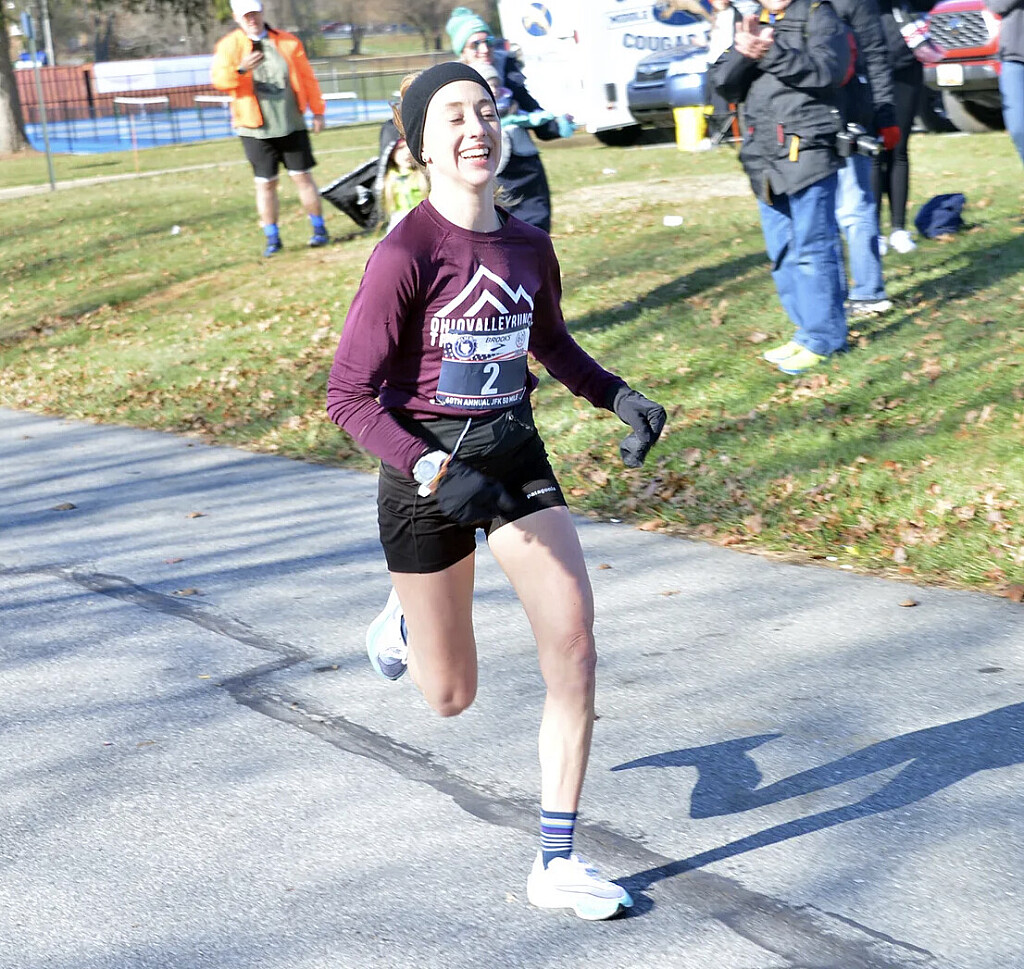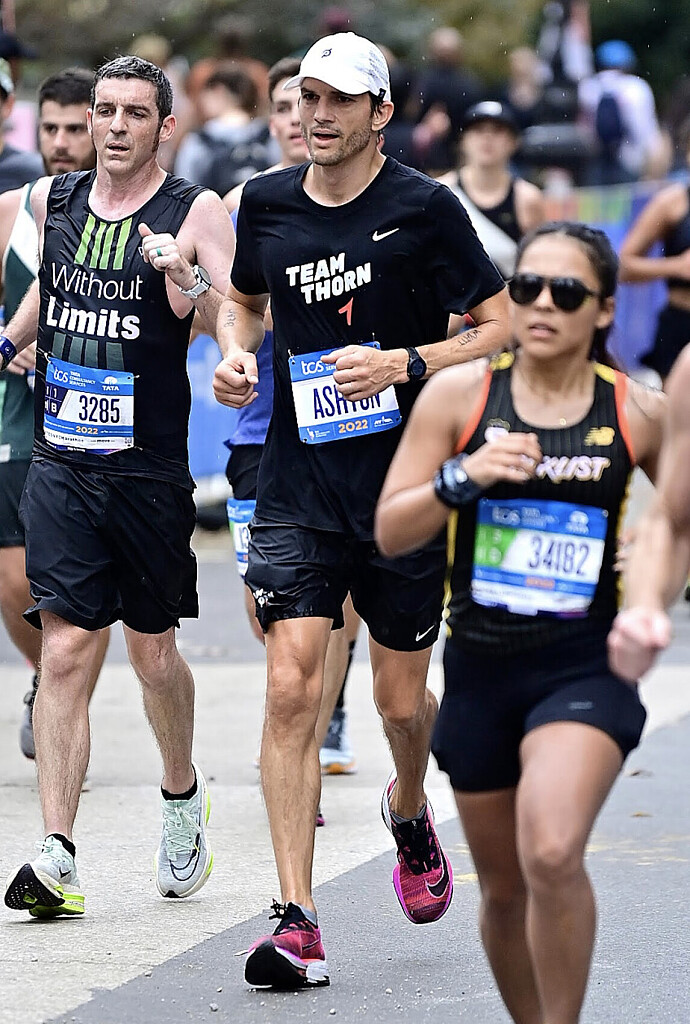Running News Daily
Running News Daily is edited by Bob Anderson in Mountain View, California USA and team in Thika Kenya, La Piedad Mexico, Bend Oregon, Chandler Arizona and Monforte da Beira Portugal. Send your news items to bob@mybestruns.com Advertising opportunities available. Over one million readers and growing. Train the Kenyan Way at KATA Running Retreat Kenya. (Kenyan Athletics Training Academy) in Thika Kenya. Opening in june 2024 KATA Running retreat Portugal. Learn more about Bob Anderson, MBR publisher and KATA director/owner, take a look at A Long Run the movie covering Bob's 50 race challenge.
Index to Daily Posts · Sign Up For Updates · Run The World Feed
Tokyo to host the 2025 World Athletics Championships
The 2025 World Athletics Championships in Tokyo will be held on Sept. 13 to 21, the athletics world governing body said Wednesday.
World Athletics initially wanted the meet at the National Stadium to be held in late August, but organizers in Japan said mid-September would be better given the intense summer heat.
The Sept. 13 start date will be the second closest to the end of a year in the history of the championships, behind 2019’s meet in Doha that began on Sept. 27.
All of the championships events will be in Tokyo, including marathon and race walk, which were relocated to Sapporo at last year’s Tokyo Olympics amid heat concerns.
“We will try to gain the understanding and support from Tokyo residents and Japanese citizens as we prepare to stage the meet,” said Mitsugi Ogata, president of the Japan Association of Athletics Federations.
(12/01/2022) ⚡AMPWestern States 100 aims for inclusivity in updated policies for transgender, non-binary, and pregnant athletes
One of the oldest and most respected ultratrail races in the world has taken a further step at making their race more inclusive. On Wednesday morning, the board of Western States Endurance Run (WSER) released policy updates around transgender and non-binary entrants, as well as an updated pregnancy deferral policy.
WSER says that these new rules align with their “goal of ensuring fair and inclusive practices that respect the personal rights and dignity of transgender and nonbinary entrants while preserving the integrity of competition for awards and records.”
In October, Riley Brady became the first ever non-binary athlete to secure a golden ticket to WSER, finishing second at Javelina Jundred 100-mile race. While Ultrasigup allows runners to choose from three gender categories, it was the first time that Javelina Jundred organizers had included a non-binary division. An already urgent and important conversation about the need to expand inclusivity in ultrarunning–and inclusivity in general in the sport–became heightened after Brady’s remarkable performance.

In an article Brady coauthored with coach David Roche in trailrunnermag, Brady explains: “Leading up to Javelina, I had emailed the race directors to inform them that I was seeking a Golden Ticket, which the race organization asks you to do. On my Ultrasignup page, I have indicated my gender as ‘nonbinary’ and my division as ‘female.’
As this was the first year Javelina had a non-binary division, the live results updates defaulted to the gender category. “As I understand it now, that misunderstanding may have contributed to some confusion online after the race, even as I emailed them in advance and followed the rules at every step,” shared Brady.

While WSER already had policies in place for transgender athletes, they have now clarified and updated those regulations, as well as added clear rules for non-binary entrants and an updated and more inclusive pregnancy deferral policy.
Updates for transgender athletes
Transgender women can register to compete in the female category, provided they have been undergoing continuous, medically supervised hormone treatment for gender transition for at least one year prior to the race, or in the male category with no restrictions.
Transgender men can register to compete in the male or female category, unless they are undergoing hormone treatment related to gender transition that includes testosterone or any other banned substance in which case they must register in the male category.
Policy for non-binary athletes
During registration all entrants will have the opportunity to select their gender category–male, female, or non-binary. Entrants who select nonbinary will also need to choose a category (male or female) for results and awards.
Non-binary entrants who are male-assigned at birth must select male as their category for results and awards, unless they meet the requirements for transgender women to compete in the female category under this policy.
Non-binary entrants who are female-assigned at birth can choose the female or male category for results and awards, unless they are undergoing hormone treatment related to gender transition that includes testosterone or any other banned substance, in which case they must select the male category.
Pregnancy deferral policy update
In order to defer a race entry due to pregnancy, entrants must submit a pregnancy entry deferral request in writing to the race director no later than one pm on the Friday before the race, as well as provide written confirmation of the pregnancy signed by a physician or medical professional.
The pregnancy deferral policy applies to anyone with a race entry who is pregnant at the time they enter the lottery and gets selected, becomes pregnant after the lottery and prior to race day regardless of how they obtained their race entry (lottery, sponsor etc.), or is an automatic entrant (top ten, golden ticket, etc.) and becomes pregnant or gives birth after obtaining their race entry and prior to race day.
(12/01/2022) ⚡AMPby Keeley Milne
Western States 100
The Western States ® 100-Mile Endurance Run is the world’s oldest and most prestigious 100-mile trail race. Starting in Squaw Valley, California near the site of the 1960 Winter Olympics and ending 100.2 miles later in Auburn, California, Western States, in the decades since its inception in 1974, has come to represent one of the ultimate endurance tests in the...
more...Ethiopian Tamirat Tola set to run the Valencia Marathon Trinidad Alfonso
Tamirat Tola (Ethiopia, 1991) will be one of the big names on the elite list for the Valencia Marathon Trinidad Alfonso who will take to the starting line on December 4, with the clear goal of lowering the current best time over the Valencian course, set at 2h03:00 in 2020. This will allow the race to continue climbing up the international marathon rankings, in which it currently holds the fifth best record in history.
The Ethiopian runner, who was recently proclaimed World Marathon champion at the World Athletics Championships in Oregon (USA), will enter the race with this international recognition, but also following a sensational personal best over the distance of 2h03:39, achieved less than a year ago in Amsterdam. Tola is a very robust and versatile athlete, with a short but impressive list of achievements in cross country and on the track. At the World Championships and Olympic Games, he has a silver medal and a bronze medal, respectively, in addition to the latest World Cup gold a few weeks ago.

Tamirat Tola is optimistic regarding the challenge of beating his personal best in Valencia and also about lowering the record for the Valencia course. “It is with great pleasure that I accepted the invitation to run the Valencia Marathon after I gave up running the London Marathon. After the victory at the world championships I had to recover 15 days and this meant that with only 60 days of preparation it was not correct to show up in London. I believe that the Valencia course is one of the fastest in the world and I hope to be able to run my personal best and the race record if all conditions are favorable. See you on December 4th in Valencia”, explains the international athlete.
Tola will be the focus of much of the attention in the city of running, although he will not be the only big international elite name that the Valencia Marathon organizers have lined up to run on December 4, with other favorites to be revealed in the coming weeks.

Double Ethiopian attraction with the debut of Gidey
In addition, this 42nd Valencia Marathon Trinidad Alfonso will be the stage chosen by his Ethiopian compatriot, the athlete Letesenbet Gidey, to make her debut over the distance of 42,195 meters. The Ethiopian athlete has a special love for Valencia, as two of her four world records have been achieved in the city of running. In fact, both of her performances in Valencia have resulted in a world record.
(12/01/2022) ⚡AMPVALENCIA TRINIDAD ALFONSO
The Trinidad Alfonso EDP Valencia Marathon is held annually in the historic city of Valencia which, with its entirely flat circuit and perfect November temperature, averaging between 12-17 degrees, represents the ideal setting for hosting such a long-distance sporting challenge. This, coupled with the most incomparable of settings, makes the Valencia Marathon, Valencia, one of the most important events in...
more...No ban for Kenya, says World Athletics president sebastian Coe
World Athletics president confirms east African nation will not receive a global suspension from the sport despite an alarming spate of drugs positives.
Speculation that Athletics Kenya will be barred from international competition was proved unfounded on Wednesday (Nov 30) when World Athletics president Seb Coe said the country has escaped a ban but will continue to sit on an anti-doping ‘watch list’.
Speaking at a World Athletics council press conference in Rome, Coe said the large number of top Kenyan athletes to test positive for drugs was “concerning” but the nation will not receive a Russian-style suspension due to, among other things, a pledge by the Kenyan government to plough $5 million per year into anti-doping efforts over the next five years.

“World Athletics has been concerned,” said Coe. “Kenya has been on the watch list for a few years already.
“In one year 40% of all the positive tests in global athletics have been in Kenya and this is not a situation that World Athletics was prepared to sit and watch develop.”

Coe added that there has been “a lot of recent reportage, some of which has been correct and some not. But we have made real progress.”
As well as the Kenyan government funding, Coe said the Athletics Integrity Unit (AIU) will continue to work closely with Kenya to implement the plan.
He added: “All stakeholders internationally and domestically are now aligned to resolve this situation and I am pleased we have a united response. But my instinct tells me it will be a long journey.
“This has to be collectively driven through all the stakeholders, internationally and domestically, who have a role and responsibility to solve this as quickly as possible.”
Coe said money would be spent on anti-doping education and “a deeper dive into the entourage of some of the people who surround the athletes”.
This, he said, “allows us more horsepower to challenge some of these issues”.
Kenya aside, an update on the ongoing Russian ban was tackled by Coe and Rune Andersen, head of the World Athletics taskforce on restoring Russia to global competition.
Coe emphasised that two separate sanctions exist – the anti-doping related ban and the sanction relating to the Russian invasion of Ukraine.
With regards anti-doping, good progress and cultural change has been made and Russia’s possible reinstatement into competition will be discussed again in March 2023.
Related to this, the Ukrainian Athletic Association was awarded the ‘president’s award’ as part of the World Athletics awards with Coe presenting Ukrainian AA president Yevhen Pronin with the honor during the press conference.
“I couldn’t think of anyone worthier than this for this year’s award,” said Coe. “What the Ukrainian Athletics Federation president, the coaches, and the athletes have done is just worthy of everyone’s respect and recognition.”
Elsewhere, Coe spoke about 2022 being “an immensely strong year for athletics” with four World Athletics Series events involving more than 4000 competitors from 180 countries with 554 national records and a television audience of more than one billion people.
The World Indoor Championships in Belgrade had an economic impact of $43m with the World Championships in Oregon having an impact of $273m.
The Continental Tour, meanwhile, saw 162 events with 12,000 athletes across 159 nations with 118 national records and 2400 PBs. Diamond League figures, Coe added, were not yet available for 2022.
Further council decisions included awarding the World Relays to Bahamas in 2024 as a qualifying event for the Paris Olympics. The road mile will become an official world record event from January. And the World Road Running Championships will switch from a biennial event to annual from 2025.
(11/30/2022) ⚡AMP
by Jason Henderson
Yoga for feet, toes and ankles: give your neglected lower limbs some help
You probably don’t pay enough attention to your feet. We’re all guilty of it–even those of us that fit mobility and strength work into our training routine tend to focus on quads and hamstrings, the larger leg muscles. As a runner, your feet probably take a fair bit of abuse, and the smaller muscles there deserve some care and attention.
Not only will your feet feel amazing after these stretches, they’ll also be better equipped to handle the uneven terrain you run over in winter or on trails, providing stability to the rest of your body. Keeping your feet mobile and flexible can be a game changer–healthy, strong feet lead to more efficient, pain-free running.

Easy ways to target feet and ankles
Try these simple stretches when you’re watching TV, or while sitting at your desk. Get started by rolling your ankles in gentle circles. From a seated position, try lacing your fingers through your toes to clasp your foot, and gently guiding it in circles.
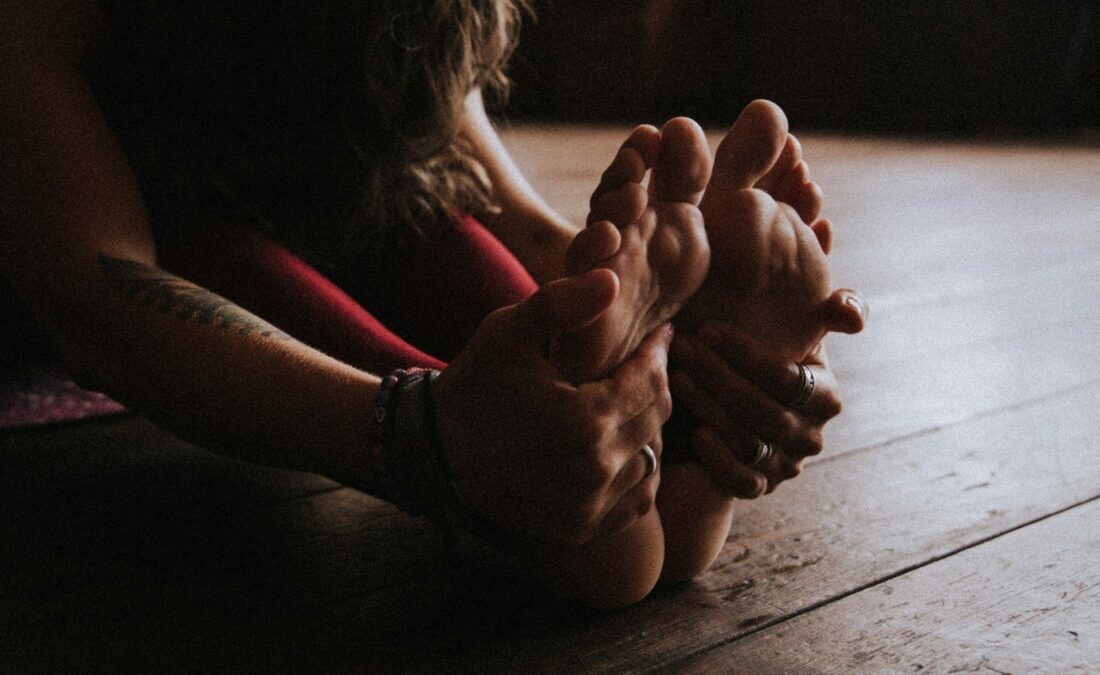
Scrunch your toes up tightly and release, repeating a few times. Finally, place your feet flat on the ground and (without using your hands) stretch your toes out as widely as possible, gripping the ground with them (think of a lizard). Hold for a few seconds, release, and repeat.
Toe squat
Sitting in a toe squat can be challenging, and you’ll notice immediately if your feet are tight. While you can stay in this pose for several minutes to really give your feet and toes a release, it’s OK to start small at first and release when you need to.
Kneel on the floor with your toes tucked under and heels up. Aim to be on the balls of the feet, not the tippy toes. Reach down and tuck the little toes under if they’re escaping.
Slowly shift your hips back so your butt rests on your heels and you feel a deep stretch. Hold for 30 seconds to two minutes. Focusing on keeping a nice, steady breath can be helpful to make the time pass and lessen the intensity.
To release, shift forward, place your hands on the ground and untuck your toes. If it feels good, tap your feet on the ground as a release.
Modifications
If the feeling in your feet becomes too much, shift forward onto your knees to take the weight off your feet at any point, coming back to the pose when you’re ready. Intensity is fine here (and expected) but if the posture is actually painful, come out. If having your knees on the ground is uncomfortable, place a folded blanket under them to add more cushioning.
To deepen the stretch, shift your hips further back.
Ankle stretch (also targets the feet)
This pose follows the deep foot stretch perfectly, and you can move right into it, or take a break and come back.
Return to a kneeling position with feet flat on the ground, toes untucked. Bring fingertips to the floor next to your hips or place them on blocks (stacks of books work just fine).
Sit back onto your heels and shift your weight back as you lift your knees off the floor. You’ll start to feel a stretch around your ankles and the tops of your feet.
Modifications
If your feet feel uncomfortable on your mat or the ground, try adding a folded blanket there for cushioning.
To take the stretch deeper, place your hands on your knees and gently pull them toward you.
Tennis ball massage for feet
Try this short, guided tennis ball massage for your feet to help release every inch.
(11/30/2022) ⚡AMPby Running Magazine
Understanding the basics of speedwork to improve your racing pace
Speedwork is one of those words runners toss about while meaning different things. It encompasses a variety of workouts and has a range of physiological and mental benefits, and there’s an entry point for every runner. Here’s what you need to know about speedwork, and why it should be a regular part of your running repertoire.
Whether you are training for a 5K or a marathon (or even an ultra), speedwork should be a component of your weekly mileage. The benefits of speedwork are well-researched and multifaceted.
What is speedwork?
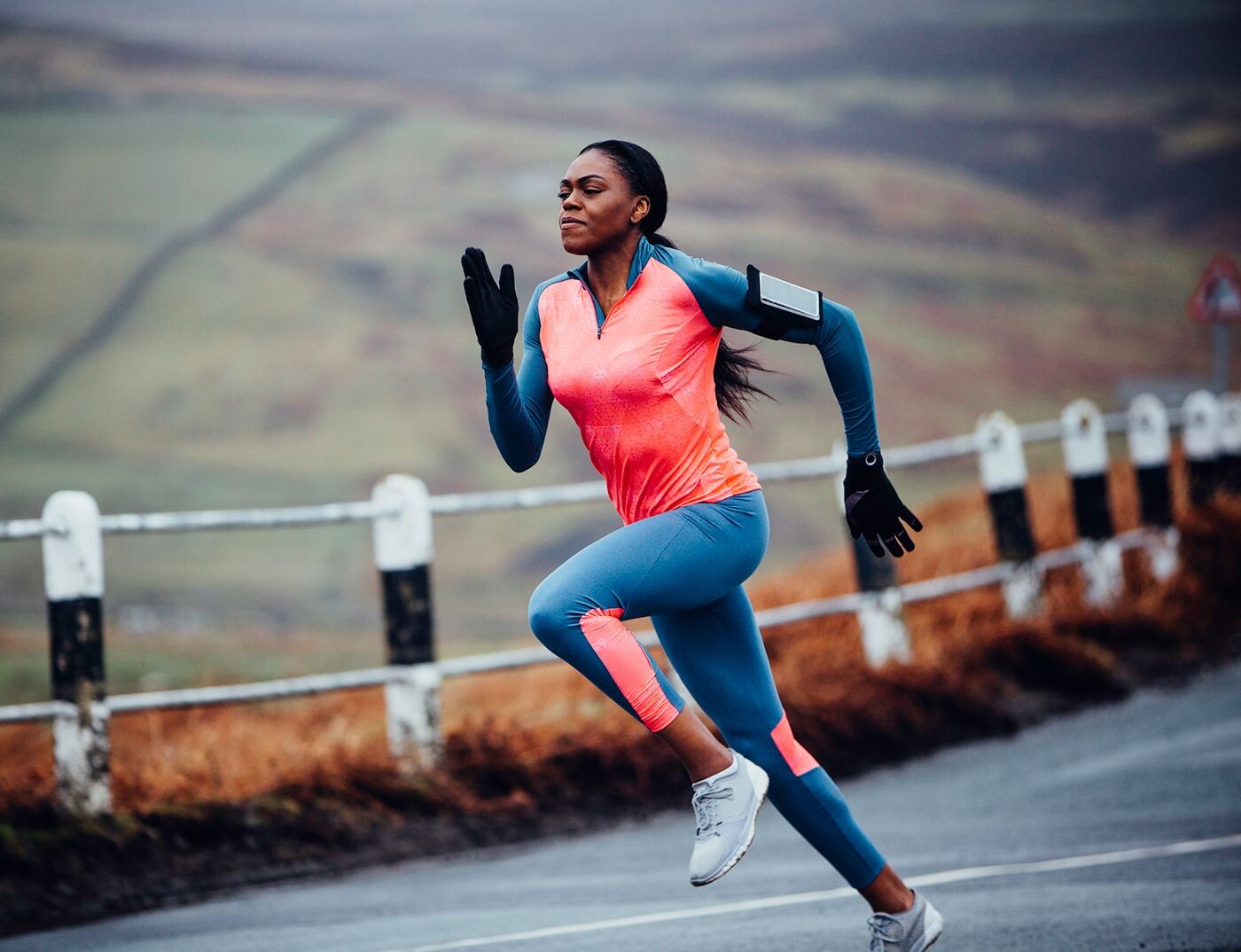
Speed training (when done in interval sessions) involves running multiple bouts of certain distances at high intensities with recovery in between. Intervals (or repeats) can range from 15 seconds to 20 minutes (or even longer), depending on what distance you’re training for. Tempo runs, fartlek workouts and accelerations can all serve as different forms of speedwork.
While the majority of your running should be easy, at least one workout a week should include something more challenging. Legendary coach and author Jack Daniels writes in Daniels’ Running Formula that it’s always important to know the purpose or intention of each workout. Regardless of what it’s called, if the purpose is to improve speed, you’re doing speedwork.
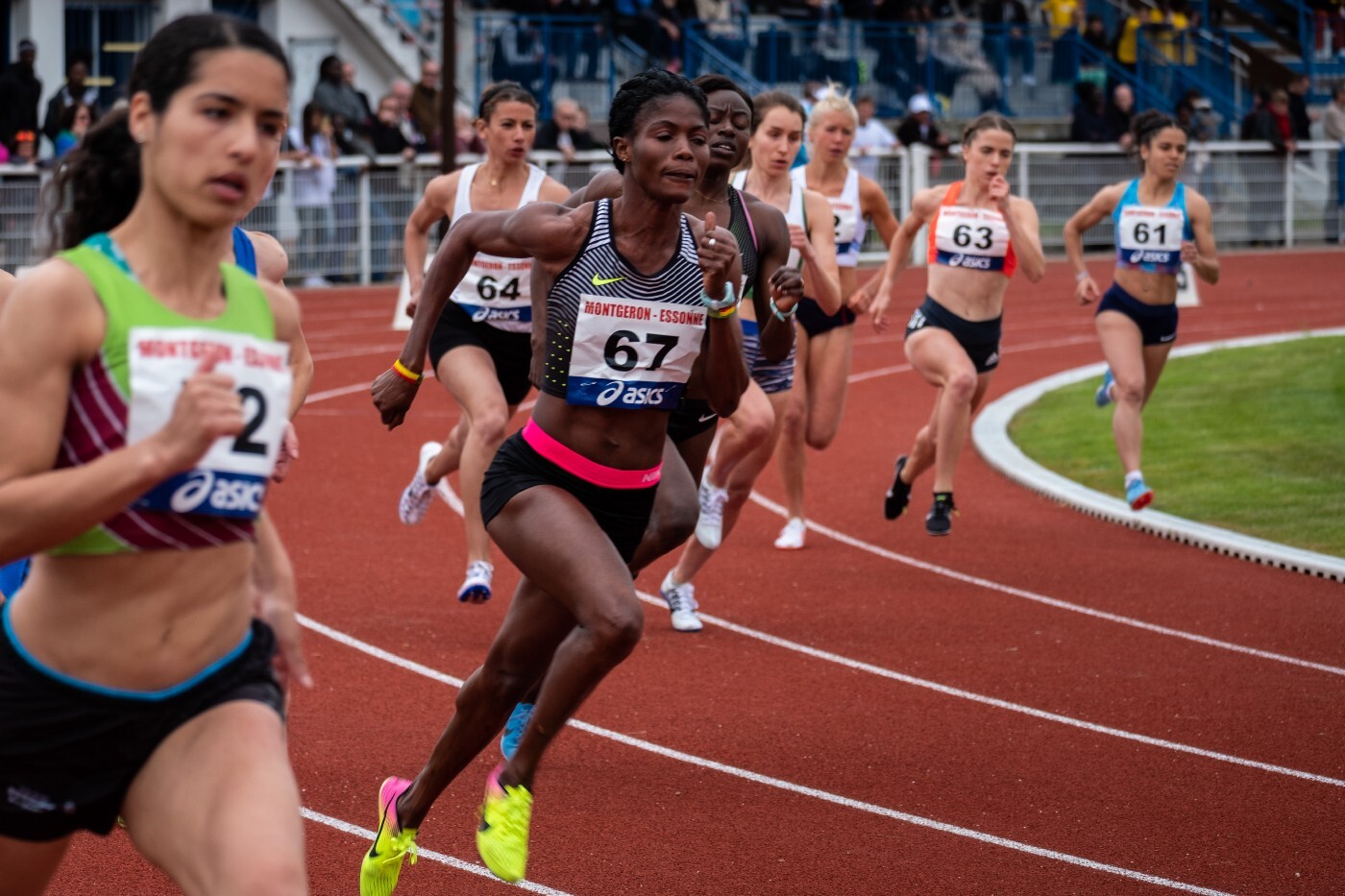
The overload principle
The overload principle is the idea that regular exposure to a specific exercise will enhance certain physiological functions, and in doing so, elicit a training response: your fitness improves. If you run at faster speeds, even for very brief periods, your body will learn and adapt, and you will become stronger and faster. This is the basis of speedwork or any training effect you may be working toward while you run.
What happens during speedwork
During speed sessions, our body is forced to recruit more muscle fibres to provide aerobic energy. The result–running economy, or how efficiently your body is able to use oxygen at a certain pace, improves.
Your body will also increase the production of myoglobin during fast workouts. Myoglobin helps transport oxygen to the muscles and then to the mitochondria. With increased myoglobin, the higher demand for oxygen is met. Speed training can also improve your anaerobic threshold: the highest exercise intensity that you can sustain for a prolonged period without lactate substantially building up in your blood.
During speed sessions, glycogen is providing upwards of 90 per cent of your energy. When you begin doing speedwork, you’ll burn through that glycogen quickly, but over time your muscles will adapt and store more glycogen for future workouts.
Mentally, speedwork teaches your brain to handle more pressure (easy runs should be low-pressure days) and harder work. As you challenge yourself in workouts, you’ll be better prepared to handle the effort on race day.
Get started today
If you’re thinking about adding some faster running into your program and you’re not sure where to start, simply pick one day per week and do four to eight short, 15-20 second repetitions, either on a flat road or a moderate hill. Better yet, alternate each week between hills and flat ground to give your body an extra challenge. Allow for 40-45 seconds of recovery between harder efforts for recovery, and enjoy the feeling of pushing your body a little harder.
(11/30/2022) ⚡AMP
by Running Magazine
U.S. Olympian Hassan Mead accepts three-year doping ban
Former U.S. Olympian and 2018 NACAC 10,000m champion Hassan Mead has accepted a three-year suspension for an anti-doping rule violation.
On Nov. 29, USADA announced that Mead, 33, tested positive for two anabolic agents—ostarine (enobosarm) and ligandrol (metabolite di-hydroxy-LGD-4033) as the result of an out-of-competition urine sample collected on Oct. 17. Mead has not competed since the 2022 Prefontaine Classic on May 27.

Athletes will use ostarine to increase muscular strength and power without causing excessive weight gain or water retention. Ligandrol can make fat loss more efficient and has muscle-gaining effects.
Although Mead has not raced in six months or announced his retirement, he will not be eligible to compete until 2025. Since 2012, Mead trained with Nike’s Oregon Track Club (OTC) under coach Mark Rowland. Rowland is currently the Athletics Canada West Hub Coach (Endurance) in Victoria, a position he took earlier this summer.

Mead’s agent Chris Layne gave a comment to CitiusMag regarding the ban:
“Mead stopped running and let us know he would be retiring immediately at the end of May 2022. At this point, he stopped training and started to take an over-the-counter pre-workout drink for lifting in the gym. Mead made a regrettable decision to not file the retirement paperwork, which kept him in the USADA testing pool until November. Mead has never failed a drug test while competing and this is a sad situation of not filing paperwork on time.”
The Portland, Ore. runner is the second OTC athlete to receive anti-doping sanctions this year. His teammate and 2012 Olympic silver medallist in the 800m, Nijel Amos, was provisionally suspended by the Athletics Integrity Unit (AIU) for the use of GW1516—a drug that modifies how the body metabolizes fat and that boosts endurance.
Mead has represented Team USA six times internationally, with his top finish coming at the 2016 Olympic Games, where he was 11th in the men’s 5,000m final. He made a run at qualifying in the 5,000m for the 2020 Olympics in Tokyo, but he wound up 11th at U.S. Olympic Trials.
(11/30/2022) ⚡AMP
by Marley Dickinson
Mercedes-Benz Marathon announces final race in Birmingham
Mercedes-Benz Marathon Weekend of Events, presented by Birmingham Marathon, Inc. and Mercedes-Benz U.S. International (MBUSI), announces its final race weekend to take place in Birmingham Feb. 10-12, 2023. The 21-year partnership with Mercedes-Benz U.S. International has attracted more than 200,000 runners, has helped local charities raise in excess of $5 million dollars and provided more than $60 million in direct economic impact for the Greater Birmingham region. Comprised of a Full Marathon, Half Marathon, Marathon Relay, The Bell Center Children’s Run, Regions Superhero 5K and Kids Marathon presented by Blue Cross and Blue Shield of Alabama, each race will still start and finish at Birmingham’s Linn Park, where more than 10,000 runners are expected to participate. Founded in 2001, the Mercedes-Benz Marathon Weekend of Events benefits The Bell Center for Early Intervention Programs along with other local charities.
Participants and spectators are invited to celebrate the grand finale of the race in February. Although the Mercedes-Benz Marathon Weekend of Events remains Alabama’s premier running event and boasts the country’s largest Kids Marathon, increases in event production costs and a decline in financial and other resource support have led Birmingham Marathon, Inc. to consider new events and avenues to support local beneficiaries.
“With this being the finale of the prestigious Mercedes-Benz Marathon Weekend of Events, we want to say how tremendously thankful we are of all the support we have received from Mercedes-Benz U.S. International, the community and countless sponsors throughout our more than two decades in existence,” said Valerie McLean Cuddy, Mercedes-Benz Marathon Weekend of Events Founder. “We hope this year will be the biggest and best race weekend we’ve ever put on and we can’t wait to give participants an incredible experience. We hope the future holds plans for other events to come that will benefit The Bell Center.”

A Boston Marathon qualifying race and previous host for U.S. Olympic Men’s Marathon Trials, the Mercedes-Benz Marathon Weekend of Events has offered regional, national and international runners a unique running experience full of Southern hospitality and charm.
“It has been an honor to put our name and faith behind what has become one of the biggest, most talked about races in the southeast,” said Mercedes-Benz US International CEO Michael Göbel. “MBUSI understands how important it is to support our local community. We believe our success is linked with the growth and vitality of those around us. By lending our time and a helping hand to worthy causes like the Mercedes-Benz Marathon Weekend of Events benefiting The Bell Center, their successes will in turn make our community an even better place.”
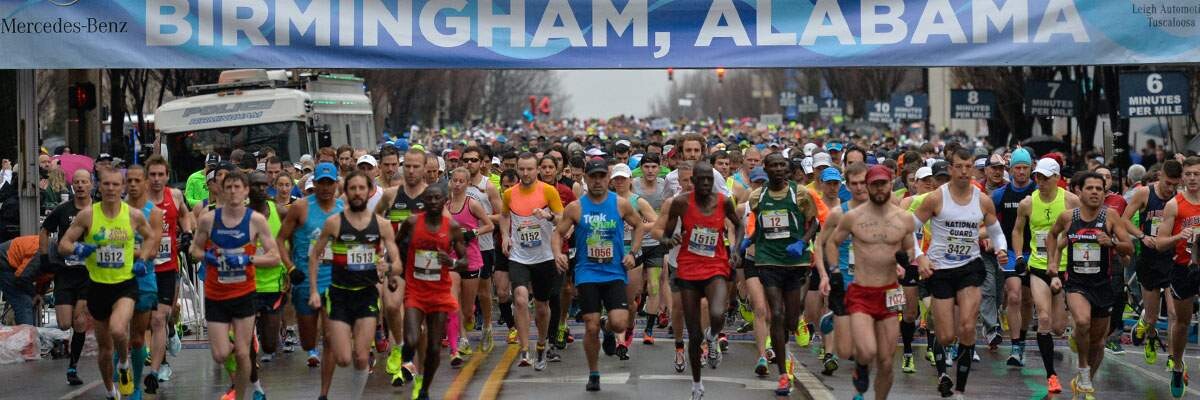
As the official benefactor of the race, The Bell Center provides crucial early intervention therapy services to help children maximize their unique potential. Each year, The Bell Center’s 16 therapists and dozens of volunteers serve hundreds of families from the Birmingham metro and surrounding areas. The Mercedes-Benz Marathon Weekend is The Bell Center’s largest fundraiser every year and brought in $175,000 in 2022, with more than $3 million raised specifically for the organization in the race’s history. Many times, The Bell Center, which was founded in 1984, is the first call parents make after they have learned their child has a diagnosis of Down syndrome, cerebral palsy, autism, brain injuries, blindness or more than 100 other genetic diagnoses or delays.
“At The Bell Center, not only do we care deeply for the children we serve, but we embrace our responsibility in building community for people with special needs starting with our children,” said Jeannie Colquett, executive director of The Bell Center. “The Mercedes-Benz Marathon Weekend gives us an enormous opportunity for everyone to see our children as children first. We’re sad that this is the final Mercedes Marathon Weekend, but The Bell Center will continue well beyond this weekend serving our children and their families and helping them to continue to play an important part in the fabric of our community.”
The Mercedes-Benz Marathon Weekend of Events includes The Bell Center Children’s Run on Saturday, Feb. 11, where the children from The Bell Center will showcase their individual potential as they cross the official marathon finish line.
“The crowd really looks forward to this part of our event - there isn’t a dry eye among the thousands of spectators when this takes place,” says Cuddy. “Seeing the children walk, run, cycle or be pushed in strollers to that finish line is one of the most rewarding moments for us all. It shows the determination and perseverance of the children and their families.”
The race’s BellRunner program is designed to motivate and support participants who agree to raise $100 per mile for The Bell Center when they run/walk the Marathon, Half Marathon, Relay Marathon or Superhero 5K. The program pairs a participant with a child who is receiving life-changing early intervention therapies at The Bell Center, and the runner/walker will train and raise funds in the name of that child. Many runners say it is an awesome, life-changing experience to dedicate hours of training and focus for a child at risk for developmental delay and then share the race day adventure by wearing a photo of The Bell Center child.
Additionally, other local organizations and individuals can also create teams to run for their own cause. Mercedes-Benz Marathon Weekend provides an excellent opportunity for charities and organizations to raise funds for a cause without the hassle and expense of hosting their own event. Team members are encouraged to participate in and fundraise at any weekend events that meet their personal abilities, allowing charities to benefit from all events of the weekend.
(11/29/2022) ⚡AMPMercedes-Benz Marathon
The race is a Boston Marathon qualifier and attracts racers from across the nation and around the world. The race was founded in 2003 as a fundraising effort for The Bell Center, a program for developmentally-challenged children. Celebrating 18 years, we're Alabama's premier running weekend! Bring the family and stretch out your legs on Saturday with our Regions Superhero 5K...
more...What is the weirdest prize you've won at a race? Winners receive farm animals at this Swiss race
Most race winners receive medals, trophies or cash prizes. But at the Bulloise Bullfight race in Bulle, Switzerland, winners are given farm animals. This year, the Swiss 5,000m and 10,000m national record holder, Dominic Lobalu, won the 8.1-kilometre race in a course record time of 22:17 and was given an actual bull for his efforts.
According to the race website, the winner of the men’s elite race receives a bull, which stands as an emblem for the city of Bulle. The first female finisher gets a cow.

In the women’s elite race, Kasanesh Ayanew of Ethiopia covered the 6.2-kilometre course in 19:10 to come within five seconds of the course record of 19:05 and win the cow.
The Bulloise Bullfight event brings together around 4,000 runners annually and captivates a large and enthusiastic local audience. Although there is some uncertainty about the history of Bulle, historians say the town was named after its agricultural industry in the 10th century.

Although the race was founded in 1976, the custom of giving a bull as a prize began in 1985. A few years later, a cow was awarded to the fastest female runner.
If you are thinking what I’m thinking, “how will the two athletes get their massive prize home?” They won’t. The cow and the bull will return to the farm they came from, but will be named after and owned by the two champions.
(11/29/2022) ⚡AMPby Running Magazine
Kenyan Sheila Chepkirui under no pressure ahead of marathon debut at Valencia
Commonwealth Games 10,000m silver medallist Sheila Chepkirui insists she is under no pressure ahead of making her full marathon debut at the 42nd edition of the Valencia Marathon this Sunday.
Chepkirui said she is aware of the tough competition that awaits her but insists that she is not worried.
The women’s field has attracted some of the best athletes who will be targeting to break the course record which currently stands at 2:03:00.
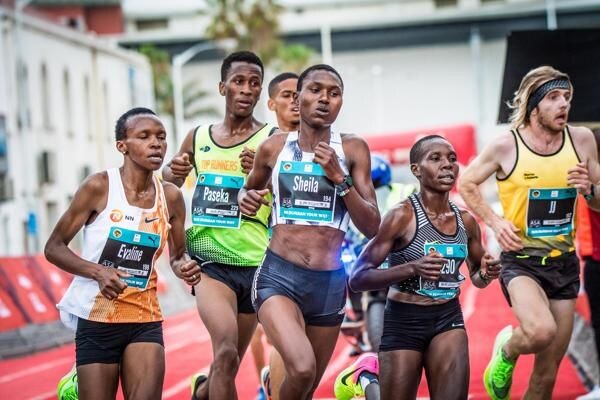
“I am not afraid of the competition. I am making my debut and I don’t want to put pressure on myself. My main goal is to cross the finish line,” Chepkirui said. She will be in the company of compatriots Monicah Ngige and Fancy Chemutai.
The Kenyan trio is bound to face tough competition from Ethiopia’s Letesenbet Gidey, who is the world-record holder in 5000m, 10,000m and the half marathon.
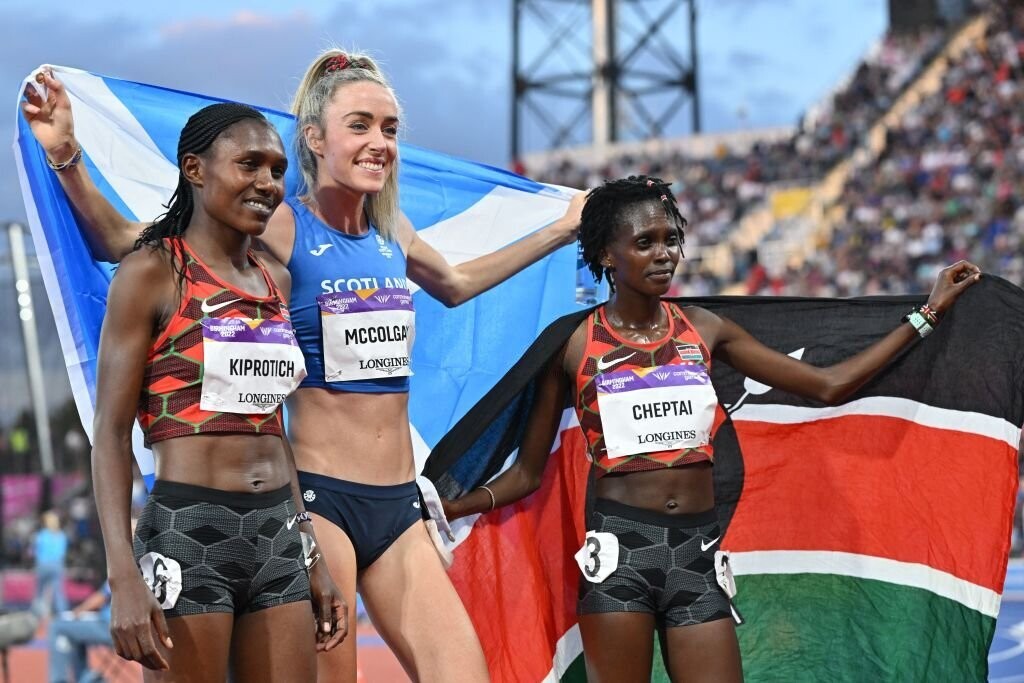
She is one of the women in the spotlight as she will also be making her debut over the distance after successfully ruling the track and half marathon.
Other Ethiopians in the race are— Sutume Kebede (2:18:12) and Etagegne Woldu (2:20:16).
Chepkirui said her training is going on well and she is ready for the race.
She added that Chemutai, who is also her training mate, has played a key role in motivating her ahead of D-day. “We train together and she always encourages me,” Chepkirui said.
In the men’s field, the Ethiopian trio of Getaneh Molla (2:03:34), Tamirat Tola (2:03:39) and Dawit Wolde (2:04:27) head the field.
Kenya’s Jonathan Korir lines up as the fourth fastest with a lifetime best of 2:04:32 and will have the company of Geoffrey Kirui, Ronald Korir, Simon Kipkosgei and debutants Alexander Mutiso, Philemon Kiplimo and Kelvin Kiptum.
(11/29/2022) ⚡AMPby Abigael Wuafula
VALENCIA TRINIDAD ALFONSO
The Trinidad Alfonso EDP Valencia Marathon is held annually in the historic city of Valencia which, with its entirely flat circuit and perfect November temperature, averaging between 12-17 degrees, represents the ideal setting for hosting such a long-distance sporting challenge. This, coupled with the most incomparable of settings, makes the Valencia Marathon, Valencia, one of the most important events in...
more...Smash your marathon goals with these speed sessions
Maybe you have a destination marathon in the books, or you’ve signed up for a post-Christmas race to keep motivation high. Even if you don’t have a race planned, these three speed sessions are ideal to add to any distance training plan. If you’re new to speedwork, tackle the 400m repeat session first and get familiar with it before moving on to the others. All three of these workouts can be done at around 5K race pace.
These workouts will enhance your running economy, boost your VO2 max, and provide mental benefits as you train your brain to handle harder work. Coach and author Luke Humphrey explains in his book Hansons Marathon Method that each of these speed workouts is like money in the bank on marathon day, as they become “resources on which you can draw during the most difficult moments of the marathon.”

400 meter repeats
Warm up with 15 minutes easy running

12 x 400m with 400m easy running for recovery between each one
Cool down with 10 to 15 minutes easy running
The 1K repeat workout
Warm up with 15 minutes easy running
6 x 1K with 400m easy running for recovery in between
Cool down with 10 to 15 minutes easy running
1,600 meter repeats
Warm up with 15 minutes easy running
3 x 1,600m with 600m easy recovery in between
Cool down with 10 to 15 minutes easy running
As always after a hard session, make sure you hydrate well and follow your speedwork day with an easy running or recovery day. If you’ve incorporated strength training into your weekly routine, try to double up (do both your strength routine and your speedwork) on hard workout days, so that your easy or recovery days truly are just that–easy.
(11/29/2022) ⚡AMPby Keeley Milne
Recover like Kipchoge: three simple ways you can be like the GOAT
The world’s fastest marathoner knows how to take care of himself. Eliud Kipchoge, 38, lives and trains at the NN Running camp in Kaptagat, Kenya. While the athlete is constantly in demand to share his wise words and insight with the world, he knows how to say no (he calls it Vitamin N) in order to keep his focus where it is most needed.
Here are three simple ways Kipchoge makes sure he takes care of his body and mind during his downtime. Most of us wouldn’t be able to keep up with Kipchoge on a training day, but we can certainly follow his recovery plan.
Sleep is essential

Aim for a minimum of 8 hours of sleep a night. Research increasingly shows how essential sleep is to all aspects of our lives, and how detrimental spending months or years sleep-deprived can be. Kipchoge gets close to 10 hours of sleep daily.
Kipchoge follows a strict sleep schedule, heading to bed by 9 pm at night and rising at 5:45 am. He also fits in a daily nap. Sports writer and commentator Cathal Dennehy spent three days in 2021 at Kipchoge’s training camp, and writes: “Despite the many demands on his time, he’s very, very good at doing nothing.”
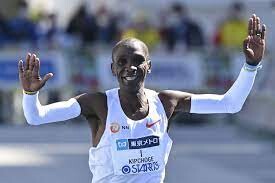
Hydrate well, and eat nutritious food
The exact amount of water we need to drink is oft-debated, but you’re probably not drinking enough. Kipchoge hydrates well and his diet consists largely of simple, whole foods. The GOAT has worked with a nutritionist to tweak his diet for optimal performance, including adding more protein. Many runners tend to eat less on recovery days, thinking their bodies don’t need as many calories–but we actually need to dial in nutrition on recovery days to help our bodies repair tissue damage and become stronger. Protein is essential.
Dennehy observed that Kipchoge eats simple, mainly local food: “homemade bread, local fruits and vegetables, lots of Kenyan tea, some meat, and a generous daily helping of his favourite–ugali, a dense maize-flour porridge.”
Massage and physiotherapy are fantastic (but so is listening to your body)
Kipchoge sees his long-time physiotherapist, Peter Nduhiu, twice a week for a massage. The athlete hasn’t reported any major injuries, and Nduhiu says there’s a reason for that. “He hasn’t had injuries, but he makes it easy for me, because he follows what the coach says,” he explains. “If you’re managing an issue and tell him to slow down, he does exactly that.”
Massage and physiotherapy are fabulous tools if they are accessible to you. If they aren’t, self-massage and mobility work can help. Most importantly, listen to your body: if Kipchoge slows down to help his body recover well, so can you.
(11/28/2022) ⚡AMP
by Running Magazine
Breathe your way into your best running performance
Your breath has the power to shift your approach to an intense event and can be key to how you perform, sports psychologist and author Jeff Afremow writes in his book The Champion’s Mind: How Great Athletes Think, Train and Thrive. “To perform at a champion’s level, breathe deeply and rhythmically to maintain peak energy levels,” Afremow says. Here’s how to harness your breath and use it to run strong.
Tricks to proper breathing

Proper breathing helps you stay in the moment, promotes a relaxation response, and releases tension. Expand your belly as you inhale, and relax your belly during exhalation, letting your shoulders drop and jaw relax as you exhale. Try right now, as you read this. If it seems challenging, lie flat on the floor or a couch and place one hand on your belly to feel it rise and fall.
“Your breathing can become shallow when you feel angry or anxious,” Afremow says. This causes diminished oxygen intake, and increased muscle tension. Taking some deep breaths in tough situations helps calm your nervous system.

Three steps to taking a deep, grounding breath
1. Breathe in through the nose for a slow count to five.
2. Hold for two counts.
3. Breathe out through the mouth for a slow count to eight.
Mentally count to five on the in-breath, count to two as you hold the breath, and count to eight for the out-breath, suggests Afremow. Repeat the steps for four cycles (creating a one-minute breathing workout) or as many times as you need. “Breathing in this manner will help you to slow your heart rate, calm your thoughts, and find inner stillness in the moment,” adds Afremow.
Practice throughout the day, not just pre-race
To make deep breathing a habit and to add it to your pre-race toolbox, check in with your breathing throughout the day, noticing whether you are breathing from the belly or the chest. Is the breath deep or shallow? Afremow suggests working on sitting quietly, simply following your breath. “Your mind becomes more powerful as it becomes quieter and clearer,” he says.
Being able to stay in the present moment, or using your breath practice to find your way back to the present, allows you to move forward through any fear or anxiety you’re facing and tackle the task at hand. Not only will a breathing practice benefit your running game, but you’ll find it useful in general life situations as well.
(11/28/2022) ⚡AMP
by Keeley Milne
Kenyan marathoner starts all-girls training camp
Kenyan distance runner Mary Ngugi, 33, shared that she often felt on high alert as she trained as a young athlete in Nyahururu, a town in the Southern Rift Valley in Kenya. Ngugi, who was third at Boston Marathon in 2022 and 2021, has created the Nala Track Club, the first all-girls training camp in Kenya. Young athletes at Nala Track Club will be guided and mentored by female coaches.
“We needed to give them a safe place where they can be themselves, where they can train without feeling they are in the shadow of men all the time,” she said in an interview with Olympics.com. Ngugi explains that while she has some fond memories of camp, she knew other girls and women didn’t share her experience.
“I was lucky. I joined a camp that was really strict. I know about girls who got pregnant while we were in camp, but it’s the girls who were sent home,” she said. “The boys continued chasing their dreams.”
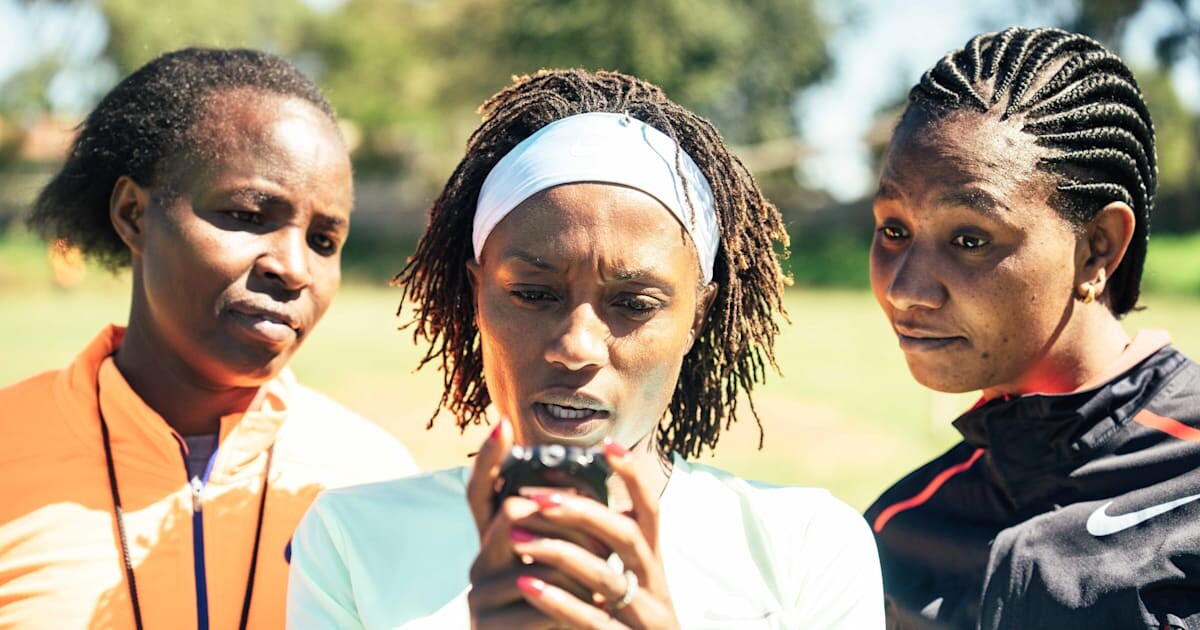
Young women athletes are also manipulated by agents and administrators, Ngugi shared, and explained that the athletes feel pressure to comply or be sent away. “Most of the athletes in Kenya, like me, we come from humble backgrounds, and you don’t want to go back there.”
In October 2021, Agnes Tirop, a talented 25-year-old distance runner who represented Kenya at the Tokyo Olympics, was murdered in her home. The ensuing shock and horror prompted athletes like Ngugi to use their voices to stand up for any athletes who are victims of gender-based violence.

Ngugi initially formed the Women’s Athletics Alliance, “to help the next generation avoid the suffering that so many female athletes have gone through.” She realized that more was needed to support young women athletes: “Women’s Athletics Alliance was more about empowering women, mentorship. And then we thought, it’s not just about mentorship, it’s not just about talking to these girls,” she added. We need to do something, give them a safe place.”
The Nala Track Club was born, and currently has five athletes ages 16 to 22 with the plan to expand to 12 runners. As well as supporting them in training, Ngugi’s camp pays for the athletes’ education and encourages them to attend school, noting that many young women who train at camps have to stop school, either because their camp doesn’t support their education or their parents cannot afford school fees.
“We also want to empower them to have a voice in society, not just in matters of athletics. When they are out there, they can communicate and speak out.” Ngugi is also working to encourage women coaches and mentors; collaborating with her former coach Francis Kamau, Athletics Kenya, and the UK-based Female Coaching Network to train female coaches in her home region.
While Ngugi’s short-term goal is to have female coaches work with the girls at the Nala Track club, she also wants to inspire her fellow athletes to consider coaching once retired from the sport.
“I want to be in an Olympic team with a few female coaches, not just male coaches. I don’t want the women to be in the teams as chaperones,” says Ngugi.
(11/28/2022) ⚡AMP
by Running Magazine
Make a strong, healthy comeback to running with these tips
"Hurry slowly," says ultrarunner Emelie Forsberg.
Whether you’re returning from injury or took some time off of running because of low motivation or life stress, we have some tips from pro ski mountaineer and ultrarunner Emelie Forsberg, author of Sky Runner, on making your comeback. Norway-based Forsberg (who is ultrarunning GOAT Kilian Jornet‘s partner) has returned to racing after having two children, navigated knee surgery, and maintained her delight in training the entire time. Follow her lead and make a smooth return to tackling your running goals.

Find your motivation
Forsberg suggests taking a deep mental dive into what you love about running. She notes that your motivation and goals may have changed since you first began, and that’s OK. “Listen to your body and adjust your training according to the new circumstances,” she says.
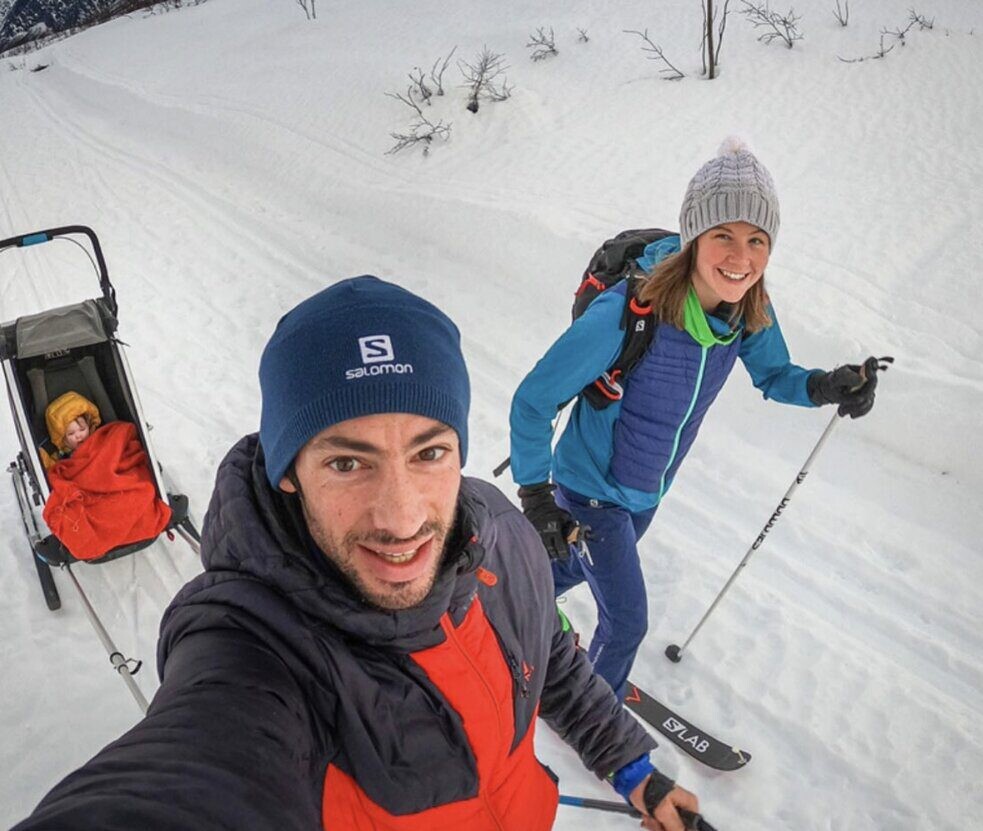
When I went through a stressful period, I had trouble focusing on anything other than the negative: I was fitting in less mileage and running more slowly than I had ever before. Reminding myself that running and moving my body in general (walking was good, too) helped me stay healthy mentally was a great way to adjust my focus, and I was able to move through that period without being too hard on myself.
Build endurance through adventure
Forsberg says she loves taking a day to run solo between huts in the mountains. While that might be a bit ambitious for most, you can adapt similar practices to incorporate fun adventures into training and keep it fresh. Heading to a new-to-you location to fit in a longer run, or exploring with friends, and pausing for a fun lunch can be great ways to keep your journey back to peak form gentle and enjoyable.
Forsberg also suggests building endurance through double sessions–but rather than doing double runs, she will ski for part of the day, then switch to running. “The body is already tired, but you end up using different muscles,” she explains. “The training is gentle as your body is tired, but not from running, so your running muscles are still fresh.
Alternate your training
Not feeling like getting out for your usual run? Forsberg says to skip it. “Do something else instead: yoga, aerobics, dance, ice skating, cycling, boxing–the list is endless.” Removing some of the pressure you put on yourself to follow your plan and moving your body in other ways will keep you feeling fresh and motivated.
Returning to running after some time off can be challenging, and navigating the challenges with a mindset focused on seeking joy, and accepting and having fun in the process will make the time fly by and bring healthy nuance to the way you view your training.
(11/28/2022) ⚡AMPby Keeley Milne
2022 - the year when international road racing got back to normal
There have been big city races with mass participation, high-profile clashes between the world’s elite distance runners, and numerous records broken across a range of distances.
Road running is back in a big way.
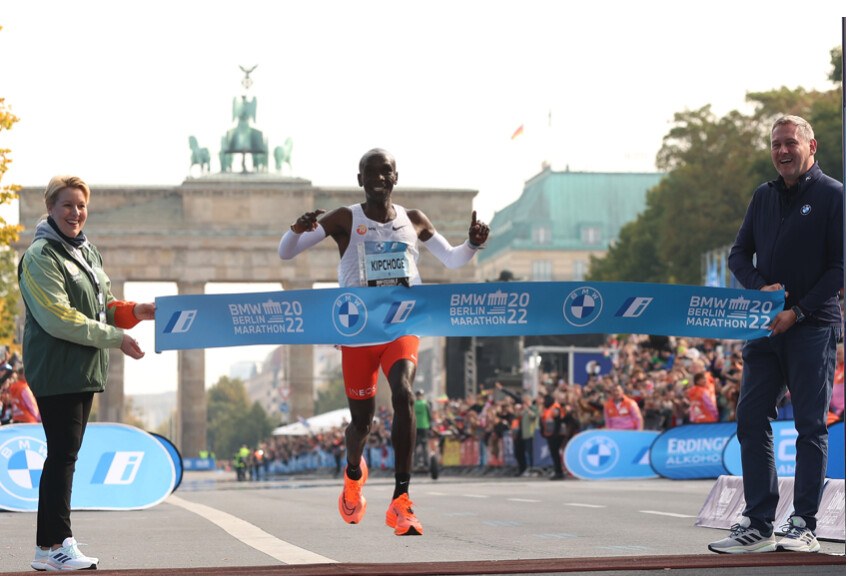
While some World Athletics Label road races in 2022 still had to be postponed or adapted in the face of the ongoing Covid-19 pandemic, road running as a whole is almost back to normal.
Nine Elite Platinum Label marathons have been held already this year, with the 10th and final one due to take place in Valencia on 4 December.
World Athletics Elite Platinum marathons in 2022
Tokyo – 6 March
Winners: Brigid Kosgei (KEN) 2:16:02 CR, Eliud Kipchoge (KEN) 2:02:40 CRWorld record-holders Brigid Kosgei and Eliud Kipchoge got their years off to a great start, winning in the Japanese capital with course records.Finishers: 18,272
Nagoya – 13 March
Winner: Ruth Chepngetich (KEN) 2:17:18 CRAfter an enthralling tussle with Israel’s Lonah Chemtai Salpeter, Ruth Chepngetich prevailed in 2:17:18, breaking the course record in the world’s largest women-only marathons.Finishers: 8698
Seoul – 17 April
Winners: Joan Chelimo Melly (KEN) 2:18:04 CR, Mosinet Geremew (ETH) 2:04:43 CREventual winners Joan Chelimo Melly and Mosinet Geremew were pushed all the way to course records in the Korean capital in two close races. Geremew won by six seconds, while Melly finished eight seconds ahead of her nearest rival.
Boston – 18 April
Winners: Peres Jepchirchir (KEN) 2:21:01, Evans Chebet (KEN) 2:06:51Olympic champion Peres Jepchirchir maintained her winning streak to win in one of the world’s most prestigious races, finishing just four seconds ahead of Ethiopia’s Ababel Yeshaneh. Evans Chebet enjoyed a more comfortable victory in the men’s race.Finishers: 24,607
Berlin – 25 September
Winners: Tigist Assefa (ETH) 2:15:37 CR, Eliud Kipchoge (KEN) 2:01:09 WROlympic champion Eliud Kipchoge returned to the site of his last world record-breaking performance and improved on the mark by 30 seconds, setting a world record of 2:01:09. Meanwhile, Tigist Assefa smashed the women’s course record – and Ethiopian record – with her 2:15:37 victory.Finishers: 34,879
London – 2 October
Winners: Yalemzerf Yehualaw (ETH) 2:17:26, Amos Kipruto (KEN) 2:04:39Yalemzerf Yehualaw got the better of defending champion Joyciline Jepkosgei in an enthralling duel, while Amos Kipruto made a similar late-race break to take the men’s title.Finishers: 40,578
Chicago – 9 October
Winners: Ruth Chepngetich (KEN) 2:14:18 WL, Benson Kipruto (KEN) 2:04:24Ruth Chepngetich came within seconds of the world record to win in 2:14:18, the second-fastest time in history. Benson Kipruto, winner in Boston last year, added another US big city marathon win to his collection.Finishers: 39,420
Amsterdam – 16 October
Winners: Almaz Ayana (ETH) 2:17:20 CR, Tsegaye Getachew (ETH) 2:04:49Ethiopia’s 2016 Olympic 10,000m champion Almaz Ayana ran the fastest marathon debut in history to win in the Dutch capital, holding off former track rival and compatriot Genzebe Dibaba. Tsegaye Getachew made it an Ethiopian double, winning by just five seconds from Titus Kipruto.Finishers: 12,669
New York City – 6 November
Winners: Sharon Lokedi (KEN) 2:23:23, Evans Chebet (KEN) 2:08:41Kenya’s Sharon Lokedi pulled off one of the biggest road-running surprises of 2022, winning the New York City Marathon on her debut at the distance and beating many established stars of the sport. Evans Chebet added to his Boston win from earlier in the year.Finishers: 47,839
Valencia – 4 December
Elite field: includes Letesenbet Gidey, Sutume Kebede, Tiki Gelana, Tigist Girma, Etagegne Woldu, Amane Shankule and Tadelech Bekele in the women’s race, and Getaneh Molla, Tamirat Tola, Dawit Wolde, Jonathan Korir, Hiskel Tewelde, Chalu Deso and Gabriel Geay in the men’s race.Places: 30,000
For the masses
It’s not just elite runners who have been able to enjoy top-quality road racing. Events in most corners of the world have been able to stage mass races of some sort in 2022.
That looks set to continue in 2023 too, not just with Label road races but also at World Athletics Series events.
(11/27/2022) ⚡AMPby World Athletics
You’re Tracking Miles. This Brand Is Tracking Sustainability Goals.
The sneaker industry has a role to play in climate change. New Balance is trying to reduce its climate impact with a holistic program.
Avid runners and hikers know how to put their shoes to work. It’s common for high-mileage dynamos to retire multiple pairs of sneakers each year. Exercise science experts recommend replacing running shoes every 300 to 500 miles to ensure your muscles and joints are properly supported while you run. While that new-shoe feeling is first class, it comes at a cost—more waste generated and more energy needed to make new materials and new products. Sneaker giant New Balance isn’t willing to accept this waste as just a necessary reality of the industry. Instead, the company has set some admirable sustainability goals to address the ways its products contribute to the problem.


Sustainability isn’t a new priority for New Balance; the company has long prioritized efforts to be more environmentally responsible. But the New Balance team is keenly aware of the current climate change reality. “We have an extremely small window of time to take action,” says John Stokes, the company’s director of sustainability. “It depends on what we do in the next seven to eight years. The time is now, and we literally can’t act fast enough.”
Stokes heads up an internal department that focuses on understanding how the business’s decisions affect much more than just the bottom line. From this understanding, the team develops strategies for more sustainable business practices and frequently reassesses what efforts will have the most impact.
Environmental conservation and advocacy is a key part of the sustainability mission at New Balance. The company extends its reach by working with 1% for the Planet, a global network of businesses pledging to give 1 percent of gross sales to environmentally focused entities.
For New Balance, that means 1 percent of MSRP from every sale of the Fresh Foam X Hierro series (the Hierro v7, Hierro Mid, and Hierro v7 GTX) in the United States is donated to organizations focused on climate advocacy and protecting public lands, including Protect Our Winters and the Trust for Public Land.
The Hierro sneakers were a natural fit for this relationship as they are a beloved trail shoe for many outdoor enthusiasts. Stokes and his team hope to add more shoes and apparel to this program in the coming years.
Carbon emissions are a key metric when it comes to evaluating sustainability. Most of New Balance’s carbon footprint can be attributed to three things: materials used to make products, energy consumption in factories, and transportation of products from factory to market. “There’s really no singular aspect that makes a product more sustainable,” Stokes says. “It’s pretty holistic, and we’re trying to address all of those major impact areas.” New Balance had previously committed to cutting its carbon emissions by 30 percent by 2030, but in 2021, the company signed on to the Business Ambition for 1.5C, and it recently submitted an even more aggressive target that is 1.5C-aligned. The company also has some specific goals it plans to reach by 2025, all of which contribute to its overall climate goals:
The whole company is in on this sustainability mission. “There’s more energy and interest right now than ever before,” Stokes says.
New Balance demonstrates the value of taking a sustainability idea and running with it. In addition to developing more sustainable design and production practices, New Balance is pushing the limits of how long a running shoe can truly last. The company is currently testing cleaning and repair services in the UK and Japan. The hope is that if these services are scalable, they can help to extend the life of New Balance shoes worldwide. Until then, New Balance is adding more at-home care instructions to its website to help you maintain your shoes. Yes, you’ll still need to replace your running shoes when the old ones wear out, but taking good care of your shoes can extend their life. The most sustainable shoe is one that already exists. Stokes also suggests we rethink the paradigm that shoes only last a certain number of miles. That number will vary for everyone—If your shoes are still working for you, keep using them.
While there’s currently no way to recycle New Balance sneakers, the possibility is certainly on Stokes’s radar. Design and Innovation teams are looking at ways to make the construction and materials of New Balance shoes more recycling-friendly in the future.
Independent since 1906, New Balance empowers people through sport and craftsmanship to create positive change in communities around the world.
(11/27/2022) ⚡AMPby Outside
Who Wore Which Shoes at the New York City Marathon?
The running shoe hype train was high in New York City with a few fast yet-to-be-released shoes in the men’s and women’s elite fields.
For a few miles early in the New York City Marathon, Desi Linden surged into the lead of the women’s elite field. The two-time Olympian and 2018 Boston Marathon champion didn’t think she’d run away and win the race that way, but she was just trying to keep the pace honest.


However, hiding in plain sight on her feet as she was off the front of the pack was a yet-to-be-released pair of orange, white and black Brooks prototype racing shoes. A day later, no one is willing to give up any details of the shoe, except that, like all of the other top-tier racing shoes in both the men’s and women’s elite fields, it features a carbon plate embedded in a hyper-responsive foam midsole. And although it’s all in accordance with World Athletics regulations, it won’t be released in Spring 2024 … so we’ll all have to wait a bit to see what that shoe is all about.
Linden’s shoes weren’t the only speedy outliers among the top 25 men’s and women’s finishers. While Nike, Adidas and ASICS shoes were the most prevalent brands among elite runners, there were several shoes that aren’t yet available to the public.
For example, the first runner to cross the finish line of this year’s New York City Marathon, women’s winner Sharon Lokedi, was wearing a pair of Under Armour Velociti Elite shoes. That’s notable for several reasons—because it was Lokedi’s first marathon, because the shoe won’t become available until early 2023 and because it’s the first podium finish at a major international marathon for a runner wearing Under Armour shoes.
There were also three pairs of yet-to-be-released Hoka Rocket X 2 shoes on the feet of three Hoka NAZ Elite runners — two of whom set new personal best times, Aliphine Tuliamuk (7th, 2:26:18) Matthew Baxter (12th, 2:17:15). Those fluorescent yellow shoes with orange, white and blue accents and blue laces were on the feet of Hoka pros at the Boston Marathon in April and Ironman World Championships in Hawaii in October, but they won’t be released to the public until late February or early March.
Meanwhile, the winner of the men’s race, Evans Chebet, was wearing a pair of Adidas Adizero Adios Pro 3, a shoe worn by four other runners in the top 25 of the men’s race and six among the women’s top 25, making it the second most prevalent model among the elites. Oddly, that was the same shoe worn by Brazil’s Daniel do Nascimento, who went out at record-setting sub-2:03 pace on his own, only to crumple to the ground at mile 21 after succumbing to fatigue and cramping.
The most common shoe among the top finishers was the Nike ZoomX Vaporfly Next% 2, which was on the feet of 11 of the 50 runners among the women’s and men’s top 25 finishers. There were eight runners wearing either the first or second version of the ASICS MetaSpeed Sky.
Six runners wore Nike Air Zoom Alphafly Flyknit shoes, three wore Nike Air Zoom Alphalfy NEXT% 2. There were two pairs of On Cloudboom Echo 3 in the field, including those worn by Hellen Obiri who finished sixth while running a 2:25:49 in her marathon debut, while three runners wore Puma Fast R Nitro Elite.
And what about actor Ashton Kutcher? He wore a pair of purple Nike Air Zoom Alphafly NEXT% Flyknit shoes and finished in a very respectable 3:54:01.
Matt James, the former lead of the Bachelor, finished in 3:46:45 with Shalane Flanagan as his guide wearing a pair of New Balance FuelCell Comp Trainer shoes. Flanagan wore Nike Air Zoom Alphafly Next% Flyknit shoes, as did Meghan Duggan, an Olympic gold medalist hockey player who ran a solid 3:52:03. Lauren Ridloff, actress from “The Walking Dead,” ran in a pair of Brooks Glycerin 20 and finished in 4:05:48, while Chelsea Clinton, daughter of Bill and Hillary Clinton finished in 4:20:34 wearing a pair of Brooks Ghost 14 and Tommy Rivers Puzey (aka “Tommy Rivs,” a former elite runner who survived a deadly bout of cancer in 2020, wore a pair of Craft CTM Ultra Carbon Race Rebel and finished in 6:13:54.
Here’s a rundown of what was on the feet of the top 25 women’s and men’s finishers in the Big Apple.
1. Sharon Lokedi (Kenya) 2:23:23 — Under Armour Velociti Elite
2. Lonah Salpeter (Israel) 2:23:30 — Nike ZoomX Vaporfly Next% 2
3. Gotytom Gebreslase (Ethiopia) 2:23:39 – Nike ZoomX Vaporfly Next% 2
4. Edna Kiplagat (Kenya) 2:24:16 — Nike ZoomX Vaporfly Next% 2
5. Viola Cheptoo (Kenya) 2:25:34 — Adidas Adizero Adios Pro 3
6. Hellen Obiri (Kenya) 2:25:49 — On Cloudboom Echo 3
7. Aliphine Tuliamuk (USA) 2:26:18 — Hoka Rocket X 2
8. Emma Bates (USA) 2:26:53 — ASICS MetaSpeed Sky+
9. Jessica Stenson (Australia) 2:27:27 – ASICS MetaSpeed Sky
10. Nell Rojas (USA) 2:28:32 — Nike Air Zoom Alphafly Flyknit
11. Lindsay Flanagan (USA) 2:29:28 – ASICS MetaSpeed Sky
12. Gerda Steyn (South Africa) 2:30:22 — Adidas Adizero Adios Pro 3
13. Stephanie Bruce (USA) 2:30:34 — Hoka Rocket X 2
14. Caroline Rotich (Kenya) 2:30:59 — ASICS MetaSpeed Sky+
15. Keira D’Amato (USA) 2:31:31 — Nike Air Zoom Alphafly Flyknit
16. Des Linden (USA) 2:32:37 — Brooks Prototype
17. Mao Uesugi (Japan) 2:32:56 — Adidas Adizero Adios Pro 3
18. Eloise Wellings (Australia) 2:34:50 — Adidas Adizero Adios Pro 3
19. Sarah Pagano (USA) 2:35:03 — Adidas Adizero Adios Pro 3
20. Grace Kahura (Kenya) 2:35:32 — Nike ZoomX Vaporfly Next% 2
21. Annie Frisbie (USA) 2:35:35 — Puma Fast R Nitro Elite
22. Molly Grabill (USA) 2:39:45 — Nike Air Zoom Alphafly NEXT% Flyknit
23. Kayla Lampe (USA) 2:40:42 — ASICS MetaSpeed Sky+
24. Maegan Krifchin (USA) 2:40:52 — Adidas Adizero Adios Pro 3
25. Roberta Groner (USA) 2:43:06 — Nike Air Zoom Alphafly NEXT% 2
1. Evans Chebet (Kenya) 2:08:41 — Adidas Adizero Adios Pro 3
2. Shura Kitata (Ethiopia) 2:08:54 — Nike ZoomX Vaporfly Next% 2
3. Abdi Nageeye (Netherlands) 2:10:31 — Nike ZoomX Vaporfly Next% 2
4. Mohamed El Aaraby (Morocco) 2:11:00 — ASICS MetaSpeed Sky+
5. Suguru Osako (Japan) 2:11:31 — Nike ZoomX Vaporfly Next% 2
6. Tetsuya Yoroizaka (Japan) 2:12:12 — Nike ZoomX Vaporfly Next% 2
7. Albert Korir (Kenya) 2:13:27 — Adidas Adizero Adios Pro 3
8. Daniele Meucci (Italy) 2:13:29 — ASICS MetaSpeed Sky+
9. Scott Fauble (USA) 2:13:35 — Nike Air Zoom Alphafly NEXT% 2
10. Reed Fischer (USA) 2:15:23 — Adidas Adizero Adios Pro 3
11. Jared Ward (USA) 2:17:09 — Saucony Endorphin Pro 3
12. Matthew Baxter (New Zealand) 2:17:15 — Hoka Rocket X 2
13. Leonard Korir (USA) 2:17:29 — Nike ZoomX Vaporfly Next% 2
14. Matthew Llano (USA) 2:20:04 — Under Armour Velociti Elite
15. Olivier Irabaruta (Burundi) 2:20:14 — On Cloudboom Echo 3
16. Hendrik Pfeiffer (Germany) 2:22:31 — Puma Fast R Nitro Elite
17. Jonas Hampton (USA) 2:22:58 — Adidas Adizero Adios Pro 3
18. Alberto Mena (USA) 2:23:10 — Nike ZoomX Vaporfly Next% 2
19. Jacob Shiohira (USA) 2:23:33 — Nike Air Zoom Alphafly Flyknit
20. Edward Mulder (USA) 2:23:42 — Nike Air Zoom Alphafly Flyknit
21. Jordan Daniel (USA) 2:24:27 — Nike ZoomX Vaporfly Next% 2
22. Nathan Martin (USA) 2:25:27 — ASICS MetaSpeed Sky+
23. Jeff Thies (USA) 2:25:45 — Nike Air Zoom Alphafly NEXT% 2
24. Shadrack Kipchirchir (USA) 2:28:15 — Puma Fast R Nitro Elite
25. Abi Joseph (USA) 2:29:16 — Nike Air Zoom Alphafly Flyknit
(11/27/2022) ⚡AMPby Outside
Winter Running Doesn't Have to Be Cold, Dark, and Lonely
The shortest days and the longest nights are upon us. In many parts of the country, it's getting cold or it will be soon. It's hibernation season, except that we aren't bears and most of us know, somewhere deep down inside, that we need to keep running, even at this sub-optimal time of year.
But what's a runner to do when motivation is low and the chances of wiping out on a patch of ice are high? We do the best we can. And we try to look on the bright side, pun intended: After December 21, it only gets lighter from here.

Readers Chime In
And listen, we're all in this together. So we asked readers to tell us how they muddle through, what mind tricks they've come up with, what pieces of advice keep them moving, even when Old Man Winter deals the harshest conditions and the alarm goes off at the darkest hour. We solicited almost 150 responses from the Twitter mindhive to come up with this collective advice, from our beloved community of winter runners:
Let there be light
Even if you are starting an early morning run before the sun comes up, several people suggested that using a light therapy box or lamp as soon as the alarm goes off can help.
"[I] stare my eyeballs right into it while getting dressed and filling my water bottle," said Lori Dierig."I swear it works really well for me!"
They might be on to something. Research has shown that bright light exposure for 30 minutes before 8 a.m. every day can improve symptoms of Seasonal Affective Disorder, which is depression related to the change in seasons. If you want to give it a try, Yale School of Medicine has done all the research on which kinds of lamps and boxes have the best results.
Even just going for a 30-minute walk or run at daybreak can help offset that feeling of sluggishness or listlessness, no matter what time of year, Dr. Richard S. Schwartz, associate professor of psychiatry at Harvard Medical School told Harvard Health.
Embrace the peace
Life at this time of year can be hectic. Holidays, school activities, work, travel-it all piles up. For many runners, getting outside before or after work is a moment to take a deep breath and relish a little quiet time. For Erica Sara, jewelry designer, small business owner, and mother of two, running is simply a coping strategy for life: "It's the only me-time I get lately."
For others, it's nice to exist in the outdoors when most people are inside.
"I don't mind running in the dark. Streets are empty, quiet, and peaceful," said George Woodward, adding, "I know I am privileged as a man to be able to do that."
Maggie Stewart added: "Each winter [I] treat myself to a new reflective item like hat or gloves."
Remember that to everything, there is a season
Amanda Parrish Morgan, author of the newly released Stroller: Object Lessons, winter is the season to maintain fitness and release herself from rigid training schedules. She prefers to accept the limitations of the season and just do what she can.
"Thirty minutes on the treadmill, turtle-like pace on snowy roads, ad-hoc fartlek on random clear patches of road," she said.
Don't measure success by how far or fast you run right now. Just get out there and give yourself credit for what you do. "You can still be consistent even if you only get out for a few minutes," Jana Sesow said. "It can give you some nice down time for your body to recover and reset between training cycles, too."
Be flexible
For those who are blessed with flexible work schedules, it's a good time of year to sleep in, wait for temperatures to rise a little bit, and run mid-morning, at lunchtime, or during the later afternoon.
"About this time of year, I start granting myself as much flexibility as possible," said Alex Fox. "Wake up at usual run time (5 a.m.) and check the weather. If it's reasonable, I'll go. Sometimes hit the tread. Sometimes go early evening.. Adaptive, flexible, and fun are key."
Find company for the misery
Almost everybody agrees that running is better with friends, whether it's winter or not. It's especially helpful to have people to meet when it's dark outside and it makes it less likely you'll skip a run if at least one other person is waiting for you.
"I can be more accountable to others than myself sometimes," said Dana Giordano, host of the "More Than Running" podcast.
Don't call it the dreadmill
Sometimes the only way to run safely is doing so inside. Many people enjoy the indoor season and entice themselves by streaming shows or listening to podcasts that they will only turn on while running on the treadmill.
"I don't call it the dreadmill," said ColleenRunsPA. "It's a training tool that I'm blessed to have. It helps me build endurance and speed during the cold months. I still run outside on the weekends."
Call it when you need to
When all else fails, remember to give yourself some grace when you just can't make it happen. You can always try again tomorrow.
"Care less about outcomes-embrace being sluggish and careful on icy sidewalks. Don't be precious about it," said Julie Hieggelke. "Be kind when your soul says, 'not today.' Try again."
And possibly the best advice of all came from Paul Hopkins, who simply said: "Move to Hawaii!"
We're on our way, Paul.
(11/27/2022) ⚡AMPby Trail Runner Magazine
How to Disrupt Diet Talk this Holiday Season
Holidays themselves can bring about so many different feelings for different people. While many appreciate the traditions that come from the holiday season, others loathe the conversations that they might have to endure with family, friends, and others about weight and diet. The truth is, conversations like these can trigger stress around body image and encourage restrictive and obsessive behaviors to surface.
The endurance sports space itself is rife with diet culture, worshiping thinness and equating it with an ability to perform better, or attaching what you eat with some kind of high moral value. You're often made to feel bad about yourself and what you eat, resulting in a push for weight loss.

There is no one "ideal" body weight or diet for endurance runners. You have the right to shut down diet talk around the holidays if it makes you feel bad about yourself, or if it causes you to feel like you are engaging in disordered eating behaviors. However, this can be difficult to do when surrounded by family and friends that you might not want to upset.
Emily Tessier, RDN, works with a lot of endurance athletes that struggle with disordered eating and eating disorders and states that "she sees stress levels are significantly increased around food and body image around the holidays. Reasons include frequent parties and gatherings involving societally deemed 'unhealthy' dishes and desserts, comments around fear of weight gain from friends and family, and the popular "near year, new me" diet culture mentality when it comes to food choices and exercise. Combine these with the running off-season and it's a recipe for panic".
There is hope. We can create resiliency through boundary setting and coming up with a set of skills or responses to help in response to these stressful scenarios.
Setting Conversation Boundaries
Boundary setting can be difficult to do, even downright scary, but Tessier reminds us "It's not your responsibility to manage other people's feelings or reactions, and that it is your right to express your boundaries and communicate how helpful this can be for you."
It is ultimately your choice as to how you set boundaries, but they can range from informative to blunt, and there is really no one right way to handle these situations. For family members, sometimes playing on emotion versus using informative talk can be a more effective way towards change because they love you and want to support you. Remember, you may not be able to change a friend or family member's mind about diet culture in the moment, but you may spark them to think about their thoughts and comments in the future.
Once the boundaries have been established, the hardest part may be having them stick. You will need to be adamant about reinforcing them over and over again. Tessier points out that "In the moment, it may feel time-consuming and ineffective, but repetition will emphasize how important this is for you. It can feel exhausting to set boundaries, and friends and family might push back at first. This isn't because they want to cause stress or harm you - it is likely because they've never felt they had permission to do what you're doing, or even crossed their mind as a possibility. By sticking to your boundaries, you're not only protecting your own well being, but you're also planting the seeds for others."
It can also be helpful, if you are going into certain situations you anticipate will be particularly difficult, to have a spouse, friend, or other family member help you reinforce your boundaries, if you find yourself there. It can help you feel safer to have a support system when everything else seems a bit overwhelming.
Once you have in mind that you want to set your boundaries, coming up with a set of techniques and sample responses can help you think of how to handle yourself at the moment. It can be helpful to write out these responses so that you feel prepared to have a toolkit to reference in most any situation. You never know when and how they will come in handy.
Use the following examples if you find yourself struggling to disrupt the diet talk this holiday season:
What Response Technique to Use: Change the subject.
Example Response: "I haven't heard about that diet. But have you all heard about the new restaurant that just opened up in town? We should try it soon!"
What Response Technique to Use: Approach with empathy.
Example Response: "I love you but I really don't enjoy talking about weight or diet culture. I've been really loving listening to my body and fueling it, so I'd really appreciate it if we could avoid this subject right now."
What Response Technique to Use: Put the focus back on them.
Example Response: "Why is eating treats a bad thing? The holidays are supposed to be enjoyable, and treats help us fuel our bodies just like any other food!"
What Response Technique to Use: Take the time to inform or explain.
Example Response: "I don't believe that labeling foods as good or bad makes sense. Plus avoiding certain foods will only make me want them more."
(11/27/2022) ⚡AMPby Trail Runner Magazine
Take a Sneak Peek into 'Born to Run 2'
Thirteen years after the publication of Christopher McDougall's popular book, Born to Run, the author teams up with renowned running coach Eric Orton for Born to Run 2: The Ultimate Training Guide, a fully illustrated, practical guide to running for everyone from amateurs to seasoned runners, about how to eat, race, and train like the world's best. Born to Run 2 will be available on December 6, 2022, but you can read this excerpt from the book.
Chapter 8: Form - The Art of Easy

Eric promised he could teach running form in ten minutes. If I had to estimate, I'd guess he was miscalculating by a factor of at least 7,000 percent, so I subjected his proposition to lab testing and gave it a try myself:
I hit Pause and checked my watch. Then I tried it again. Each time, I found Eric's estimate to be wildly exaggerated. It wasn't even close to ten minutes. More like five.
One song. One wall. Three hundred seconds. If someone had only shared this secret with Karma Park, it could have saved her a world of misery.
Karma was such a disaster, the Navy honestly couldn't tell if she was a terrible runner or a terrific actor. How she even made it into boot camp was a mystery.
The strange thing was, running was her only weakness. Chuck her out of a boat at sea? No problem. Pull-ups, push-ups, crunches? Piece of cake. Karma was a competitive swimmer and varsity wrestler growing up, so two-hour workouts were in her blood. But ask her to run a mile and a half? In under thirteen minutes? Not a chance. Over and over she tried, and every time she ended up walking, grabbing her ribs from stitches and wincing from aches in her legs.
"I'm pretty sure the recruiter fudged the numbers on my Physical Readiness Test so she could get me in," Karma believes. "I finished the run and thought, Oh crap, I'm a minute too slow, and she's like, 'No, no, you're good.' "
When Karma got to basic training, she gritted her teeth and did her best. The Navy was her ticket to a dream life, so there was no way she was giving up. Karma was twenty-five at the time, with a wife in law school and hopes of becoming a surgeon. The surest path toward financing their future was a career in the military. Besides, she had a debt to pay back. Karma came to America from South Korea at age eleven, and while, yeah, maybe Alabama wasn't the most welcoming place for a foreign kid with budding gender issues, Karma was still deeply grateful for the life her family was able to create there.
"I really wanted to serve this country," she says. "But in boot camp I was in and out of sick bay all the time." Karma chanted the drill instructors' mottoes to herself-Pain is only skin deep! Heel to toe! Heel to toe!-but the harder she pushed, the more she broke down. "At first maybe they were checking that I wasn't dogging it," Karma recalls. "I can see how I would be suspected because I feel that other recruits faked it to get out of running, but I was in so much pain, they knew something else was going on."
Finally, Navy doctors diagnosed Karma with chronic hip displacement. She was ordered to report to the long-term sick bay, where she'd be stuck for as long as it took-a month, six months, a year-for her to either heal or quit. Those were her options: get better, get faster or get out.
Karma was crushed, but privately vindicated: ever since she was young and her mom would sign the whole family up for local 5Ks as a way of assimilating into their new home, Karma knew she couldn't run. "My dad and I would walk at the back of the pack, and I thought, This is the most ridiculous thing ever. We have cars and bikes, why are we running? I was really fit in all the other aspects of PE, but with running, I tried and tried and never got any better."
Back in civilian life, Karma struggled. She put her own education on hold and began managing a Subway so her wife could finish law school. She began putting on weight, but when she tried to exercise, her old leg injuries flared up and she finally discovered the real cause of her pain was rheumatoid arthritis. The medication made her lethargic and bloated, and her body ached so badly she needed a cane to walk.
Karma was in a bad spiral that nothing could stop. Except her wife's lover.
"My wife had an affair with a guy who was really fit," Karma says. "When I confronted her, she told me I was fat. That hit me really hard." So hard that after she and her wife separated, Karma decided to punish herself with the thing she detested most. "I decided to drown my emotional pain by subjecting myself to physical pain," she says. "When I left the Navy I swore off running-I hate it hate it hate it, never running again. This time, I decided to run myself ragged into an early grave. I hated myself and hated running, so this is what I'll do."
For once, Karma's injuries came to the rescue. Her legs seized up before her heart, and while she was searching for a new way to beat on herself, she had the enormous good luck to meet Sheridan. With that amazing woman by her side, parts of Karma that she hadn't even realized were hurting began to heal. For the first time, she had the confidence and support to face her gender identity and begin transitioning to the self that had always been buried.
She also resolved, once again, to get back into shape.
If you're keeping score at home, by now Karma has struck out three times as a runner. Over the years, I've heard a lot of stories like this from busted ex-runners-and lived one myself-but this is the first instance where I thought, okay, maybe it's time for the mercy rule to kick in and let it go for good. But against those odds, Karma stepped up again. When Sheridan gave birth to their first son, Karma set her jaw and decided their baby wasn't going to grow up with a parent hobbled with a cane or gone before their time.
"That's how I began my journey into learning how to run properly," she says.
This go-round, Karma attacked the problem from a different angle: What if her brain was the problem and not her body? Karma is a math whiz and comes from a medical family, so she was a little annoyed at herself for not realizing sooner that if your equation keeps giving you the wrong result, adding the same numbers isn't going to help. Rather than running harder, she thought, maybe there was a way she could run smarter.
Her eureka! moment occurred soon after, when she noticed that her legs hurt more on downhills than ups. That's when it hit her: What if she treated the entire planet like a hill? Get up on her forefoot, in other words, instead of heel-toe, heel-toeing it like she'd always been told.
"When I mentioned this to a friend, she immediately said, 'Haven't you read Born to Run? That's what it's all about.'"
Karma picked up a copy, and there, on page 181, she found the role model who would change her life. Not Ann Trason, the courageous science teacher who nearly outran a team of Raramuri runners in the Leadville Trail 100. Not Scott Jurek, the gracious and unbreakable hero who rose from a rough Minnesota childhood to become the greatest ultrarunner of all time. Karma didn't even see herself in Jenn Shelton, that patron saint of human fireballs, or Caballo Blanco, the lovelorn loner who used running to heal a broken heart.
Nope. When Karma looked into the mirror, grinning back at her was Barefoot Ted.
I'm not happy about this now, but when Caballo Blanco and I first met Ted McDonald, we were ready to Rock-Paper-Scissors over who was going to clunk him on the head and chuck him into the canyon. Ted likes to say "My life is a controlled explosion," which only confirmed my conviction that he has no idea what "control" means.
I was slow to see what Jenn and Billy Bonehead and Manuel Luna liked about Ted. It took a few clashes before I finally got it, including a toe-to-toe shouting match in the middle of Death Valley, where I threatened to leave Ted by the side of the road to die while he was yelling in my face, "I don't care how big you are! I'll fight you!"-at the very moment, by the way, when we were supposed to be crewing for Luis Escobar in the Badwater Ultramarathon.
But I couldn't miss the fact that lots of other people really enjoy him. Ted is a lot on a slow day, but he's also a huge-hearted friend and his own kind of genius. When I sent word to Ted that a group of my Amish ultrarunning buddies were traveling through Seattle en route to a Ragnar Relay, he immediately threw open the doors of his Luna Sandal shop and made them at home in an improvised bunkhouse. Nearly every year, Ted travels back down to the Copper Canyons and hands a wad of cash to Manuel Luna, the Raramuri artisan who taught him how to make huaraches. Not because they're partners; because they're friends.
Still, it was gratifying to see that Luis had as much steam shooting out of his ears as I did after we invited Ted to join us in Colton for our photo shoot. For forty-eight hours we couldn't get a yes or no out of the guy, which would have been fine if he'd just stayed silent as well. Instead, Luis and I kept getting cryptic little teaser texts, like digital art smiley faces that dissolved from our phones a few seconds after appearing. It felt less like waiting for a friend to show up (or not) and more like being stalked by the Zodiac Killer.
Then lo and behold, an Amtrak train pulls into San Bernardino station and out pops Barefoot Ted, a big Santa Claus backpack full of sandal-making supplies over his shoulder. He'd spent six hours getting there, and immediately began hand-crafting a gorgeous pair of custom sandals for each of our volunteer models. While his hands were busy, so was his mouth: Ted cut loose with a thirty-minute spoken-word performance that left us all slack-jawed in astonishment as he prattled on, fluently and kind of brilliantly, about everything that had been rattling around inside his skull while he was captive on the train. ("Turning everything you see into food is a superpower. Do you have it?" is the only line I remember.) Soon after finishing a dozen sandals he was gone, grabbing a lift back to Santa Barbara that same night because, unbeknown to us, he'd had a pressing commitment there all along. What a guy.
As a runner, Ted was a true revolutionary. He was so far ahead of the pack when it came to minimalism, the rest of the country took years to catch up. Not that he didn't make a compelling argument from the start. It's just that in typical Ted fashion, the story took a direction only a man who calls himself The Monkey would follow.
If you recall, Ted only began running in the first place because he dreamed of becoming America's Anachronistic Ironman. Which meant, for reasons known only to Ted, he wanted to spend his fortieth birthday completing a full triathlon (2.4-mile ocean swim, 112-mile bike ride and 26.2-mile run) but only using gear from the 1890s. If Ted has one quality greater than his raw athleticism it's his absolutely bulletproof self-confidence, so when he found he could handle the swimming and cycling but not the running, the problem couldn't be his body: it had to be the running.
Close: it was actually the running shoes. The first time Ted ran barefoot, his planetary axis shifted. "I was totally amazed at how enjoyable it was," Ted says. "The shoes would cause so much pain, and as soon as I took them off, it was like my feet were fish jumping back into water after being held captive."
On a barefooter's blog, he found the Three Great Truths:
Change the way you run That was the opposite of everything Ted had ever been told about running, but everything Ted had ever been told about running wasn't working. Besides, it immediately made sense. No decent basketball player just heaves the ball in the air and hopes for the best. No serious tennis player slashes their racket around like a club. Ted had spent a few years as a teacher in Japan, and he knew that sushi chefs and martial artists spend years perfecting the basic steps of their craft. In the world of movement, form and technique reign supreme.
Ted didn't know any barefoot runners in person, only online, so he set off on this quest for reinvention on his own. He found himself in the same predicament as a Czech soldier he'd heard about who, during the Second World War, spent his long nights on guard duty dreaming of Olympic glory. Rather than stand and shiver, the soldier began running in place, lifting his knees high to clear the snow and, to avoid being heard, landing as silently as possible in his heavy boots.
Back home after the war, the soldier replaced slippery snow with wet laundry: he washed his clothes by running on top of them in a bathtub full of soap and water. (Get a load of that, Mr. 100 Up: one sloppy stride in a sudsy tub and you're not starting over, you're heading to the emergency room.)
Those weird home experiments paid off spectacularly. Coached only by his own ingenuity, Emil Zatopek pulled off the most stunning track performance in Olympic history: at the 1952 Games, he won gold in all three distance events, including the first marathon he ever attempted.
Despite how fast he ran, Emil took a ton of crap about how awful he looked. Upstairs, Zatopek was a horror. He'd get this grimace on his face, one sportswriter said, "as if he'd just been stabbed through the heart." Zatopek's head lolled around and his hands clawed his own chest like he was birthing an alien baby through his rib cage. But what sportswriters missed was that below the waist, Zatopek was a machine: rhythmic, precise, impeccable.
Ted never did get around to his Anachronistic Ironman-not yet, at least-but otherwise, he was unstoppable. Once he realized that running was a skill to be mastered and not a punishment to be endured, he became a Monkey on a mission.
Before long, he'd ripped out a marathon quick enough to qualify for Boston, and then ran Boston quick enough to qualify for the next one, and from there it was onward and literally upward, as he shifted from long roads to high-mountain ultramarathons.
But what Karma envied most wasn't Ted's remarkable twenty-five-hour finish at the Leadville Trail 100, or his out-of-left-field world record for skateboarding (242 miles in twenty-four hours). She didn't care if she ever ran as fast as Ted. She just wanted to be as healthy. She wanted to follow his footsteps from Hurt Ted to Happy Ted.
"I made a conscious decision to fully embrace forefoot running," Karma says.
Maybe embrace isn't the right word. Since May 3, 2014, Karma hasn't missed a single day of running. Every evening, no matter what kind of storm is blowing through Birmingham, Alabama, no matter if she's fighting a cold or dealing with craziness at the medical office she manages, Karma pulls on her sandals and heads out the door.
Her eight-year-and-counting streak began in true Barefoot Ted fashion: bizarrely. Less than a year after changing her form, the woman who swore she'd never run again was bringing home her first marathon medal. Gone was the cane, forgotten was the specter of crippling arthritis. By changing the way she moved, Karma discovered she could change the way she felt. She soon ramped up from a marathon to a 50K, and that's when things took off. The day after that first ultramarathon, Karma decided to test her soreness by jogging an easy two miles. She was surprised to find her legs actually felt better after that run, so she went out again the next day and the next and thus a streak was born.
To maintain her daily running streak, Karma logs at least one mile a day, but that's just her baseline. During her first year of streaking she also tackled three ultramarathons, and then began creating streaks within her streak: she ran five miles a day for a full year, seven miles a day for ten months, and three miles a day for 1,300 days. Despite all these clicks on her odometer, Karma still felt she needed to borrow one more hack from Barefoot Ted: as a reminder to remain smooth and light, she always runs in a pair of his Lunas.
Karma had never actually met Ted in person until the day he hopped off the train in San Bernardino and blew into our photo shoot like a grinning bald tornado. Ted is usually quick on his feet, but when he came eye to eye with Karma, it took him a few beats to get his bearings.
The person who'd reached out to Ted years ago had never felt at home in her body and was facing two frightening transformations. The Karma in front of Ted today had made it through to the other end. In the past, Karma had looked to Ted for hope and guidance. Now, she deserved something very different. Ted understood, and delivered.
"If you have any questions, ask Karma," Ted said, as he addressed the circle of very experienced and accomplished ultrarunners hanging on his every word about the art of minimalist running. "She knows as much as I do."
This is an excerpt from Born to Run 2: The Ultimate Training Guide by Christopher McDougall and Eric Orton, available on December 6, 2022 by Alfred A. Knopf, an imprint of The Knopf Doubleday Publishing Group, a division of Penguin Random House LLC. Copyright 2022 by Christopher McDougall and Eric Orton.
(11/27/2022) ⚡AMP
by Trail Runner Magazine
Tips for Your First Ultramarathon
By definition, an ultramarathon is anything longer than 26.2 miles. Maybe you've run a marathon and you want to a new challenge. Maybe you've never run farther than 13.1. Ultramarathons are just like any other running race--any able body person can complete one. Ultras are becoming more popular every year. Whether it's 50K, 50 miles, 100K, 100 miles or more, here are 10 tips for tackling your first ultramarathon.
Don't Carry Too Much Stuff With You

It's tempting to pack everything but the kitchen sink in your hydration vest for those "just in case" moments. But there's no need to carry the extra weight if the aid stations are stocked or you have a crew. Less is best if you can get away with it.
Know the Aid Stations

Knowing how far apart the aid stations are from each other will help you plan if you need to use a hydration vest, a handheld bottle or strictly rely on course aid. Most races also list what will be available for nutrition and hydration at each station. Decide prior to the race if you will be using your own nutrition or hitting up the fuel provided.
Stick With Your Hydration/Nutrition Plan
During your training, practice your hydration/nutrition plan. Finding what works for you prior to race day will help eliminate any surprises. Don't be tempted to change things up when you hear some other runners talking about their nutrition plan. Stick with what works for you. Eat early, eat often and don't stop eating/drinking in the later miles because you think you are almost done. The last thing you need is to bonk a few miles from the finish line. Keep up with your nutrition plan for the duration.
Run by Effort, Not by Pace
There are so many factors that go into your race day pace, like elevation, trail conditions, weather, and terrain that it's best to go by the effort you are putting out rather than what your GPS watch says.
Don't Let Race Day Adrenaline Dictate Your Effort
Just like any race, it's hard not to run fast as soon as it's go time. The adrenaline is pumping, and you are feeling GOOD. That feeling will not last. Sooner or later, those faster miles will catch up with you.
Power Hike the Hills
Want to know a secret? Almost every single person in an ultramarathon walks at some point. Even the winners might do it! Power hiking the hills is a great way to conserve energy. Plus, you most likely will cover the hills quicker by hiking than running.
Run the Mile You Are In
It's easy to let your mind wander to the miles that lie ahead. However, thinking of running 50 miles at one time can seem impossible. Stay present in where you are. Breaking down the race into smaller sections, like aid station to aid station, will make it seem more attainable.
You Will Cycle Through Feeling Good and Not-So-Good Multiple Times
The good thing about the distance in an ultra is that it's long enough to feel good again after feeling bad. Don't feel like the race is over as soon as you start to feel poorly. Assess the situation (usually it's an eating or nutrition issue), and take care of it. You'll probably feel better in a few miles.
Repeat Your Positive Mantras Throughout the Race--Even When You Are Feeling Good
The physical side of running is tough, but the mental side is what's going to get you across the finish line. Having positive mantras on repeat, even when you are feeling good, will keep you mentally in the race. When a negative thought pops up, replace it with a positive one.
Keep Moving Forward
A body in motion, stays in motion, right? Resist the urge to linger at aid stations too long. Grab what you need and keeping moving. The more time you spend sitting or standing still means you are losing the forward momentum to keep going.
(11/26/2022) ⚡AMPby Angela Bakkala
The Cannon Core Workout For Runners
There’s a good reason why core workouts for runners have become so popular over the last few years. Actually, there are quite a few reasons.
Training your core will deliver a variety of benefits:

Improved running economy, by delaying fatigue late in a race or long run
Increased strength of the core region, including the hamstrings, hips, glute muscles, lower back, and abdominals
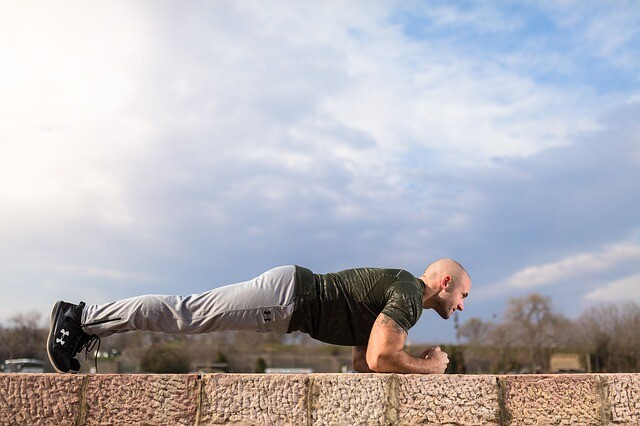
Prevention of running injuries, by increasing your ability to withstand the impact forces of running
Give you shredded six-pack abs!!!
Ok, that six-pack promise isn’t really true. Getting ripped abs is mostly genetic and depends more on BMI and diet than anything else…
But still, core workouts are a vital part of any runners’ training program.
That’s because all movement originates from the core. If you want to improve your mobility (the ability to move well), it’s critical to start any movement from a position of strength.
Your core is like a platform where all other movement starts from. The more postural stability you have, the better you’ll move.
And no matter what type of runner you are, you’ll benefit from core training:
Beginners need even more strength training to prevent injury
Older runners need to prevent muscle loss
Those who don’t run races still need to stay healthy
Frequent racers (even virtual races) need to mitigate the higher intensity
Clearly, practically every runner will benefit from a stronger core.
So I’m thrilled to announce the Cannon Core Workout for Runners, a dynamic, runner-specific, leveled core session that will help you build core strength, improve efficiency, and prevent running injuries.
And it’s perfect for beginners or even advanced runners.
Cannon is a different type of core workout than other routines you might find elsewhere for three important reasons.
1. Cannon Core is Runner-Specific
Many other core workouts aren’t actually designed for runners. You’ll see more metabolic or aerobic exercises (“heavy breathing” exercises), a more traditional focus on just the ab muscles, and no balance with the posterior chain.
But not Cannon. I’ve built this routine to be more comprehensive with focus on the chest, glutes, upper back, lower back, and transverse abdominals.
It also is balanced and includes exercises that strengthen the glutes and lower back. These are not typically considered “core” muscles but they do complement them and help us be more balanced athletes.
2. Cannon Core is Dynamic
Many core workouts only include exercises like planks, side planks, bridges, and reverse planks. These are great exercises – but they’re static. They don’t include any movement.
Cannon has a variety of exercises that have you move in a variety of planes of motion. You’ll rotate, cross your midline, and work on single-leg strength.
There’s just no substitute for building athleticism than dynamic movements.
3. Cannon Core is Leveled
Are you a beginner? Or a veteran with years of running and weightlifting experience? Either way, Cannon Core is for you!
That’s because Cannon is a leveled core workout for runners. It includes 2-3 levels for each exercise, allowing you to start where you’re comfortable and move up when you’re ready.
But that’s not all. Not only is each exercise leveled, you can also:
Complete 1-3 sets of the core workout depending on how much time you have and your ability
Perform each exercise for as little as 10-20 seconds or as long as a full minute
More flexibility allows you to get more out of the routine. Start at a beginner level and you’ll be completing Cannon Core a year from now at an advanced level!
(11/26/2022) ⚡AMPby Jason Fitzgerald
The Run Streak Might Be the Key to a Fast Spring Marathon
Runner’s World+ Coach Jess Movold shares three reasons how the #RWRunStreak can benefit you in the long run.
When people ask me about my racing schedule for the upcoming year, my answer always starts with the 2022 Runner’s World Holiday Run Streak. If you ask me, the streak is the perfect runway to a training cycle and creates the most beautiful bridge between Fun-Run Season and Full-Send Season (yes, I just made that one up—but I think it will stick around).
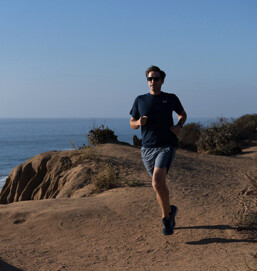
f you’re an avid marathoner, you probably jump between spring marathons and fall marathons, and if you’re like the marathoners I know, you do this every year. This back-to-back marathon schedule doesn’t give you a lot of time for an “off-season” (air quotes because runners don’t have off-seasons, am I right?). But the reality is, everyone needs a break from a serious training schedule—even if it’s a short one.
It’s important to take time off and allow for some carefree, unstructured miles. That means no forced training plans, no grueling long runs, and not being tied to a training plan or weekly mileage goal. Just running to run. How refreshing!
Eventually, this becomes less enjoyable. That’s when you know it’s time to set new goals and start working towards something that challenges you again. You might start to plan out your next big race, hire a coach, or commit to a training plan. However, going from unstructured running straight into a rigid training plan can be tough! That’s why I always ease into my training with the #RWRunStreak.
I could go on all day talking about why I love the run streak (cheers to 1 mile!), but I’m going to give you my three favorite reasons why my training starts with the streak.
Consistency
You don’t have to constantly follow a training plan. That can put you on the fast track to overall burnout, mental exhaustion, and physical injuries. However, it’s challenging to go from time off to a training plan. Even though structured running has a lot of advantages, it can feel too serious, too soon sometimes.
That’s why I love the Run Streak! It gets me out the door and into a run—no matter how far—consistently. It keeps running fun while laying the groundwork for a routine. Then, when my training cycle officially begins, it won’t be a shock to run every day.
Rust bust
A ‘rust buster’ is that first hard race back from the off season. Whether you like the term or not, it’s definitely a thing! We all know the feeling when our training stays in the back seat for too long—things start to feel a little rusty. So, test your fitness by doing a race or hard workout after you get back into the groove of training. It hurts so good!
At some point in my streak, I’ll do a one-mile time trial. Despite the usual lack of fitness, it feels fun because there’s nothing major on the line. Don’t let chasing personal bests steal all the joy from running. Test your body to see what you can do but have fun while doing it.
Usually, you throw a rust buster race in the beginning to middle part of your training block as a chance to shake off the cobwebs and get back in the swing of things. The streak is a perfect time for this!
Slow build
As a coach, I often see runners aggressively jump into their training after the off-season. They increase their mileage or intensity too abruptly, which usually leads to an injury or setback in the middle of their training cycle. There is nothing worse than getting into the groove with training and then having an unexpected interruption.
That’s why I unofficially kick off my spring marathon training with the Run Streak. It allows me to safely and gradually increase my mileage when I feel up for it. If you have a spring marathon on the books, I’m looking at you! The Boston Marathon isn’t that far away.
That’s why my training starts on Thursday. A slow build throughout the holidays and then, BOOM! I’ll be ready to pick up the pace and buckle down come 2023.
See you in the streak!
(11/26/2022) ⚡AMPby Runner’s World
South Central Run Club Creates ‘Anti-Turkey Trot’ Thanksgiving Run
A Los Angeles run club is rethinking the annual turkey trot and celebrating the resiliency of South Central.
On Saturday night, the streets of South Central Los Angeles were run by participants of the second annual F*** White Supremacy 5K. The race, formed as an “anti-turkey trot” by the South Central Run Club, hosted close to 100 people. The goal? Start critical conversations while celebrating the resilience of a community that until recently, didn’t offer outlets for runners.
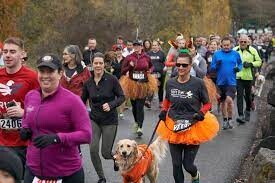
On November 19, the 5K made a statement not only in name but also for those who participated, with some locals running in their own neighborhood for the first time ever. After the race, which took runners to the University of Southern California and back, participants enjoyed an afterparty that included a DJ, food vendors, and a local artists showcase.
For South Central Run Club co-captains Zaakiyah Brisker and Jazmin Garcia, the event marked another major step forward in efforts to heal their community through running. “A lot of times, you can get discouraged and believe that people don't care,” Brisker told Runner’s World. “I really am so grateful for everybody who was courageous enough to say, ‘let's do it,’ because we all deserve to feel good.”
Forming a running community where it’s needed
When Brisker started running, the South Central resident frequented groups that met on the west side of Los Angeles. Soon Brisker realized she was far from the only person who had to travel outside of her South Central neighborhood to participate in LA-area run groups. In 2018, when she started running in her South Central neighborhood more often, she received a surprising reception. She said people rooted for her as she passed by, unlike on the west side, where running is more popular as a form of exercise. At that moment, she wondered why a run club didn’t exist in South Central, where she knew it could thrive.
As a first step, Brisker tried to create an Instagram account under the name South Central Run Club, but the title was already taken. So, she reached out and met the group founder, Garcia, who had the same idea earlier on.
Garcia's running journey began in 2018 when she started attending group runs with her sister and friends. But again, those groups always met outside of her South Central community, and she wanted to change that. Garcia, who also grew up in the area, created the account and invited her neighbors of all ages and abilities to join for weekly runs. Brisker joined too.
In 2020, the pandemic paused the group's efforts. But another chance meeting between Brisker and Garcia kicked things off once again. After the duo reunited while working for a local nonprofit, they decided to combine their visions for the run club.
“South Central has a lot of amazing history of resistance. Sometimes you can walk by something, and you don't know the historical importance of a place,” Garcia told Runner’s World. “We really wanted to highlight those things and have a space where people feel comfortable to come together, run and stretch, and learn a little bit more about our own community.”
Creating space for healing
In early 2021, they brought the run club back with in-person group meetings. On every run, the captains lead the group in discussions based on a different location that holds historical significance. With each gathering, they hope to expand on the mainstream narrative that's been told about South Central. As Brisker explained, most people's perception of the area is based on hip hop influences and films like Menace II Society and Boyz n the Hood, but there are many more stories to be told. “People have created this narrative about South Central that it's impoverished, there's a lot of gang violence and all this other stuff,” she said. “But there are real people from South Central thriving and existing.”
The club focuses on promoting health and wellness in the South Central community by offering initiatives that introduce the sport and make it accessible for all. They host a walk-to-run program and family days, where members are encouraged to bring family members young and old so they can learn to enjoy running and encourage each other to keep it up.
One of the family days is held at the South Los Angeles Wetlands Park, which used to be where metro buses were repaired. Like everything they do, picking the park as a meeting spot was done with intention. “It was a place that caused pollution in our community. It's been a few years now, but they cleaned up the space and transformed it into this beautiful park,” Garcia said. “Every time we start there, we like to say that we see this as a metaphor for the work that we're doing, that the transformation for wellness comes from us.”
Rooted in social impact initiatives, the run club highlights the diversity of the neighborhood by drawing attention to local landmarks, including schools, businesses, and places where critical conversations can be had, Brisker said, “We can expose areas that need to be healed so we can come together better as a community.”
For example, the group often meets for runs in front of public schools that were attended by members of the club. Before the run starts, former students are invited to speak on their experience in the American education system, which often neglects the histories of people in underrepresented groups. “You walk out [of these institutions] feeling super alienated because you can't see yourself in history," Brisker said. “We speak to that. We say those things out loud and validate the experience for a lot of people who run with us.”
Celebrating the resilience of South Central
In the same vein, Brisker and Garcia got into an in-depth conversation ahead of Thanksgiving last year. They discussed the need for more awareness around the Indigenous experience surrounding the holiday, which is considered a day of mourning and protest for many Indigenous people. “There's a lot of pain for people who identify as Indigenous, and on top of that, if you're someone who is from an oppressed community, how can you not relate to feeling like no one is talking about your history or that everybody is celebrating around a time when your ancestors had to go through deep pain and traumatic experiences?” Brisker said.
With turkey trots being the most popular footrace in the country, Brisker and Garcia felt it was the perfect opportunity to address how white supremacy has affected their neighborhood. “Racist policies and white supremacy, like red lining, the amount of ICE presence, and the purposeful disinvestment for decades are directly affecting Black and Brown people in our communities," Garcia said. “We wanted to have that conversation, flip it with the F*** White Supremacy 5K, center the joy of our Black and Brown community, and celebrate our resiliency.”
At the inaugural event in 2021, race organizers brought the community together with local businesses and started a fundraiser aimed to support the wellness needs of 3-6 individuals. This year, the fundraiser continued with a higher goal for grant recipients. At Saturday night’s event, the amount of registrations doubled, and participants outside of South Central were encouraged to take part in a virtual run, so they too can start critical conversations and bring healing to their communities.
(11/26/2022) ⚡AMPby Runner’s World
Turkey trot runner takes out his competitor at finish line
Nothing says “Happy Thanksgiving” like taking out your opposition in a sprint to the finish at a fun run. When one runner at a 10K turkey trot in Troy, N.Y., noticed that the runner behind him was going to outsprint him, instead of duelling it out, he cut him off, forcing him into a roadside barrier.
In the video, the crowd and race announcer were shocked as the two runners bailed into the finish line. The perpetrator, Xavier Salvador of Washington, D.C., impeded the line of Jack Huber of Delmar, N.Y., with 50 metres to go, after noticing Huber approaching on his right.

Salvador was given fourth place (31:46) ahead of Huber (31:47), and was not disqualified. Instead of checking if Huber was OK after the fall, Salvador made sure his GPS watch was stopped.
There was prize money for the top three finishers, but the battle between Salvador and Huber was for fourth place. According to a post-race forum thread, Huber spoke to race officials, but since it was for fourth and fifth place and out of the prize money offerings, they chose not to disqualify Salvador.
Turkey trots are the epitome of a fun run and are a common U.S. Thanksgiving tradition many families participate in before eating turkey.
(11/26/2022) ⚡AMP
by Running Magazine
Brighton Half Marathon is back for its 33rd year
The annual 13.1-mile race returns to Brighton seafront on February 26 2023. It’s organized by Brighton-based charity The Sussex Beacon, which provides specialist support and care for people living with HIV. The race is the charity’s main fundraising event of the year and welcomes around 8,000 runners each year. General entries and charity places for the race are still available now from The Brighton Half Marathon website.
Runners can also support one of more than 30 partner charities, including local charities such as Rockinghorse and national charities including Alzheimer’s Society and Macmillan. The main race starts at 9:30am on Madeira Drive, next to the iconic Palace Pier, before winding its way around some of Brighton’s most iconic sites including Brighton Marina, The Royal Pavilion, The Hilton Brighton Metropole, the i360, The West Pier and the colorful Hove Beach Huts. The flat course is ideal for beginners and more seasoned runners chasing a personal best!

New to 2023, there’s a one-mile Youth Race, designed for junior runners aged 7-17 and located on Hove Prom. The event gives youngsters a unique opportunity to experience the buzz of race day. Entries are now open

Bill Puddicombe, Sussex Beacon chief executive, said: “The Brighton Half Marathon is our biggest fundraising event of the year and allows us to provide specialist year-round support and care for people living with HIV across Sussex. Nicknamed the ‘Happy Half’, the Brighton Half Marathon is a real community event, with thousands of spectators lining the route and local volunteers helping on the day to create a fantastic atmosphere. We can’t wait to welcome the runners back to our fabulous city on Sunday February 26 for another fantastic event!”
(11/25/2022) ⚡AMPBrighton Half Marathon
The Brighton Half Marathon is run on a beautiful seafront course, amazing crowd support and one of the first half marathons on the running calendar. A small group of individuals started the race back in the early 1990s and the money raised from that very first race was used to help fund the building of The Sussex Beacon, the charity...
more...Kenya doping: World Athletics urged not to ban country despite doping cases
World Athletics has been urged not to ban Kenya from the sport for violations of doping rules by a government minister from the East African country.
The nation is reportedly at risk of a sanction following a string of cases, with 55 of its athletes serving suspensions issued by the Athletics Integrity Unit (AIU).
Kenya's situation will be discussed at the World athletics council meeting in Rome next week, BBC Sport Africa understands.

Ababu Namwamba, the cabinet secretary for the Ministry of Youth Affairs, Sports and the Arts, has written to World Athletics president Lord Coe to assure him that Kenya's government is taking firm measures to uphold the integrity of athletics.
"We cannot allow our nation to be banned because of the actions of some greedy unethical individuals," Namwamba said.
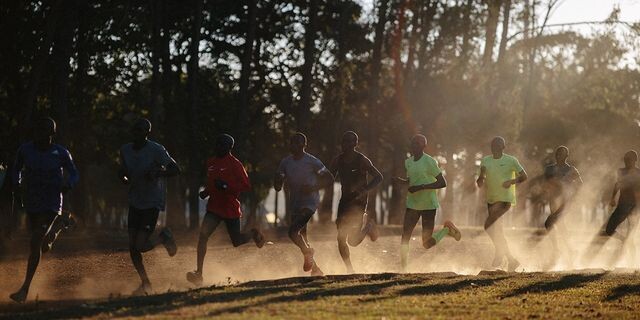
"We will target and deal decisively with the criminals and their syndicates. We must work together to eradicate doping and cheating from athletics and sports in general."
Kenya is among seven countries deemed a 'Category A' federation - the highest doping risk - by the AIU, meaning athletes from the countries have to undergo at least three tests in the 10 months prior to a major event to be able to compete there.
Its total of 55 athletes serving bans is the third most of any nationality behind Russia (102) and India (61).
Russia has been banned by World Athletics from competing as a nation in athletics since 2015 but untainted athletes were still able to compete under a neutral flag until the country's invasion of Ukraine in February, when all athletes, support personnel and officials from the country were banned.
Seventeen Kenyan athletes have been sanctioned by the AIU this year for a range of violations, with a further eight provisionally suspended and awaiting the outcomes of their cases.
An overarching ban by World Athletics and the AIU would be a huge blow to the reputation of the East African country, which has won 34 of its 35 Olympic gold medals in track and field events.
The National Olympic Committee of Kenya (NOC-K) welcomed the government's intervention and said it would continue supporting "all efforts and actions as a partner in dismantling all systems and avenues perpetuating the vice of doping in athletics".
A statement from the body said the country had built an "illustrious history" in the sport and that "it is not ready to sacrifice this reputation due to the greed of a few actors".
"We join our voice in pleading with World Athletics and other parties to withhold any punitive measures such as a ban and consider the multifaceted efforts of the Kenyan community, led by the government, as a positive sign and contribution towards a zero-doping environment in Kenya," NOC-K president Paul Tergat added.
Two-time Olympic champion and marathon world record holder Eliud Kipchoge has said the increasing number of doping cases is "worrying" and "clean sport is the way to go".
The Ministry of Youth Affairs, Sports and the Arts said Kenya has a zero tolerance to doping and is "fully committed to ending the doping menace".
"We must defeat doping and its perpetrators. This is a serious concern and that is why the government is giving total undivided attention," Namwamba added.
"We are treating it as a matter of top strategic national interest."
(11/25/2022) ⚡AMPby BBC Sport
Jamaica´s Asafa Powell, 100m world record holder before Usain Bolt, retires
Jamaican Asafa Powell, who held the men’s 100m world record before Usain Bolt, has retired from track and field.
Powell held a 40th birthday and retirement party on Wednesday. Bolt filmed a video to wish his countryman well upon retirement.
Powell last raced in May 2021, according to World Athletics, and did not compete at Jamaica’s Olympic Trials last year.

He raced at the Olympics in 2004, 2008, 2012 and 2016, earning 4x100m relay gold in Rio. His best individual finish was fifth in the 100m in 2004 and 2008.
Powell owns the record of 97 career sub-10-second 100m performances, the last coming on Sept. 1, 2016.

Powell lowered the 100m world record to 9.77 seconds on June 14, 2005. He held the mark until Bolt broke it on May 31, 2008, for the first of three times. He is the fastest man in history without an Olympic or world 100m title.
In 2004, Powell had the fastest semifinal time at the Athens Games, then placed fifth in the final won by Justin Gatlin.
In 2008, after injuries early in the year, Powell had the second-fastest semifinal time in Beijing. He placed fifth in the Olympic final again.
In 2012, Powell pulled up in the 100m final and was the last finisher. In 2016, he made the Jamaican Olympic team strictly for the relay.
Powell is the fourth-fastest man in history with a personal best of 9.72 seconds, trailing contemporaries Bolt (9.58), Tyson Gay (9.69) and Yohan Blake (9.69).
Bolt retired in 2017. Gay, also 40, last raced in May 2021. Blake, 32, ran 9.85 in June, his best time since 2012, when he took Olympic 100m and 200m silver behind Bolt.
(11/25/2022) ⚡AMP
by Olympic Talk
Three things this pro ultrarunner is doing to save the planet
Ultrarunner, coach and activist Damian Hall is taking steps to tackle the climate emergency and has advice for runners who want to do the same. U.K.-based Hall is a record-breaking endurance athlete who holds multiple huge FKTs, including the Cape Wrath Trail, Wainwright’s Coast to Coast and the Pennine Way; he also took fifth at UTMB in 2018.
Hall uses his record attempts to raise awareness about the climate emergency, including taking public transport to races and fuelling without animal products or plastic waste. He collects litter and raises money for Greenpeace on his runs, and has recently written his second book: We Can’t Run Away From This.
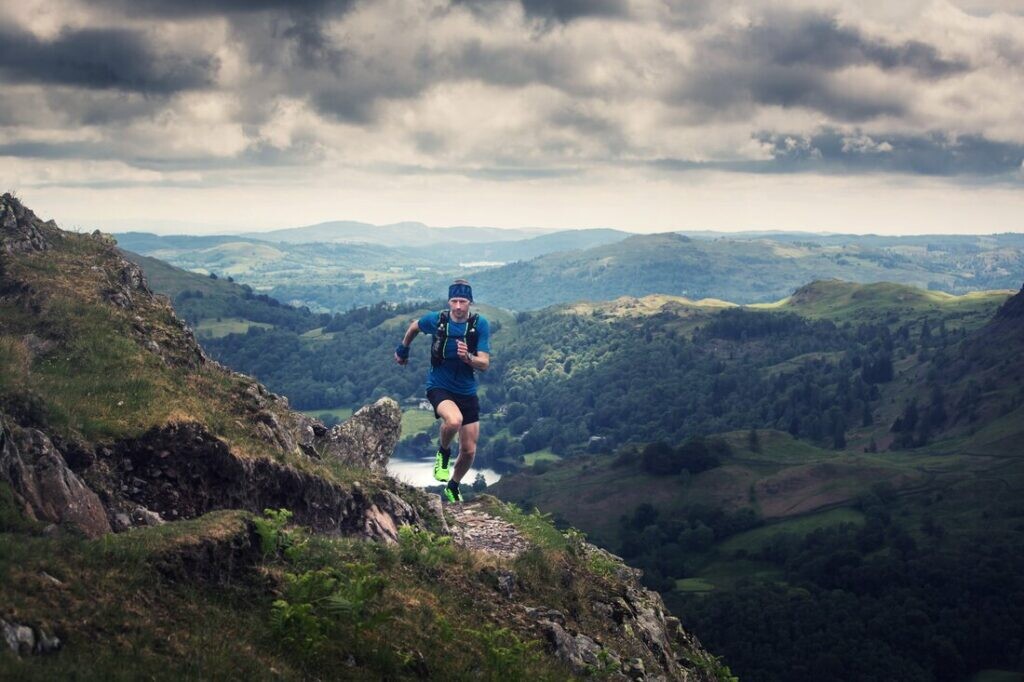
Hall is also co-founder of The Green Runners, a group that strives to inform runners about their impact on the planet (when training, eating and racing) so they can make decisions about how to change their behaviour.
“Though I think individuals should only fuss about their individual CO2e [carbon dioxide equivalent] footprint so much, there are three big areas where we can reduce our impact,” says Hall. Travel, diet and gear (or kit, as Hall calls it) are what Hall calls the big three. Here’s what we can all do.

Limit travel to races
“For most runners and outdoor folk, the largest slice of their individual emissions will be caused by travel, which accounts for one-fifth of global emissions. Flying is the most carbon-intensive thing we can do, Hall recently explained to Adventure Books.
Hall suggests using public transportation as much as possible, but that can be tricky in North America. Public transportation (i.e., trains) is not nearly as accessible in Canada as in Europe, and with many runners living outside of big cities, travel can seem like a necessary evil in order to race.
While carpooling whenever possible helps, I asked Hall for more suggestions around this. “That’s tricky, and I think individuals who already care and are already making sacrifices shouldn’t punish themselves too much further. We should continue to do the things that give us joy, but maybe with a little less harm to the planet where possible,” says Hall.
Hall’s tip: “Nowadays I ask myself: A. Do I really need to do the race? B. If so, what’s the lowest-carbon way I can practically travel there? C. Can I stay longer and/or make more out of the trip? D. Offsetting definitely isn’t the solution, but I do it anyway.”
Eat less meat
“Eating meat is terrible for the planet,” says Hall. “Meat and dairy alone are responsible for 18 per cent of global CO2e, more than travel. Beef is by far the worst offender. This graph turned me vegan,” he adds. “A quarter of our footprint comes from food, and it can be reduced by over 70 per cent simply by cutting out animal flesh and juices.”
What about locally or sustainably-raised meat? Hall says it’s just as bad. “Eating local isn’t usually better environmentally (90 per cent of international food is shipped, which is really efficient). “Food waste is also far more significant than where the food came from and what it’s wrapped in,” he explains.
Buy less gear
Those shoes you purchased because they were touted as eco-friendly? Hall says they’re part of the problem. ‘The industry excels at “greenwash,” bandying phrases like “eco-friendly” about while pumping out an endless stream of products in what constitutes an overconsumption crisis,” he explains. The running shoe industry is responsible for approximately the same annual emissions as the entire U.K., Hall shares.
“Those shoes are almost all made from plastic (i.e., fossil fuels), almost all are non-recyclable and brands tell us we should bin our daps after 300 miles in case they injure us (which no studies prove),” says Hall. Our running attire is just as bad. “The clothing industry as a whole is responsible for many times more pollution again, possibly as much as 10 per cent of global CO2e,” adds Hall. “And then there’s the large range of environmental and ethical issues around the production process.”
Hall’s tip: “The most sustainable kit is the stuff we’re already wearing. We need to buy less and make it last longer.”
‘To me it’s fairly simple: do your best with the big three: travel, kit and diet. No one is, or can be, perfect. We’re just seeking progress,” says Hall, explaining that we don’t need to entirely give up the things we love. He has one more tip for us–advocate. “Help push for system change. Join protests, vote, email your representatives, push for changes in your local running club or race.”
(11/25/2022) ⚡AMPby Keeley Milne
Connor Mantz breaks record, Weini Kelati wins again at Manchester Road Race
Connor Mantz won the Manchester Road Race in record time.
The 25-year-old from Provo, Utah, won the race with a time of 21:04, beating the record set more than four years ago. It's a duel celebration for the runner as he is also celebrating his honeymoon.

In the women’s race, 25-year-old Weini Kelati defended her record-breaking 2021 title, handily winning her second Manchester Road Race. She was named Queen of the Hill.
Much like in 2021, Kelati began her race early and paced with some of the elite male runners. During the race, no other woman could pace with Kelani. For some pockets of the race, Kelati paced by herself, running faster than some of the elite men.

Kelati, an Eritrea-born runner, validated her world-class ambitions by winning two national championships in New Mexico. She turned professional and joined the Dark Sky Distance running club. In 2021, she met the Olympic qualifying standard for 10,000 meters. That year she came to the U.S.
Wesley Kiptoo, 23 from Kenya, won King of the Hill, which has a $1,000 prize.
Kiptoo came in third place overall, while Morgan Beadlescomb came in second.
Over 10,000 runners were registered for this year's race. It is the final year for longtime race director Jim Balcome, who, with his team, built the race into a world-class event.
The course is a 4.748-mile loop through the town’s central streets. It starts and finishes on Main Street, in front of St. James Church.
(11/24/2022) ⚡AMPManchester Road Race
The Manchester Road race is one of New England’s oldest and most popular road races. The 86th Manchester Road Race will be held on Thanksgiving Day. It starts and finishes on Main Street, in front of St. James Church. The Connecticut Sports Writers’ Alliance recently honored the Manchester Road Race. The CSWA, which is comprised of sports journalists and broadcasters...
more...Nine Comrades Marathon runners disqualified for cheating
Nine runners’ results have been disqualified from the 2022 Comrades Marathon following an investigation into alleged cheating during the race.
According to a statement by KwaZulu-Natal Athletics (KZNA), the provincial sport organization, the investigation found that nine athletes did not run the entire point-to-point 90 km course and allowed other athletes to run with their race bibs, while some provided incorrect qualification information.

To qualify for the Comrades Marathon, entrants must run a marathon in less than four hours and 50 minutes.
All nine runners are required to return their 2022 Comrades Marathon medal and will be reported to their provincial athletics organization club, which has the right to apply additional disciplinary measures. These runners are prohibited from entering the Comrades Marathon in years to come, according to the Comrades Marathon Association.
According to a statement, this decision is intended to send a clear message to athletes that cheating will not be tolerated: “These investigations are in line with us standing up for the rules of the sport and not condoning cheating in any form,” said KZNA president Steve Mkasi.
Comrades is the largest and oldest ultramarathon in the world, comprising a 90 km route between Pietermaritzburg and Durban, South Africa, and usually alternates directions each year. This year’s race took place on Aug. 28 and was won by a full-time security guard and part-time marathoner, Tete Dijana.
(11/24/2022) ⚡AMPby Running Magazine
British man runs 67-minute half-marathon inside Heathrow Airport
Two prominent British YouTubers, Josh Pieters and Archie Thomas Manners, staged a one-of-a-kind race at Europe’s busiest airport, London Heathrow. The duo invited six of Team GB’s top distance runners to race a half-marathon in the waiting area before their flight to Belfast. Steeplechaser Dan Jarvis won the inaugural Heathrow Airport Half in a fast time of 67:30, given the circumstances.There are 500 marathons in the U.K. each year–none of them in an airport.
Every traveller is told to get to the gate two hours before their flight, and Josh & Archie had the idea of using those two hours to host a half-marathon inside Heathrow’s Terminal 5 departure lounge. The YouTubers booked the athletes’ flights to Belfast (because it was the cheapest destination) and wheel-measured a 2.1 km loop around the departure lounge, which the runners would complete 10 times while avoiding other airport patrons (and potentially getting arrested).
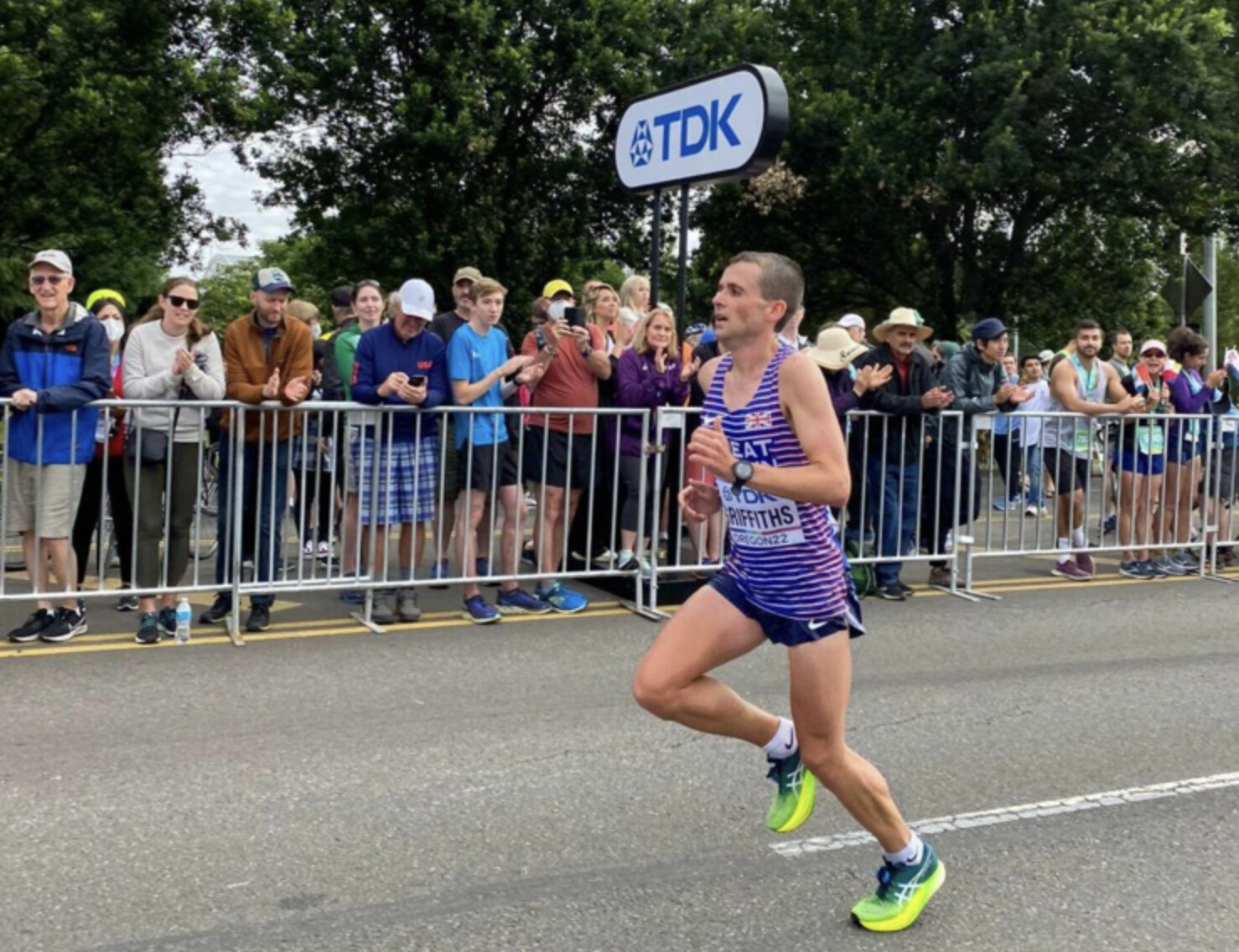
Some of the elite athletes included 2:11 marathoner Josh Griffiths, who was eighth at the 2021 London Marathon and 14th at the 2019 Toronto Waterfront Marathon; 2:14 marathoner Ross Braden; and British 100K champion Matt Dickinson.From the video, a pack of four men established an early lead through 10K, with Jarvis taking the lead in the latter stages. Jarvis, who has a half-marathon PB of 67:10 from 2021, broke the tape in front of their gate to Belfast to win the 500-pound purse.
Josh & Archie’s added prize money to attract top-level talent to the race. The concept of their videos is to take on unusual/crazy challenges in a unique public setting. Airport patrons did not seem to care that this event was taking place and gave a few distinct looks.
The inaugural Heathrow Half champion, Jarvis, is currently training for the 2022 Valencia Marathon on Dec. 4, where half marathon world record holder Letesenbet Gidey is planning to debut.
(11/24/2022) ⚡AMPby Running Magazine
David Rudisha mulls over transition to coaching
David Rudisha, the 2012 and 2016 Olympic 800m champion who last raced internationally five years ago, reportedly said he is considering transitioning into coaching.
“Actually I was thinking of coming back but at my age, I can’t make it in my specialty,” the 33-year-old Rudisha said, according to the Star in his native Kenya. “I have been discussing with my coach about coaching so it is an avenue I look forward to exploiting.”

Rudisha, who last raced internationally on July 4, 2017, missed time in the last Olympic cycle due to a quad muscle strain, back problems, a car crash and surgery for a broken ankle. He underwent left leg surgery last November.
In his absence, another Kenyan, Emmanuel Korir, won the 800m at the Tokyo Olympics and this past July’s world championships.

“I would have liked to shift to long-distance races, but my body is meant for short races,” Rudisha said, according to the report. “It won’t be long before I make my retirement plans public, but it’s a joy to watch the boys rule the world because that means we are still strong in the specialty.”
At the 2012 Olympics, the Maasai warrior Rudisha lowered his world record to 1:40.91, leading from the break and towing six of the seven other finalists to personal bests in arguably the single greatest highlight of those Games.
Nobody has run within .97 of a second of Rudisha’s world record since he set it.
(11/24/2022) ⚡AMPby Olympic Talk
Ethiopian Letesenbet Gidey is set to make marathon debut in Valencia
The Valencia Marathon Trinidad Alfonso announces its elite international line-up for its 42nd edition on December 4.
Some of the best athletes on the international scene will take to the streets of Valencia “Ciudad del Running” with the aim of improving the course record (2:03:00) and seeking the best women’s debut in the history of the event.
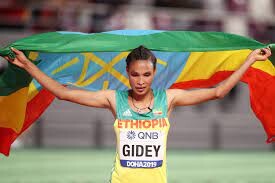
Tamirat Tola (2:03:39), the reigning World Marathon champion, heads the men’s line-up alongside his Ethiopian compatriots Getaneh Molla (2:03:34) and Dawit Wolde (2:04:27) in a preliminary list with up to seven athletes with fastest times under 2:05 over the Marathon distance.
Kenya, a world power in the marathon, will be well represented not only by Jonathan Korir (2:04:32), but also by a trio of important debutants over the distance: Alexander Mutiso, Philemon Kiplimo and Kelvin Kiptum. Attention will also be focused on another athlete who will be initiated at 42,195 metres: the Ethiopian Milkesa Menghesa, the winner of the Copenhagen Half Marathon.

In the women’s category, the spotlight will be on the long-awaited debut of Ethiopia’s Letesenbet Gidey (currently world record holder in the 5000, 10000, 15K and half marathon, two of which were achieved in Valencia), who will make an eye-catching debut in a marathon on 4 December with the realistic ambition of beating the time of 2:17:23 (world record for a debutant), but also of getting as close as possible to the women’s world record of 2:14:04 (Brigid Kosgei, Chicago).
The Kenyan Sheila Chepkirui, also a debutant, could become the other female star of the Valencia Marathon in 2022, without forgetting some of the other runners included in this line-up with excellent times: Sutume Kebede (2:18:12) and Etagegne Woldu (2:20:16), who achieved second place last year in this marathon.
Marc Roig, international elite coach for the Valencia Marathon, assesses the line-up: “We are very proud that Letesenbet Gidey has chosen Valencia to make her marathon debut. It is a clear demonstration that we are an attractive marathon and of the very strong links between Gidey and the city of Valencia. But, as ever, the Valencia Marathon is not based on a single name: fifteen of the women have run under 2h26 and fourteen of the men under 2:07. And let’s not forget the three debutants with 58 minutes and another one with 57 minutes in the half marathon”.
(11/24/2022) ⚡AMPby AIMS
VALENCIA TRINIDAD ALFONSO
The Trinidad Alfonso EDP Valencia Marathon is held annually in the historic city of Valencia which, with its entirely flat circuit and perfect November temperature, averaging between 12-17 degrees, represents the ideal setting for hosting such a long-distance sporting challenge. This, coupled with the most incomparable of settings, makes the Valencia Marathon, Valencia, one of the most important events in...
more...Emma Coburn’s Pumpkin Spice Muffins
American track superstar and Olympian Emma Coburn, author of the cookbook The Runner’s Kitchen, says that she savours these muffins in winter when pumpkin spice vibes are at their peak: “I often eat these as a snack before my afternoon run. They give me good fuel but are easy on my stomach.”
These muffins are a staple in our household–simple and quick to make, they’re also really adaptable. If you’re looking to cut sugar, using applesauce as a substitute has worked great for me, and I’ll often add a handful of nuts and grated carrot or zucchini. The recipe also works perfectly as a loaf–the smell of it cooking will have you adding it to your weekly rotation.

Emma Coburn’s Pumpkin Spice Muffins
Ingredients

1 3/4 cups all-purpose flour
1 1/2 cups granulated sugar
1 tsp baking soda
1 tsp salt
2 tsp ground cinnamon
1 tsp ground cloves
1 tsp ground nutmeg
2 tsp ground ginger
2 eggs
1/2 cup vegetable oil
1/2 cup sour cream
1 15 oz (425g) can pumpkin
Directions
Preheat the oven to 180 C (350 F). Line a 12-cup muffin pan with paper liners.
In a medium bowl, combine the flour, sugar, baking soda, salad, cinnamon, cloves, nutmeg, and ginger.
In a large bowl, combine the eggs, oil, sour cream and pumpkin. Stir until well combined. Slowly add the dry mixture to the wet mixture, and stir until just combined.
Evenly distribute the batter amount in the 12 muffin cups, filling each 3/4 full. Bake for 25 to 30 minutes or until a toothpick inserted in a muffin comes out clean.
Emma’s tip: use a spring-action ice cream scoop for an easy, tidy way to fill muffin cups.
(11/24/2022) ⚡AMPby Keeley Milne
Four ideas for recycling your retired running shoes
Goodbyes are tough, especially when it comes to your running shoes. Shoes are arguably the most important part of your running wardrobe, which is why runners spend so much time and money looking for the right pair.
The memories and money associated with running shoes are what make throwing them away hard, but there are a few ways to extend their lifespan.
On average, runners should replace their shoes after about 600 to 800 kilometers. That said, how long your shoes last depends on cushioning, structure and durability. Any aches and pains may also indicate it’s time for a new pair of shoes. Usually, this occurs because soles are compressed and no longer provide the same level of cushioning and shock absorption, increasing the stress on your muscles and joints.
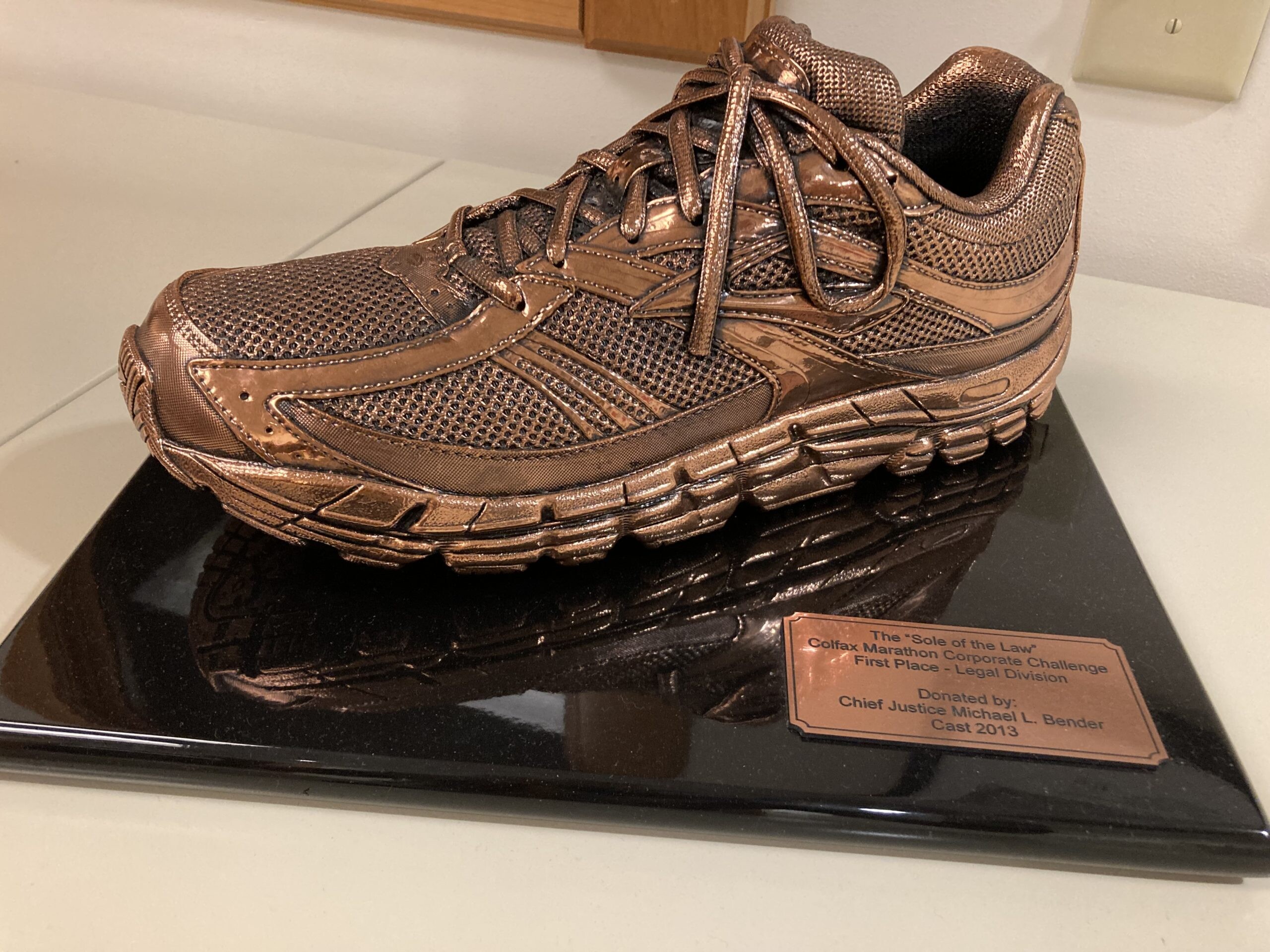
1) Treat them as a trophy
If your shoes helped you run your first marathon or complete your first sub-20 5K, take a Sharpie and write the total mileage run in the shoes and its significance to you. Record the race name, date and time, and any other events. Those who aren’t runners may think it is odd house decor, but other runners are bound to think it’s a neat idea. If you don’t want to keep the entire shoe, cut out the tongue and write the info on there.

2) Relegate them to the gym
Just because the cushioning may be shot for running, it doesn’t mean they can’t be worn while you lift weights or use the Stairmaster in the gym. Unless there are holes in the soles or a carbon plate… your old runners should be fine to walk around the gym, doing non-impact exercises.
3) Donate to your local running store
Many independent running stores and Running Room locations across Canada have programs for recycled shoes, giving them to low-income communities or people in need. Contact your local running store and ask if they have a shoe recycling program. With this approach, at least you know they will go to someone in need.
4) Use them for yard work
The garden is where all good running shoes go to die. Gardening is a strenuous activity, and you need a shoe that’s comfortable and that you’re not afraid to get a little dirty. There is nothing more honorable than grass stains on your old carbon racers.
(11/23/2022) ⚡AMPby Running Magazine
Try these short intervals to boost VO2 max
Your VO2 max, the maximum amount of oxygen your body can use during dynamic exercise, is an important measure of aerobic fitness. While it’s only one of many factors that determine athletic performance, improving your VO2 max can help you get faster. Short interval sessions are an effective way for runners of any level to target VO2 max and boost speed.
When running short VO2 max intervals, being familiar with running by effort can be useful, especially if you’re using a watch (rather than a chest strap) to monitor heart rate. The lag on your watch won’t accurately report your heart rate during the interval, so focus on running at a hard effort–as fast as you can while maintaining the same effort throughout the entire interval session.
This takes practice, so don’t worry if you find it challenging to find the right pace at first. You can run these intervals on a track, road or trail.

Short interval workouts
While longer intervals and sprint intervals can also be used to boost VO2 max, these short intervals are a simple, fast way to get into the zone. The recovery time (try to keep moving) will probably feel slightly too short.

Warm up with 10 minutes easy running, and try one of the following, adjusting the number of intervals according to your ability:
30 x 30 seconds hard with a 15-second break
20 x 40 seconds hard with a 20-second break
15 x 60 seconds hard with a 30-second break
Cool down with 10 minutes easy running.
These workouts are all made up of short intervals with very short active recoveries to keep oxygen consumption high throughout the entire session. The first few intervals likely won’t feel too taxing, but the intervals will quickly start to add up, so you’ll feel spent by the time it’s complete.
(11/23/2022) ⚡AMPby Keeley Milne
NCAA champion Katelyn Tuohy signs sponsorship deal with Adidas
On Nov. 22, only three days after Katelyn Tuohy won her first NCAA XC Championship, she announced on her Instagram that she has signed a name, image and likeness (NIL) sponsorship deal with Adidas Running.
“Joining the three stripes fam couldn’t feel more right,” Tuohy said on Instagram. “I am excited to join the Adidas team and their amazing crew of student-athletes.”

Two years ago, all NCAA athletes were prohibited from profiting from their fame, and it was not until July 2021 that NCAA passed a rule allowing student-athletes to monetize their name, image, and likeness. Although a NIL deal does not have the same monetary value as a pro deal, it allows an athlete to continue competing at the collegiate level while earning money from their image.
According to the collegiate sports website On3, Tuohy is ranked as the 39th most popular female athlete across all NCAA sports and carries a brand valuation of nearly CAD $100,000.

Tuohy is one of the best-known distance runners in the NCAA right now due; the third-year student at North Carolina State University is a three-time NCAA champion, winning the 5,000m title last spring and the XC individual and team title at the 2022 NCAA XC Championships.
She began to make headlines as a high school athlete in 2018 when she set a U.S. high school 5K record of 16:06.87. Tuohy also won the Gatorade Athlete of the Year for cross-country, given to the top U.S. high school athlete. She won this award in three of her four years, becoming the only athlete in any sport to accomplish this.
(11/23/2022) ⚡AMPby Marley Dickinson
Four tempo sessions you can fit in at lunch
Life can be ridiculously busy at the best of times, and even the most dedicated runner will have occasions where it’s challenging to fit in a scheduled workout. Here, we have four challenging workouts (save these for your harder days) you can fit in before work or on a lunch break, and still have time for a quick shower.
A tempo run involves a prolonged or sustained moderate effort. Tempo sessions are perfect practice for racing, and the key to avoiding injury while doing these is not starting too hard. Coach and author David Roche suggests breaking a tempo session into three parts: for the first third, focus on running smoothly. On the second section, think relaxed, and for the final section, think fast(er).
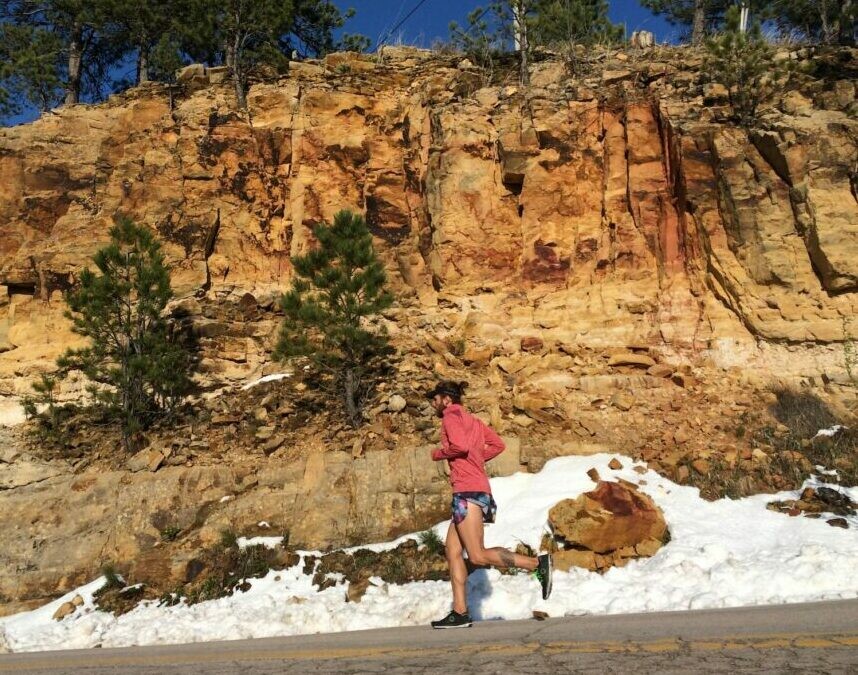
“A perfect tempo gets slightly faster as it goes, but is enjoyable until the very last push at the end (when you might even sprint for one minute if you’re feeling strong),” says Roche.
Short tempo run

10 minutes easy running to warm up
21-minute tempo run at moderate effort
10 minutes easy running to cool down, with 4 x 30 seconds fast mixed in
Broken-up tempo workout
10 minutes easy running to warm up
2 x 10 minutes tempo run (moderate) with 5-minute jog recovery in between
10 minutes easy running with 4 x 30 seconds fast mixed in
Simple tempo repeats
10 minutes easy running to warm up
3 x 8 minutes tempo run at moderate effort, 3-minutes easy recovery running in between
10 minutes easy running to cool down
Longer (still short) tempo run
5–10 minutes easy running to warm up
30 minutes tempo run at moderate effort
5 minutes easy running to cool down
Roche adds a suggestion for time-crunched athletes–don’t let the need for the perfect workout get in the way of a simply good or even OK run. “If you only have a few minutes on a workout day, mix in some unstructured intervals where you can’t fail–in other words, don’t try to hit particular splits, but run based on effort and leave the watch at home,” says Roche.
Get out there and do what you can, even if time is limited. You’ll feel better than if you did nothing at all, and consistency pays off. Remember to follow a hard workout session with an easy running or recovery day.
(11/23/2022) ⚡AMPby Keeley Milne
Kilian Jornet’s favorite fuel: you’ll feel like you’re ready to summit Everest
Arguably the GOAT of ultrarunning, 2022 UTMB and Hardrock champ Kilian Jornet lives in Norway with his partner (and fellow pro runner) Emilie Forsberg, where they grow their own vegetables and use them to create nutritious meals. They love these bean and lentil burgers, and you will too–full of protein and adaptable to every season.
Forsberg shares the recipe in her book Skyrunner: the burgers take less than ten minutes to prep, and work as a side or main dish. Forsberg writes: “I can eat these anytime, in summer with a light salad and roasted or grilled root vegetables, or in autumn or winter with tasty mashed potatoes, olive oil and salt.” Forsberg and Jornet eat mostly plant-based meals, and the combo of beans and lentils in these burgers packs a perfect plant-based protein punch.
Emelie’s bean and lentil burgers (makes 12 larger burgers)

Ingredients
1¾ cup cooked black beans

¾ cup cooked green lentils
¾ cup cooked red lentils
1 egg
3 Tbsp cornmeal
½ to 1 finely chopped onion
Salt and pepper
Other spices, like turmeric or chili powder, to taste
Olive oil for frying
Directions
Mix everything in a blender or food processor. Form the batter into burgers; fry in olive oil.
(11/22/2022) ⚡AMPby Running Magazine
Turkey’s Yasemin Can and Burundi’s Thierry Ndikumwenayo claim Italica titles
Turkey’s Yasemin Can and Burundi’s Thierry Ndikumwenayo secured respective victories at the Cross Internacional de Itálica on the outskirts of Seville in what was the sixth World Athletics Cross Country Tour Gold meeting of the season, on a sunny and pleasant Sunday (20).
While Can prevailed over Uganda's Peruth Chemutai in a thrilling clash, Ndikumwenayo unleashed a sprint victory over his training partner Rodrigue Kwizera and a star-studded line-up.
The women’s contest was held over the slightly longer distance of 10.1km, but that was no barrier for Olympic steeplechase champion Chemutai, who took control of the race from the start. After just one minute into the race, only Kenya’s Purity Chepkirui and Nancy Jepleting, Yasemin Can and Ethiopia's Meselu Berhe managed to stay close to the 23-year-old Ugandan. Berhe was the first casualty as she began to lose ground before the second kilometer.

While Chemutai made most of the pacing duties at 3:18/km pace, 2021 world U20 1500m champion Chepkirui ran closest to her shoulder with four-time European cross-country champion Can in third and Jepleting in fourth. The first serious move came just before the fourth kilometer when Chemutai's relentless rhythm began to pay off as firstly Jepleting and then Chepkirui began to falter, leaving Can as Chemutai’s only rival.
Way behind the top-five, Spain's Isabel Barreiro, the winner in Amorebieta, headed a five-woman chase pack which also included steeplechase specialists Irene Sánchez-Escribano and Olympic finalist Carolina Robles, plus 5000m specialists Marta García and Portugal's Mariana Machado.

After successive 2.5km loops of 7:56 and 7:54, Can decided to take charge of the race, moving ahead of Chemutai with Chepkirui 14 seconds in arrears. Midway through the penultimate lap, Barreiro injected a brisker pace in pursuit of Jepleting and Berhe.
Can and Chemutai, timed at 8:01 for the penultimate lap, were locked in battle as they set off on the final lap. The Ugandan, who placed fifth at the 2019 World Cross in Aarhus, tried to get rid of Can on an uphill section with 750 meters remaining, but the Turk held off her challenge to regain the lead, launch her attack some 450 meters from home, eventually crossing the finish line unopposed in 32:31 to the Ugandan's 32:34.
More than a minute further back, Chepkirui secured third place while Barreiro displayed the form of her life as she passed Jepleting and Berhe to finish fourth. A fast-finishing García was a creditable fifth as she pipped Berhe in the home straight.
At the finish line, Can expressed her happiness at the win and felt optimistic about her chances at the European Cross Country Championships in Turin on 11 December, the day of her 26th birthday.
Ndikumwenayo maintains momentum
The men's race started with Spain's 2017 European cross-country silver medalist Adel Mechaal at the front of the pack. The 32-year-old led a large group with all the main favorites such as Ndikumwenayo, his fellow Burundian Rodrigue Kwizera and the Kenyan pair of Stanley Waithaka and Levy Kibet in close attendance.
With the clock reading 11:00, the in-form Ndikumwenayo moved to the front for the first time to head a group of eight. Ndikumwenayo heated up the pace as the leading group covered the second lap in 7:09 for the opening cicuit's 7:21. By halfway, Spain's world 1500m bronze medalist Mohamed Katir was in second place ahead of Kwizera and Waithaka, but midway through the penultimate circuit Eritrea's Merhawi Mebrahtu took the lead and his frantic pace whittled down the lead group to six men. After another swift lap, which only took 7:04, Kwizera led at the bell with Ndikumwenayo and Katir closest to him.
The Castellón-based Kwizera pushed hard throughout the closing lap, setting a cadence that Katir could not maintain before entering the final kilometer. Shortly afterwards, 19-year-old Mebrahtu lost any chance of a podium place and the race became a double Burundian-Kenyan affair, a duel resolved in favor of the former as Kwizera and Ndikumwenayo managed to build a sizeable margin on the Kenyan pair some 500 meters from home.
The two leaders completed the final lap in a brisk 6:50 before negotiating the tricky final bend. Once again, Ndikumwenayo – who ran a world-leading 7:25:93 for 3000m earlier this year – produced a speedy finish and prevailed over Kwizera, but only just as both were credited with the same time, 28:51. Six seconds back, Kibet took third place after overtaking Waithaka in the closing stages.
“This is my third win a row this cross country season,” said a delighted Ndikumwenayo. “I'm surprised because I only began to train a couple two months ago after the summer break but I feel great both physically and mentally. I'll now stop competing and will do a 25-day training camp in the altitude of Sierra Nevada (3479m). My next event might be a New Year’s Eve race in Spain but it's not confirmed yet.”
Leading results
Women
1.- Yasemin Can (TUR) 32:31
2.- Peruth Chemutai (UGA) 32:34
3.- Purity Chepkirui (KEN) 33:47
4.- Isabel Barreiro (ESP) 33:57
5.- Marta García (ESP) 34:07
6.- Meselu Berhe (ETH) 34:08
7.- Carolina Robles (ESP) 34:11
Men
1.- Thierry Ndikumwenayo (BDI) 28:51
2.- Rodrigue Kwizera (BDI) 28:51
3.- Levy Kibet (KEN) 28:57
4.- Stanley Waithaka (KEN) 29:00
5.- Merhawi Mebrahtu (ERI) 29:08
6.- Mohamed Katir (ESP) 29:17
7.- Nassim Hassaous (ESP) 29:27.
(11/22/2022) ⚡AMPby World Athletics
Cross internacional de Italica
The Cross Internacional de Itálica is an annual cross country running competition it will be held on 21st of November in Santiponce, near Seville, Spain. Inaugurated in 1982, the race course is set in the ruins of the ancient Roman city of Italica. As one of only two Spanish competitions to hold IAAF permit meeting status, it is one of...
more...Top U.S. decathlete banned three years for doping-related offences
The top-ranked U.S. decathlete, Garrett Scantling, who finished fourth at the Tokyo Olympics, has been suspended for three years by the United States Anti-Doping Agency (USADA) for a possible tampering violation stemming from his third out-of-c0mpetition whereabouts failure. Scantling will miss the Paris 2024 Olympic Games.
Scantling, 29, has the world-leading decathlon score of 8,867 points from the U.S. Combined Event Championships in May. He was one of the favourites to medal at the 2022 World Championships in Eugene, Ore., but was provisionally suspended on whereabouts only days before it began.

On June 27, according to the USADA, Scantling committed his third whereabouts failure in 12 months, triggering a two-year ban.
During an investigation into his third potential whereabouts failure, Scantling also sent an email protesting his innocence, and was hit with a tampering violation.

Scantling got a one-year reduction for admitting the violation and accepting the sanction within 20 days of being notified of the alleged charge. This ban will leave him out of competition until 2025.
“Unfortunately, there is no leniency for being forgetful. You have to accept responsibility and move on,” Scantling said on social media after the provisional ban.
According to the USADA, Scantling was successfully tested nine times between his first whereabouts failure and his provisional suspension.
“The rules keeping sport fair and clean can be inconvenient, but athletes fulfilling their obligations under the rules is critical to protect the integrity of competition for all,” said USADA chief executive Travis Tygart in a press release.
(11/22/2022) ⚡AMPby Marley Dickinson
How hard should your hard workouts actually be?
Most of us have come across a workout that tells us to ‘run hard’ for a prescribed length of time and wondered what, exactly, a hard effort constitutes. Is it a sprint? 5K pace? A half marathon pace? Should it just feel tough? All of these efforts can seem hard given enough duration. Many runners now follow the general rule of 80/20, but how hard should that 20 per cent actually be?
Like most great running (and life) questions, the answer falls somewhere firmly in the ‘it depends’ realm. Performance coach and author Steve Magness points to philosopher Nassim Taleb’s barbell strategy of economics when he explains that we should spend most of our time on either extreme (where the weight would be on a barbell) and stay away from the middle. In deciding how challenging your workouts should be, the same principle applies.
Eighty per cent of our workouts should be on the low-risk, low-reward side
This area is where consistency comes in (I know, I know, we said we’d talk about hard workouts–bear with me here). Magness has outlined his take on easy vs. hard efforts repeatedly, and his explanation seems to work for most runners, whether you’re training for a 5K PB or an ultra.

You’ll be able to run your hard workouts hard if you keep your easy sessions easy–easy workouts are simple, and you are able to accomplish them regularly without risk of falling apart in the workout. This builds a base, fosters good habits, and the workouts are what Magness calls “safe, consistent, small behavioral changers.”
Avoid the middle area
The middle of the barbell, where you log medium effort and gain medium rewards, should be avoided for the most part. If you’re like most runners, the middle ground is where you’ll naturally try to run, and it takes practice to both run slowly on easy days and put in serious efforts on challenging days.

As a coach, I was taught that the middle ground gives you the least bang for your buck. Running slowly most of the time has a multitude of benefits, allows us to recover quickly and will leave room for us to really push in the hard workouts we do; we follow a hard workout by recovering appropriately (or running easily).
Twenty per cent should be harder; with a few workouts a year extremely hard
Magness explains that the remaining 20 per cent of your workouts, your harder workouts, are tough but doable. For many athletes following a training plan these will make up one to two workouts a week.
Paces and efforts may be described as moderate, medium-hard, or hard, and you should feel like you’re putting in work–for a short interval session, this might mean you’ll feel slightly out of breath.
For a long interval session, this may mean you’re working hard to maintain a slightly faster-than-is-comfortable pace over a 15–20 minute stretch. Getting to know your ‘hard’ efforts takes practice, and it can help to ask yourself (or your coach, if you have one) what the goal or intention behind each specific workout is.
A few times a year, Magness recommends going really hard. “What I’d call a perspective changer, or as my athletes refer to as ‘see god days,'” Magness explains. “During these workouts, we want to go as hard as we can, and if we fail that’s OK. It’s all about seeing where our limits are and pushing our perspective of what is hard.”
By mixing the two extremes, the smaller moderately stressful workouts allow us to cement some of the changes from the perspective-changing workouts. Hard is different for everyone and may be different for you on two separate workout days depending on a multitude of factors (the amount of rest you’ve had, mental stressors, the weather).
You’ll become familiar with how challenging your speedwork should be through practice, and once you’ve experienced a ‘go see God’ workout, you’ll never forget the feeling.
(11/22/2022) ⚡AMPby Keeley Milne
Tops Six dos and don´ts of running
Do you want to start running? Or you’ve been running for years? No matter whether you’re a beginner or a pro, these dos and don’ts could help you get more out of your running.
DOS:

1. START OUT SLOWLY
Naturally, you are very motivated at the beginning and want to reach your goal as fast as possible. So what happens? You start off too fast and overexertion, side stitches, and pain are the price you pay for overdoing it. Your body needs time to get used to running. Therefore, run the first kilometer at a moderate pace, i.e. where you can easily hold a conversation. That way you won’t burn yourself out on your long runs.

2. ADD VARIETY TO YOUR RUNNING WORKOUTS
If you always run the same loop at the same pace, at some point you will plateau and stop making progress. Break out of your comfort zone and mix up your workout routine! You can challenge your body in new ways with a variety of running workouts like interval and tempo runs, hill sprints or running on different surfaces.
Also, how about doing some cross training with strength training or other endurance sports?
3. SCHEDULE REST DAYS
Your rest days are just as important as running regularly. Make sure to get plenty of recovery. You don’t want to be tired and exhausted, especially when you are just starting a new training plan, otherwise you will get demotivated quickly.
DON’TS:
1. EAT A BIG MEAL BEFORE YOUR WORKOUT
You order a big cheeseburger and fries although you have an afternoon run planned? This is definitely the wrong food choice and will slow you down during your training. You won’t be setting a new personal best on that day! Fatty, high-fiber and spicy foods are all a bad idea before running. A high-carb snack like a small bowl of oatmeal or a banana gives you the power you need without weighing you down. Also, make sure to leave plenty of time between when you eat and when you start your run.
2. HIT THE ROAD WITHOUT WARMING UP
A warm-up is designed to prepare your muscles for the upcoming workout. Warming up properly can improve your performance and prevent injuries. You can find the best stretches for warming up before a run on the adidas Runtastic Blog.
3. NEVER CHANGE YOUR SHOES
Running shoes also have an expiration date. Just think of how many kilometers you put on them in a year. There are several factors that influence the lifespan of your running shoes such as your weight, the age of the shoe, your running form, your shoe size, the shoe model and the surfaces you run on. As a rule of thumb, you should change your running shoes every 500 km (300 miles). This helps you avoid injuries.
(11/21/2022) ⚡AMPby Adidas Runtastic
Nervous before your race? Try Christmas music
I know the headline may seem odd, but trust me, it’s like ketchup and pizza–don’t knock it until you try it. Ultrarunner and 24-hour American record holder Nick Coury said on a recent podcast that he always listens to Christmas music before races to help him stay relaxed.
“Not many of you know this but before all my races, I listen to Christmas music,” said Coury. “I find it soothing and that it helps me feel grounded and happy.”

The ultrarunner is something of an authority on some esoteric things, like how to negative-split an ultra, something he attributes his success to being able to do. So we trust him on this.
“It stops my adrenaline from spiking or going out too fast,” said Coury. “It’s put me where I want to be for the first few kilometres of a race.”
At first, like many of you reading this, I thought it was odd. After I gave it a chance on my morning run, I couldn’t agree more. There’s something about Michael Bublé or Bing Crosby’s voice that calms your nerves and helps you feel a little more relaxed.
Research has shown that listening to music can affect the rhythm of your stride and effort level, so it only makes sense that Christmas music would have a relaxing effect due to its slower BPM.
Coury may need to convince me a little more before I start listening to Mariah Carey at my mid-July track meet.
(11/21/2022) ⚡AMPby Running Magazine
Amber Zimmerman captured the Philadelphia Marathon on her home course on a frigid day as Dominic Ondoro, a Kenyan who lives in Texas, won the men's race
As the sun began to light Ben Franklin Parkway and the city’s skyline on Sunday morning, spectators and competitors were warming up for the coldest Philadelphia Marathon since 1994. Hands and feet were cold, and even contact lenses froze.
Yet spirits prevailed as the city showed up for those who prepared for this day months in advance.
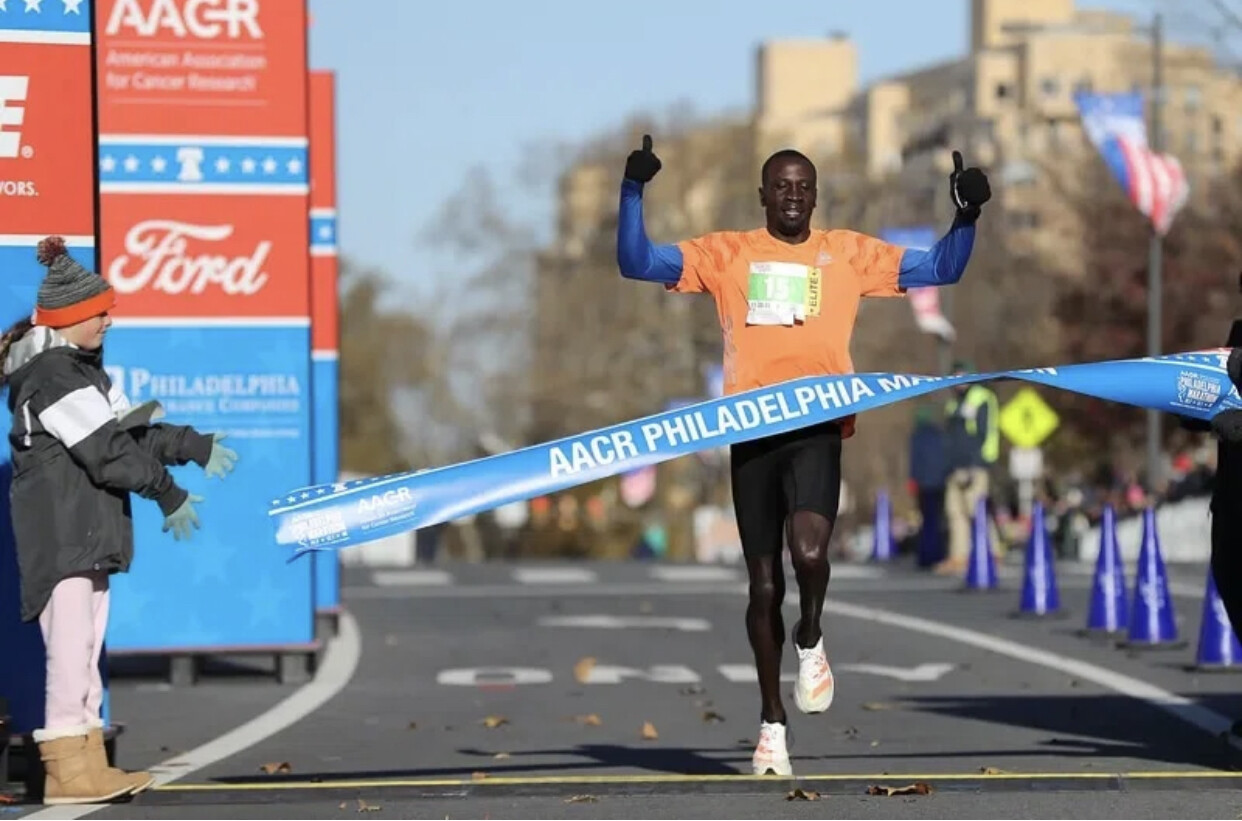
“I had a phenomenal group of people that last half mile before we made that turn up Kelly Drive, and that saved my life,” said women’s winner Amber Zimmerman, who recently moved to the city.
The temperature at the start was 35 degrees, but the wind made it feel like the low 20s. Eleven miles of the marathon were concentrated in Center City, blocking the wind somewhat. However, at the finish, the wind was fierce along Boathouse Row and Kelly Drive.
“The race was good, but there was a lot of wind,” said men’s champion Dominic Ondoro, who thought he was slowing down because of the gusts. “I enjoyed the course.” The Kenyan runner who lives in Texas broke away from the pack in the last few miles, finishing in 2 hours, 14 minutes, 20 seconds, followed by Gilmar Lopes of Brazil and Bernard Kiprop Koech of Kenya.
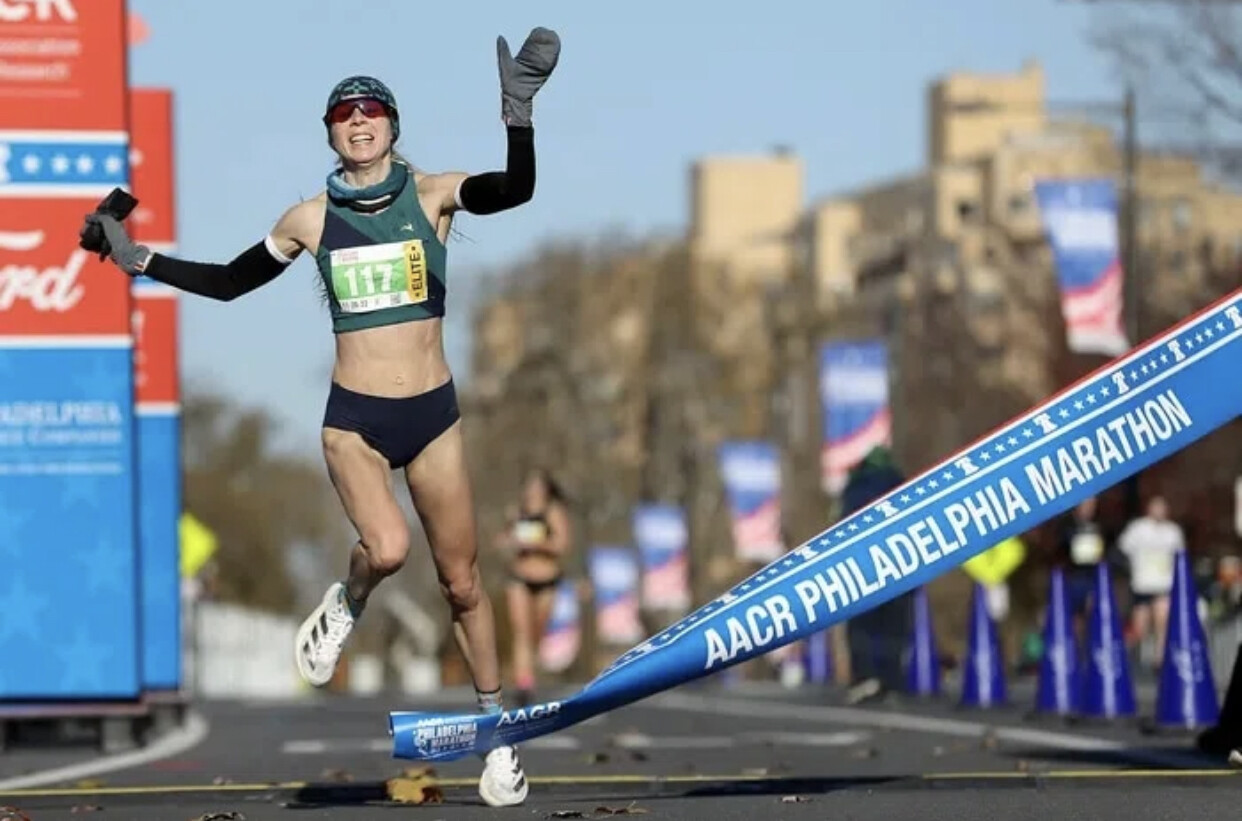
Zimmerman triumphed in 2:31:35, her new personal best. Maegan Krifchin of Long Island was second and Fantu Zewude Jifar of Ethiopia took third.
“They’re great runners and they’re brave runners,” Zimmerman said. “And I thought, you know, I’m going to try to be a brave runner to put myself in it.”
In the first half of the race, Zimmerman said she felt strong but hit a wall in Manayunk where her body started hurting. Nevertheless, she pushed to the finish, knowing that others were close behind. A regular runner since 7 years old, she posted her first win in her new city.
“I was thinking about that this week. I get a little bit teary about it,” she said when asked about her journey. “I really tailored my training. I coached myself and I played around with a lot of harder, longer runs, and that really worked out for me this time. I’ve been trying to make myself tougher.”
First-place finishers take home $10,000, plus an extra $1,000 for Zimmerman as a Philadelphian. What will she spend it on? Her blue heeler Doughnut (an Australian cattle dog), she said, pointing to her socks featuring blue doughnuts.
“He’s really sweet and I told him I was going to run this race for him and I was going to win for him,” Zimmerman, who ran at the University of New Mexico.
This year’s marathon was a notable one for the city, as a nonbinary category was added for the first time. Fifty-five runners registered in the category and race director Kathleen Titus said he believes it will grow in years to come, along with prize money for these athletes as well as para-athletes.
“You look at it and it’s a city of diversity as well as adaptivity,” she said. “... Whatever type of an athlete you are, if you’re a runner, we want you to feel that you can come to Philadelphia and participate as you are, in the ability that you are.”
The city also cheered on its first marathon long boarder, Chris Koch, who completed his 13th marathon. The 40-year-old Canadian was born with a partially developed right leg and foot. Shortly after he pedaled across the finish line, he joked, “I couldn’t feel my fingers the whole time.”
Koch completed his first marathon in 2016. “I guess I’m a glutton for punishment,” he said. “It’s a great challenge. I’m a motivational speaker and I encourage people to keep raising the bar and keep pushing themselves. I don’t want to be just talking the big talk.”
Sporting a Bobby Clarke Flyers jersey and blacked-out front teeth, Koch looked the Philly part. After visiting the city when he was speaking nearby, he decided to add it to his marathon list.
“I literally boarded out Ben Franklin Parkway to the Rocky stairs, climbed up the Rocky stairs,” he said. “... I’ve always found marathons [to be] a neat way to see the city.” Koch plans to attend the Flyers-Calgary Flames game at the Wells Fargo Center on Monday night.
Celebrations are in order for Koch and all the finishers. Runners will travel back home, rewind on the Thanksgiving holiday, and return to the grind soon enough.
When asked if she would be running on Monday, Zimmerman said she is probably going to walk. Probably.
(11/20/2022) ⚡AMPby Bridget Reilly
Philadelphia Marathon and Half
Have the time of your life in 2022 completing 13.11 miles! Runners will start along the Benjamin Franklin Parkway in the cultural Museum District and wind through Philadelphia’s most scenic and historic neighborhoods. From the history-steeped streets of Old City, through one of the liveliest stretches of Center City, across the Schuylkill River...
more...Sarah Biehl delivers historic performance at 60th annual JFK 50
The 60th annual edition of America’s oldest ultramarathon deserved a special performance, and Sarah Biehl (first photo) more than delivered Saturday Nov 19 at the JFK 50 Mile.
Biehl, 28, of Columbus, Ohio, smashed the women’s race, running away with the victory in a course-record time of 6:05:42 while finishing 11th overall. The previous mark of 6:12:00 was set by ultrarunning legend Ellie Greenwood in 2012.
“Oh my gosh, she was a mile ahead of the record Ellie Greenwood set 10 years ago that nobody had come within five minutes of,” JFK 50 Mile director Mike Spinnler said. “You know, and I hate to do this, gender vs. gender, but it may be the greatest performance in JFK history.
“Ellie Greenwood was the world champion, Ellie Greenwood won Comrades, Ellie Greenwood won Western States, and she beat Ellie Greenwood’s record by a mile. And we know how hard Ellie had to run that day to win because she was chased. It’s just remarkable and inspiring. She just missed the top 10 overall, and it was the best men’s field ever. Amazing.”

In his JFK debut, Garrett Corcoran, 26, of Salt Lake City, Utah, won the men’s title in 5:29:47 — the No. 5 performance in race history.
Overall, 966 runners reached the finish line within the 13-hour time limit.
For Biehl, this was her third straight JFK. She was the women’s runner-up last year in 6:22:03 after placing fifth in 2020 in 7:22:32 in her ultramarathon debut.
“At the end of the day, I wanted to win,” Biehl said. “Coming here last year and getting second, that was awesome. But after getting second, you have the goal of winning, so that was my main priority. But I also had the course record in mind, too, and the splits and where I needed to be.”
By the time she came off the rocky Appalachian Trail at 15.5 miles, her lead over second place was over 13 minutes. Over the next 26.3 miles on the C&O Canal towpath, the margin increased to more than 19 minutes, and she only continued to add to it over the final 8.4 miles of paved roads to Springfield Middle School.
“I’m ecstatic right now,” Biehl said. “I’m a little in shock, to be honest.”

Caitriona Jennings (third photo), 42, of Ireland, finished second in 6:28:53 — the JFK’s No. 8 all-time women’s performance and a masters (40-and-over) record.
Jennings competed in the marathon at the 2012 London Olympics and was fresh off two big-time ultramarathon efforts, placing first in the European 50K championships last month after taking third at the 100K World Championships in August.
She went into her JFK debut Saturday with the same goal as Biehl’s — a course-record victory.
“I struggled from the start, pretty much. It just wasn’t my day,” Jennings said. “But fair play to Sarah, she had an absolute stormer. Wow, so impressive, amazing.
“It’s a lovely course. I was hoping I’d enjoy it more,” she added. “For some reason, I just couldn’t settle. It was a harder race than I expected. I’ve had two tough races in the last (few months), but I’m not making excuses. I was beaten fair and square. Maybe I expected too much of myself today. But you win some, you lose some. That’s what sport is. It just makes the good days all the better.”
Shea Aquilano, 21, of Carmel, Ind., placed third in 6:40:40.
Sub-4:00 miler wins men’s title (second photo).
Corcoran, who used to live in Baltimore, retuned to his former home state with some flair — including running shorts with the Maryland flag design.
“Dude, I’m out here, I’ve got the shorts, I’ve got to rep, right?” he said. “I know where I’m at, and I know I’ll get a lot of love for this.”
Corcoran, who ran a 3:59 mile in college, showed that speed kills at any distance.
“It feels like another life when I ran sub-4:00. I was 19 years old,” he said. “It’s been a fun journey. When I graduated from college, I just about hung up the running shoes, and didn’t really know what I was going to do.
“I moved to Baltimore for work, and kind of realized it was the best way to have a good social life, at least for me, so I joined a running club, the Falls Road Running Club, and I made a lot of good friends. And once the pandemic hit, all the races got canceled, and I started dragging a friend of mine in Baltimore on these really long runs. I had so much fun and really got into the ultra distance.
“The JFK was a good excuse to come back and see some friends.”
Corcoran took the lead on the towpath around Mile 31 and never relinquished it.
“There was an aid station at 30.5, and (Matthew Seidel), who ended up getting fourth, he was just ahead of me,” Corcoran said. “He turned around and saw me not far behind him and walked for a little bit and then started running with me. He was like, ‘Hey, let’s run together, man. Let’s work together.’ And then, like a quarter-mile later, I just kind of floated away from him. I was like, ‘I guess it’s me by myself now. Hope nobody catches me.’”
Makai Clemons, 26, of San Diego, closed hard to take second in 5:32:19, finishing less than 3 minutes behind Corcoran after trailing him by more than 9 minutes at the end of the towpath section at 41.8 miles.
“I’ve been watching his training on Strava, and he’s been throwing down some filthy workouts,” Corcoran said of Clemons. “I was telling him after the race that he was one of the guys that was on my radar.”
Preston Cates, 25, of Flagstaff, Ariz., placed third in 5:33.23. Overall, eight men finished under 6 hours, a JFK record.
“Back in my generation, we always wondered what would happen if a 28-minute 10,000-meter runner or a sub-4-minute miler started doing the trails,” said Spinnler, a two-time JFK champ who lowered the course record to 5:53:05 in 1982.
"And now they’re doing it. The prize money, the national teams, the international competitions, it’s all there — all the incentive that wasn’t there a generation ago is there. All of the sudden, the sub-4-minute milers are coming to the sport. We had two of them in the race today, and we also had two Olymians. It’s so exciting for the future of the sport.”
Canadian Reid Coolsaet, a two-time Olympic marathoner, ran near the front before dropping out on the towpath.
(11/20/2022) ⚡AMPby Andy Mason
Eilish McColgan was named Sunday Times Sportswoman of the Year giving her four awards in four days
Eilish McColgan won gold in the women’s 10,000m at this summer’s Commonwealth Games in Birmingham
Eilish McColgan was on Thursday night named Sportswoman of the Year at The Sunday Times Sportswomen of the Year awards, in association with Citi. McColgan won 10,000m gold at the Commonwealth Games in Birmingham during the summer, and in doing so broke the Games record set by her mother, Liz, 32 years earlier.


Elish Twitted "Thank you!!!
This has been such a crazy week. 4 awards in 4 days!
BT Sportswoman, Sunday Times Sportswoman, Scottish Women in Sport Athlete of the Year and now BASC Athlete of the Year! ??
Thank you!"
"One of the most exciting races I have ever watched was the Commonwealth's 10000m when Eilish pulled away over the last stretch to win gold," says MBR publisher Bob Anderson. "I was not there but I have watched that video at least 20 times and for sure will watch it many more times. She is so deserving of all the awards she has received. Well done and we can't wait to watch what's next."
Eilish McColgan (born 25 November 1990) is a Scottish middle- and long-distance runner. She is the 2022 Commonwealth Games 10,000 metreschampion with the Games record, and 5000 metres silver medallist.
McColgan is a four-time European Championships medallist, winning silver medals for the 5000 m in 2018 and 10,000 m in 2022, bronze in the 5000 m in 2022, and a bronze for the indoor 3000 metres in 2017.
She holds the European record in the 10 km road race, and British records for the 5000 m, 5 km and half marathon. She also holds the European best in the 10 miles on the roads.
(11/20/2022) ⚡AMPNew York City Marathon Finisher Ashton Kutcher Is Training His Kids for a 5K
Inspired by his race in the Big Apple, the actor wants to share the sport with his family. Kutcher’s wife, actress Mila Kunis, told People that their kids, Wyatt, 8, and Dimitri, 5, were so inspired cheering for their dad in New York that they wanted to lace up, too.
The kids have already logged a half-mile to kickstart their training. Ashton Kutcher, 44, ran the New York Marathon for Thorn, a charity he started that protects children from trafficking and online child sexual abuse. He raised more than $1 million, part of which came from leading a virtual Peloton series during which he ran alongside celebs, including Kim Kardashian and Kenny Chesney.


He was one of many celebrities to finish the New York City marathon this year.
When asked if Kunis will log miles with her family she told People, “I can lie and be like, ‘Absolutely!’ But I’m not.”As many runners can relate, Ashton Kutcher was feeling the finish-line high after last week’s New York City marathon. Since his sub-4 hour finish, the actor has brought his kids into the running fold by starting to train them for a 5K, according to People.
(11/20/2022) ⚡AMPby Runner’s World


